inbox and environment news: Issue 561
November 6 - 12, 2022: Issue 561
Impacting Pittwater - Have Your Say + Discussions + New Works:
Conservation Zones Review Residents Forum: Resolutions Call For Shift In Criteria Applied, For Keeping Pittwater's Green-Blue Wings Intact, For State Election Candidates To Declare Their Position On Pittwater Community's Stated Expectations - feedback closes December 2nd
Residents Opposed To Rezoning Proposal For 15-17 Mona Street Mona Vale
Narrabeen Education Campus DA Available On Council's Website For Feedback - For Narrabeen Sports High School + Narrabeen North Public School - submissions open until November 21
Proposal For Barrenjoey Lighthouse Cottages To Be Used For Tourist Accommodation Open For Feedback - Again - feedback open until November 22nd
Avalon Beach Village Shared Space Timeline For Works Made Available - works commenced
More Spring Birds News From BirdLife Australia: Another Record-Breaking, Non-Stop Flight By A Bar-Tailed Godwit + Call For Australian Painted-Snipe Australasian Bitterns Records
Another record-breaking, non-stop flight by a Bar-tailed Godwit
Back in 2007 — possibly for the first time ever — a Bar-tailed Godwit hit the headlines, after a bird, known as E7, was recorded flying non-stop from Alaska to New Zealand — a journey of more than 11,500 kilometres, in 11 days. It was a world record, with the information made available via a tiny satellite transmitter attached to the bird’s back.
Although E7’s globetrotting feat was widely acclaimed around the world, and stood unsurpassed for years, the record has been broken a number of times since then by another Bar-tailed Godwit with a transmitter.
And in 2022, the record has fallen yet again, to another godwit, a juvenile this time, which flew an even more astonishing distance of 13,560 kilometres from Alaska to Ansons Bay, on the north-eastern coast of Tasmania. That distance is longer than E7’s epic journey — much longer — by around 2000 kilometres (to put it into perspective, the extra stretch it covered is about the same as the distance between Melbourne and Townsville).
And this non-stop flight was completed in just 11 days. Indeed, this bird had ample opportunities to stop over for a feed and a rest on a number of tropical islands as it winged its way across the Pacific Ocean, but chose to keep on flapping instead.
Like most of the migratory shorebirds that we see in Australia, Bar-tailed Godwits migrate annually between their breeding grounds in the northern hemisphere — which are usually in the tundra of either Siberia or Alaska — to their non-breeding areas in Australia and New Zealand.
It’s been said that the total cumulative distance flown over a lifetime by a Bar-tailed Godwit on its annual migration between Australasia and the northern hemisphere would equate to flying to the Moon and back.
It seems that at least one godwit may be aiming for the stars…
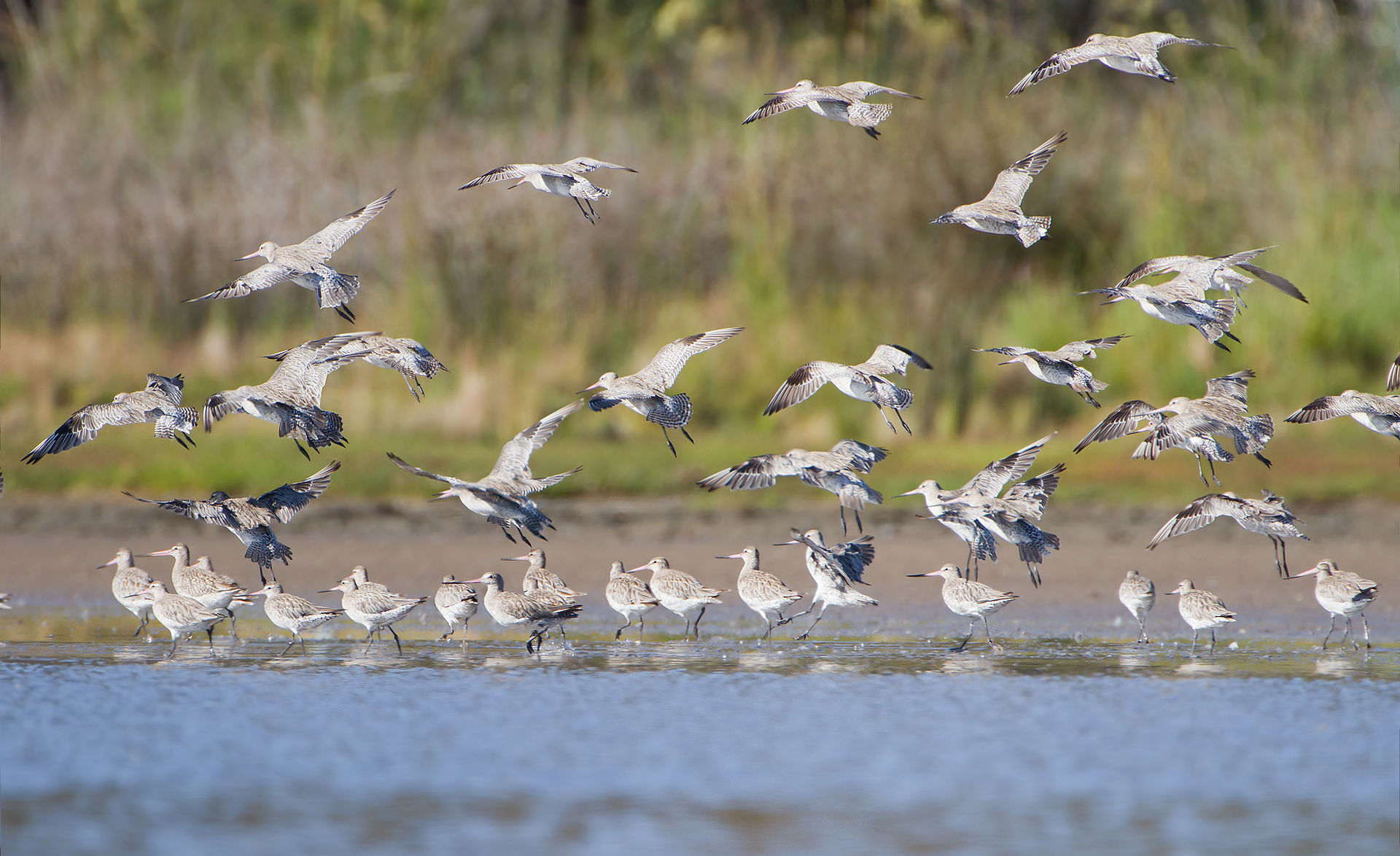
L. l. baueri in Tasmania, Australia (note the barring on the tail). Photo: JJ Harrison
Searching for the wetland ghosts: A call for Australian Painted-Snipe records
The current wet conditions are perfect for Australian Painted-Snipe, and BirdLife Australia is keen to hear about any sightings you’ve made, whether recent or dating back a while.
In the wake of Halloween, we’re asking our observers: have you been seeing ghosts? The Endangered Australian Painted-Snipe is one of Australia’s rarest wetland birds. One of the hardest birds to find. One of the skulkiest birds around. One of the most silent birds. A bird that one can never expect to see but will always send shivers down your spine when you do.
Only described as an Australian endemic species in the last 20 years, there is so much about Painted Snipe that still remains a mystery. With an enormous range, nomadic nature, cryptic plumage and a penchant for silently floating through Australia’s marshes when spooked, it’s little wonder we receive so few sightings.
After the devastatingly dry 2018–19, back-to-back La Niña years have recharged Australia’s complex floodplains, creating shallow wetland habitats from the Roebuck Plains to Gippsland’s irrigation drains. Similar conditions in 2011 saw a flurry of Painted Snipe observations as birds reacted to the pulse in resources by breeding and dispersing across the continent. As these wetlands gradually dried out, the birds became more concentrated around some wetlands, much to the pleasure of the nation’s birders. However, in the last five years or so, the ghosts have gone missing once again.
Do you have any records of Australian Painted-Snipe in your notebooks or photo albums? Have you heard stories around the campfire? If so, we’d love to know. Please contact chris.purnell@birdlife.org.au to help us unravel the mystery.
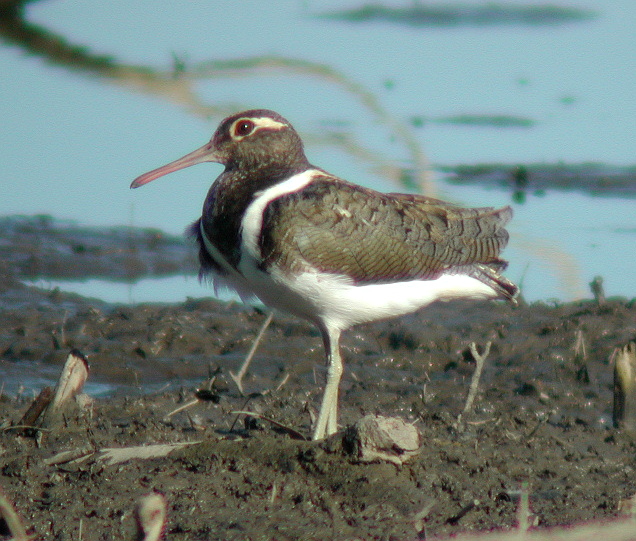
Australian Painted-snipe Rostratula australis Female. Photo: Aviceda
In anticipation of another good breeding event, we would also love you to keep an eye out for Australian Painted-Snipe. Click here for information on how to complete a survey. And while you’re looking for ghosts, be wary of and please report and bunyips (Australasian Bitterns) too.
Community Invited To Have A Say On Draft Management Plan For Flying-Foxes
Northern Beaches Council has released a draft plan for the management of flying-foxes in colonies in Balgowlah, Avalon and Warriewood and is encouraging the community to have their say.
The 5-year draft management plan sets out a three-tiered management approach with a focus on:
- routine reserve maintenance (e.g. mowing, path maintenance, revegetation, weed control, hazardous tree management)
- support for affected residents
- community education
- maintenance of existing buffers between properties and flying-foxes
- habitat restoration in less populated areas.
CEO Ray Brownlee said the draft strategy sought to balance the need to protect flying-foxes as a threatened species while reducing their impact on residents who live near the camps.
“As a species in decline across Australia and listed as threatened by the State and Federal governments, we have an obligation to ensure they are protected.
“This species plays an important role in pollinating our forests, so it's crucial we do our bit.
“However, we recognise that there can be impacts on people living near flying-fox camps.
“The draft plan seeks to minimise those impacts by maintaining buffer zones, offering support to residents and providing alternative habitat in less populated areas.
“We welcome feedback on the draft plan and encourage residents to have their say.”
The draft plan will be on exhibition until Sunday 20 November 2022. Residents can learn more, book a meeting with a Council officer, or attend the online information session on 10 November, and make a submission here: https://yoursay.northernbeaches.nsw.gov.au/flying-fox-camp-management-plan
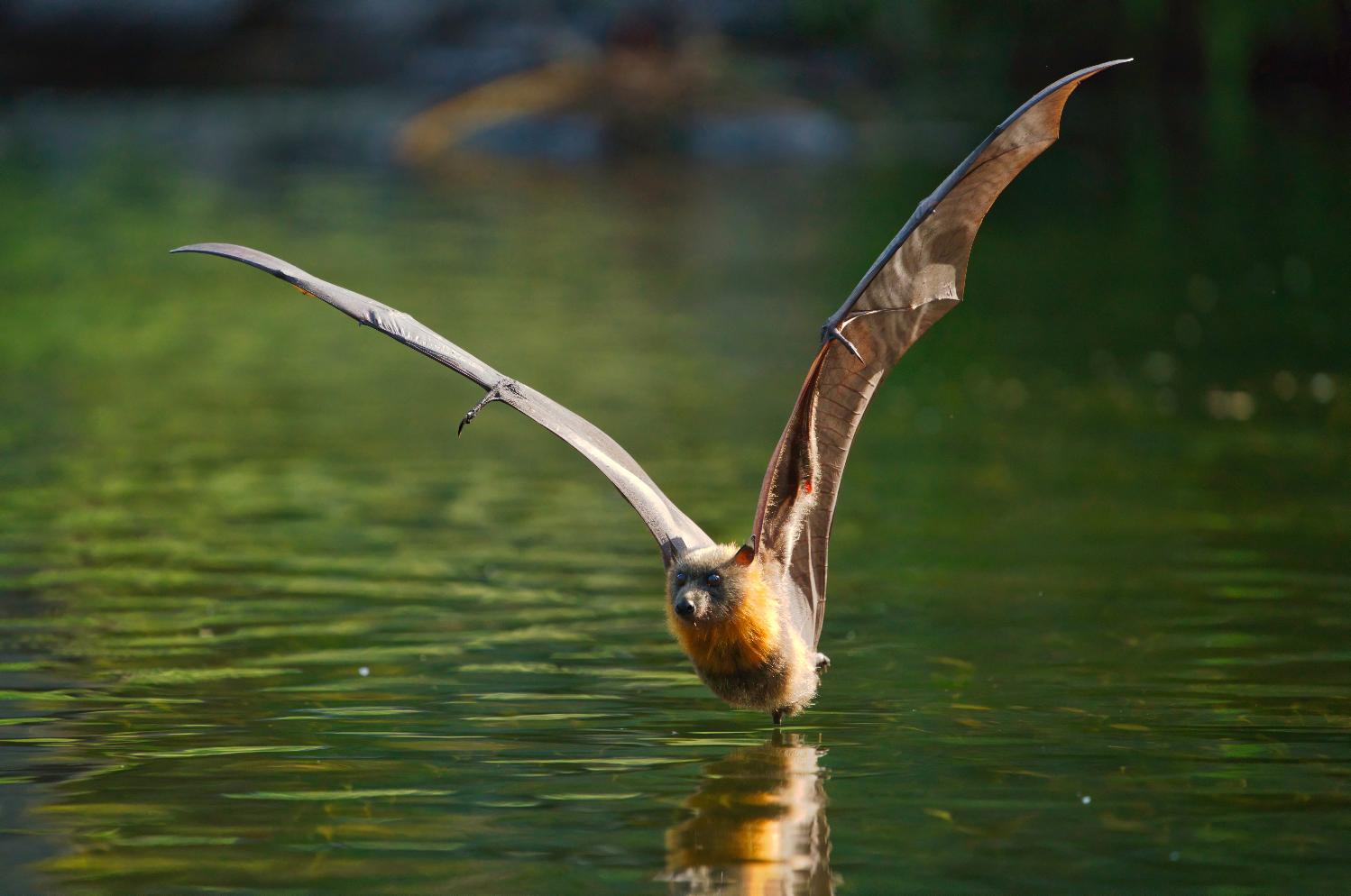
Mickey Mouse Plant Flowering In Warriewood Wetlands
Residents have reported this week that the Mickey mouse plant, Ochna serrulata (commonly known as the small-leaved plane, bird's eye bush, Mickey mouse plant or Mickey Mouse bush due to the plant's ripe blackfruit, which upside down resembles the ears of Mickey Mouse, and bright-red sepals, which resembles his trousers) has been seen flowering in Warriewood wetlands.
This plant is a weed when seen locally.
The plant is native to the forest areas of South Africa. It occurs throughout the country, from Cape Town in the south, along the east coast as far as Kwazulu-Natal, and inland through Eswatini and Gauteng. This tough, adaptable shrub grows in sunny, open positions as well as in the shade of deep forest.
It has been widely cultivated outside of South Africa as an ornamental garden plant, and has become a weed in New South Wales and southern Queensland in eastern Australia, where it is found near human habitation in and around large towns and cities.
Ochna comes into flower in Spring. Once established, Ochna plants are extremely difficult to kill, and produce copious numbers of shiny black berries which are spread prolifically by birds, foxes and other pests and wildlife.
Once Ochnas finish flowering, the yellow petals fall off, revealing the calyx and berries. The calyx turns bright red, and the berries ripen from light green to glossy black.
It is best to hand-pull seedlings, though this is notoriously hard to do from a surprisingly small size. Ochna plants grow with a tough, kinked root that snaps off, leaving the taproot in the ground to re-grow.
When Ochnas are too difficult to pull out, the most effective way to control them is to "scrape and paint" the stem with herbicide.
First, collect any berries from the plant and dispose of them in the bin.
Then, using a sharp knife, scrape the top layer of the bark away, exposing the green stem below. This should be done along the stem, as far down the root and up the main stem as possible.
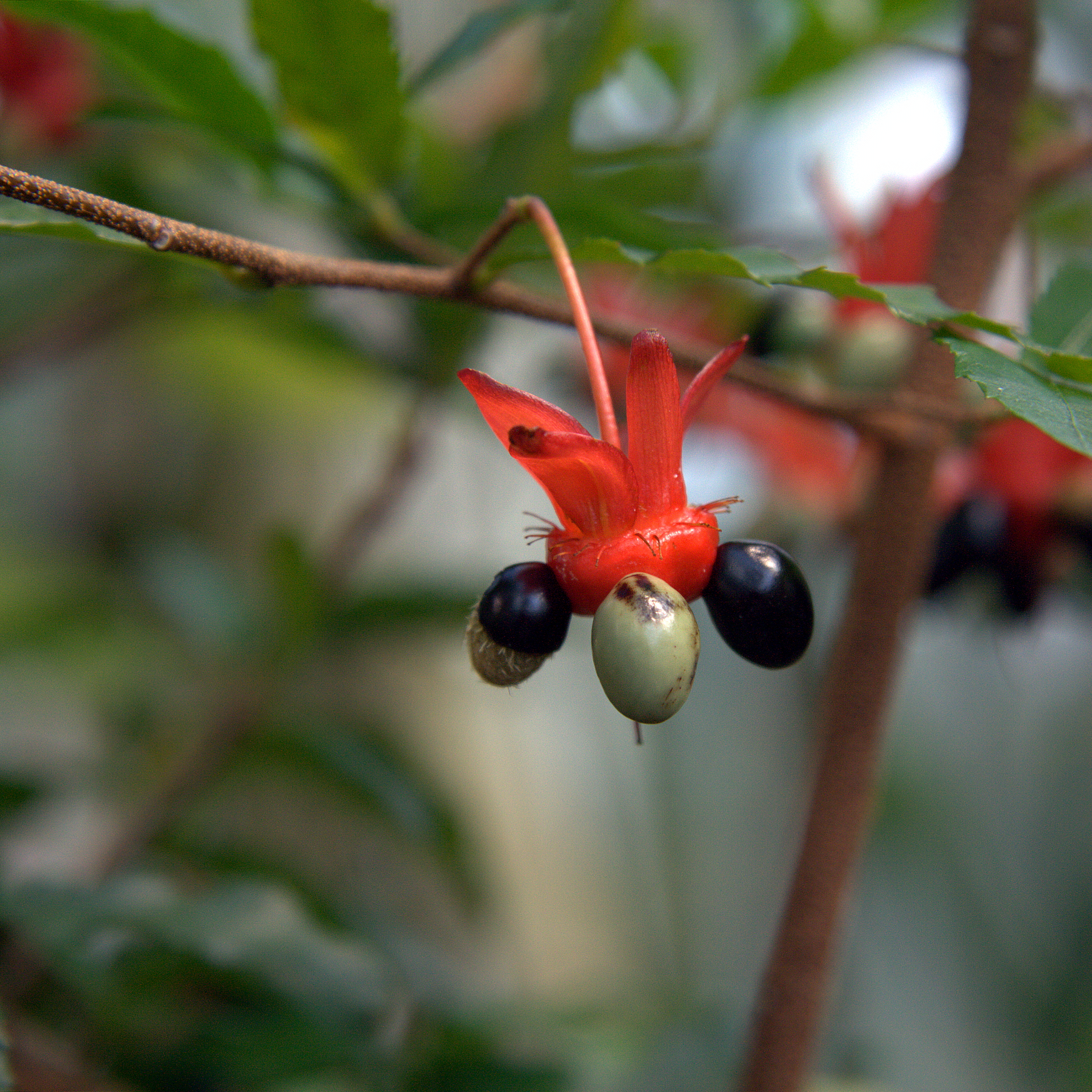
photo: Ochna serrulata with fruits and the bright-red sepals that resemble the ears and trousers of Mickey Mouse. Photo: C T Johansson.
Weed Small-Leafed Privet Flowering Now; Cut Flower Heads To Prevent Seeding
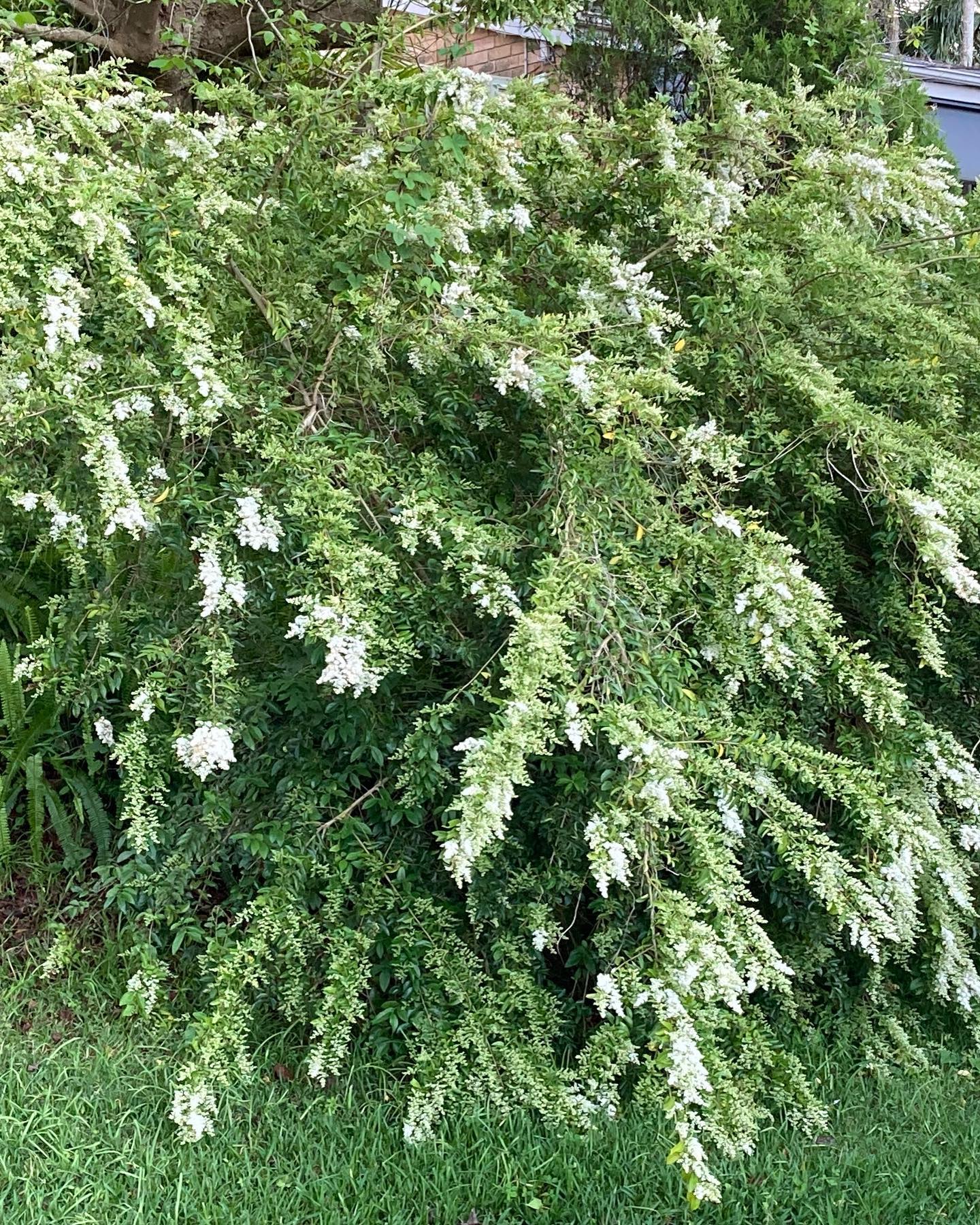
Living Ocean Careel Bay Plastics Study
Tuesday November 1, 2022
The Living Ocean No Plastic Please team conducted another AUSMAP survey of the Careel Bay eastern foreshore today.
We conduct one of these each month to gather data on ocean bound waste. AUSMAP micro plastics and Tangaroa Blue macro plastics and other waste.
This year long survey of the same site will reveal data on accumulation over a year, whats coming into the system and what climate factors are involved in its accumulation.
Interesting that one resident commented "not much plastic here". Well have a look at what we found. Its everywhere once you look closely.
Thanks to our volunteers as ever.

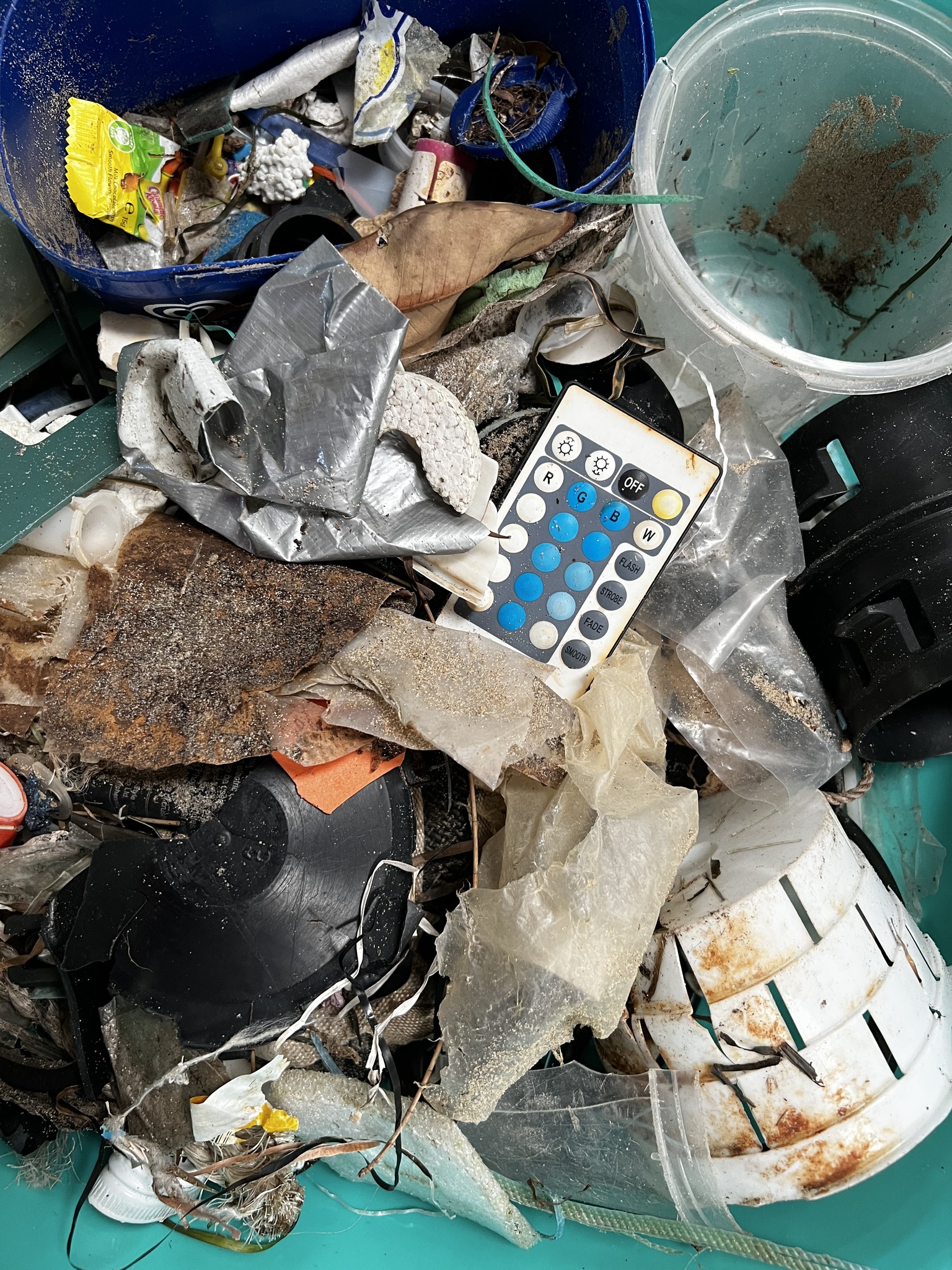
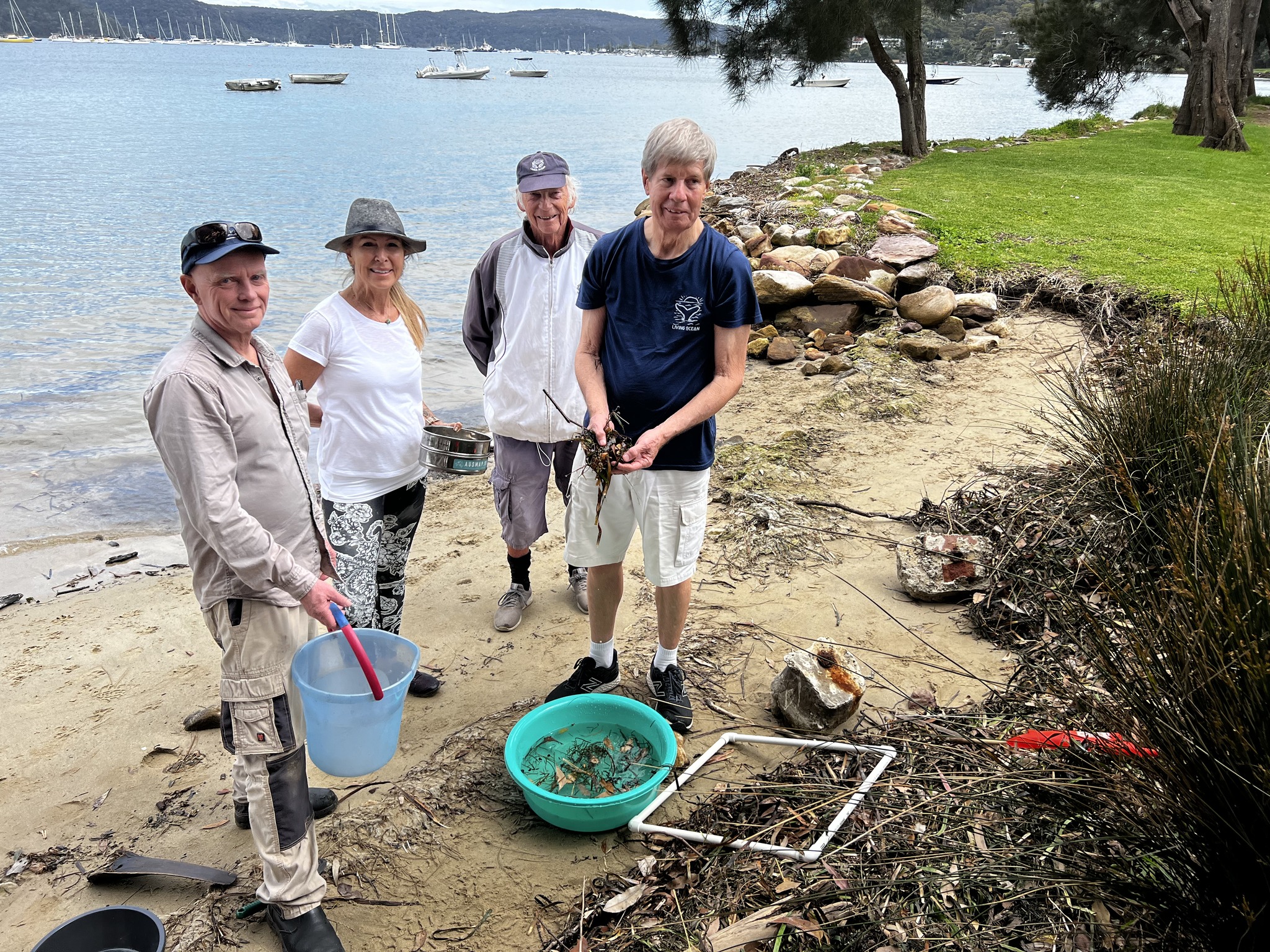
Photos: Living Ocean
To find out more or get involved please visit; Careel Multi Layered Coastal Assessment CMCA
Friends Of Dee Why Lagoon
3.11.2022: Clear skies and our supervisor, Peter Z., was back. We concentrated on the onion weed in Zone D - continuing from where we left off. Unfortunately, still not all removed. To make matters worse there is a jumping ants nest right next to the last batch of onion weed.
You want to avoid getting bitten, especially if you are reactive to their bite. Their nest has been marked with red and white tape.
In our Zone F the male Brush Turkey has been busy creating a lovely big hole in our compost area ready for his females to lay eggs. He'll be very busy making sure the temperature of the 'nest' is the right temperature.
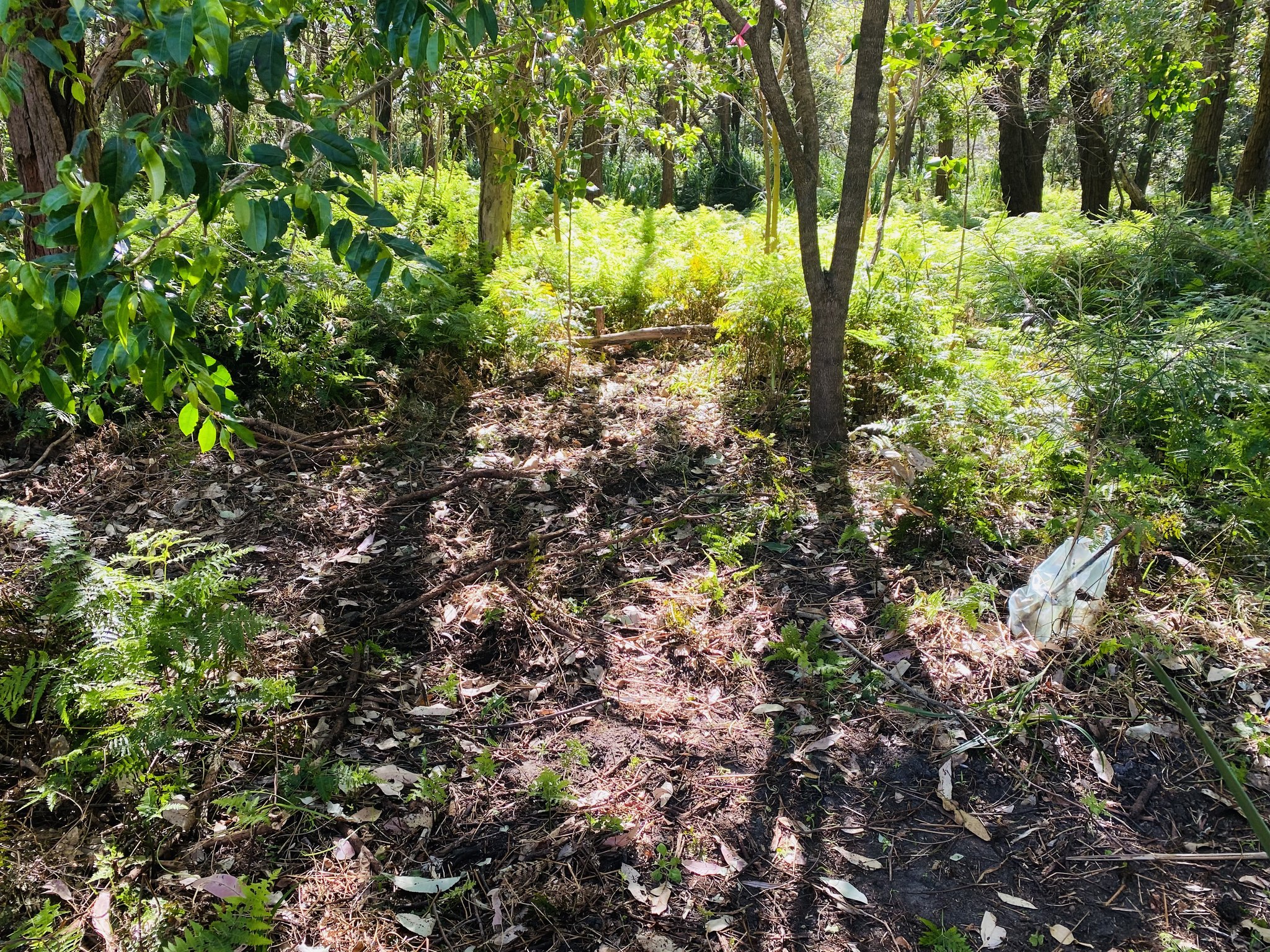
About
Formed in 1980, the Friends of Dee Why Lagoon are dedicated to the conservation and rehabilitation of the Lagoon waterbody and the surrounding Wildlife Refuge. As well as promoting the value of preserving the Lagoon in its natural state, the Friends work actively in bush re-generation via a weekly group (Thursday 7 - 9am) and the third Sunday of each month (9 - 12 noon).
If you would like to become a member in any capacity, please contact us via our FB page: https://www.facebook.com/profile.php?id=100080821322584
Current issue(s)
Inadequate control of sediment flow to the Lagoon from building sites in the Dee Why Town Centre.
Photo: Friends of Dee Why Lagoon
Gardening With Brush Turkeys: November 24 At Narrabeen - PNB End Of Year Event
THURSDAY, 24 NOVEMBER 2022 FROM 19:30-21:00
Hosted by Permaculture Northern Beaches
At: Tramshed Arts and Community Centre
Spring is well and truly here and so are the brush turkeys. We are very lucky to have turkey expert, Dr Ann Goeth, author of “Mound Builders”, deliver this month’s PNB talk. Ann will provide her unique insights into the life of brush turkeys and help us uncover fascinating facts about their foraging habits, breeding, and why they build such large mounds. She will also give tips on how to deal with them in the garden.
Come and see and hear a different side of one of our most common garden visitors.
This is our last meeting for the year for PNB and we will be celebrating all that has gone before us in 2022 and welcoming in 2023. If you would like to bring some snacks and non-alcoholic drinks to share with other members on the night for our end-of-year gathering.
Entry is by donation to help pay for room hire.
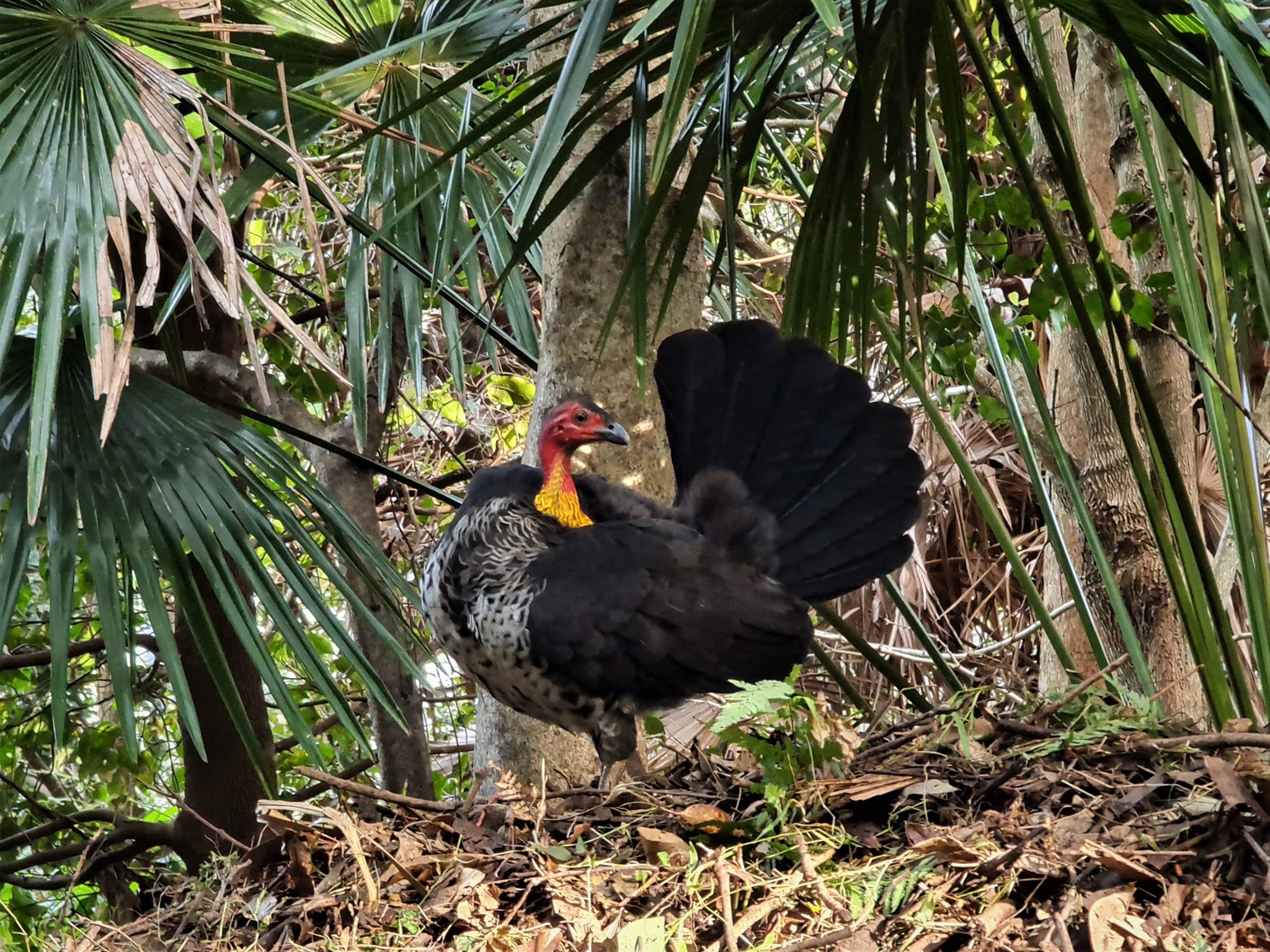
Photo: Joe Mills
Northern Beaches Clean Up Crew South Curl Curl Beach Clean Up: Sunday November 27
Northern Beaches Clean Up Crew, meets the last Sunday of every month at 10am on Sydney's northern beaches. We update our location every month. Come and join us for our South Curl Curl clean up. It will be our last clean up this year, because the last Sunday in December falls on Christmas Day. We'll meet in the grass area, close to the beach - see the map on our website or social media. For exact meeting point look at the map or type in "75 Carrington Parade, Curl Curl in NSW" - we'll be at opposite that address.
We have clean and washed gloves, bags and buckets. We'll clean up the surrounding area and the beach, to try and catch the litter before it hits the beach, trying to remove as much plastic, cigarette butts and rubbish as possible.
The ones in the crew that are certified wildlife rescuers will also look for an entangled seagull that has been reported needing help.
We're a friendly group of people and everyone is welcome to this family friendly event (just leave political, religious and business messages at home so everyone feel welcome). It's a nice community - make some new friends and do a good deed for the planet at the same time. Send us a message if you are lost - email or on our social media. Please invite family and friends and share this event.
We meet at 10am for a briefing. Then we generally clean between 60-90 minutes. After that, we sort and count the rubbish so we can contribute to litter research. We normally finish around 12.30 when we go to lunch together (at own cost). Please note, we completely understand if you cannot stay for the whole event. We are just grateful for any help we can get. No booking required. Just show up on the day. Looking forward to meeting you at South Curl Curl beach.
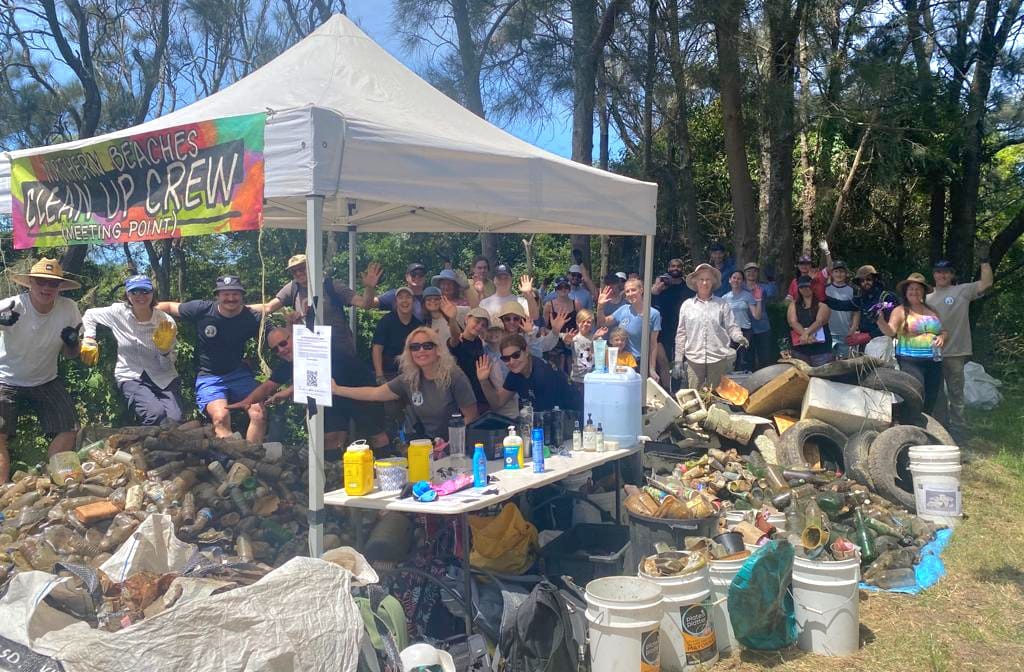
Single-Use Plastics Ban In NSW Commences November 1st, 2022
- serving utensils such as salad servers or tongs
- items that are an integrated part of the packaging used to seal or contain food or beverages, or are included within or attached to that packaging, through an automated process (such as a straw attached to a juice box).
- meat or produce trays
- packaging, including consumer and business-to-business packaging and transport containers
- food service items that are an integrated part of the packaging used to seal or contain food or beverages, or are including within or attached to that packaging, through an automated process (such as an EPS noodle cup).
- polyethylene (PE)
- polypropylene (PP)
- polyethylene terephthalate (PET)
- polymethyl methacrylate (PMMA)
- nylon (PA).
- carrying on an activity for commercial purposes. For example:
- retail businesses like a restaurant, café, bar, takeaway food shop, party supply store, discount store, supermarket, market stall, online store, and packaging supplier and distributor, and any other retailer that provides these items to consumers.
- a manufacturer, supplier, distributor or wholesaler of a prohibited item
- carrying on an activity for charitable, sporting, education or community purposes. For example, a community group, not-for-profit organisation or charity, including those that use a banned item as part of a service, for daily activities or during fundraising events.
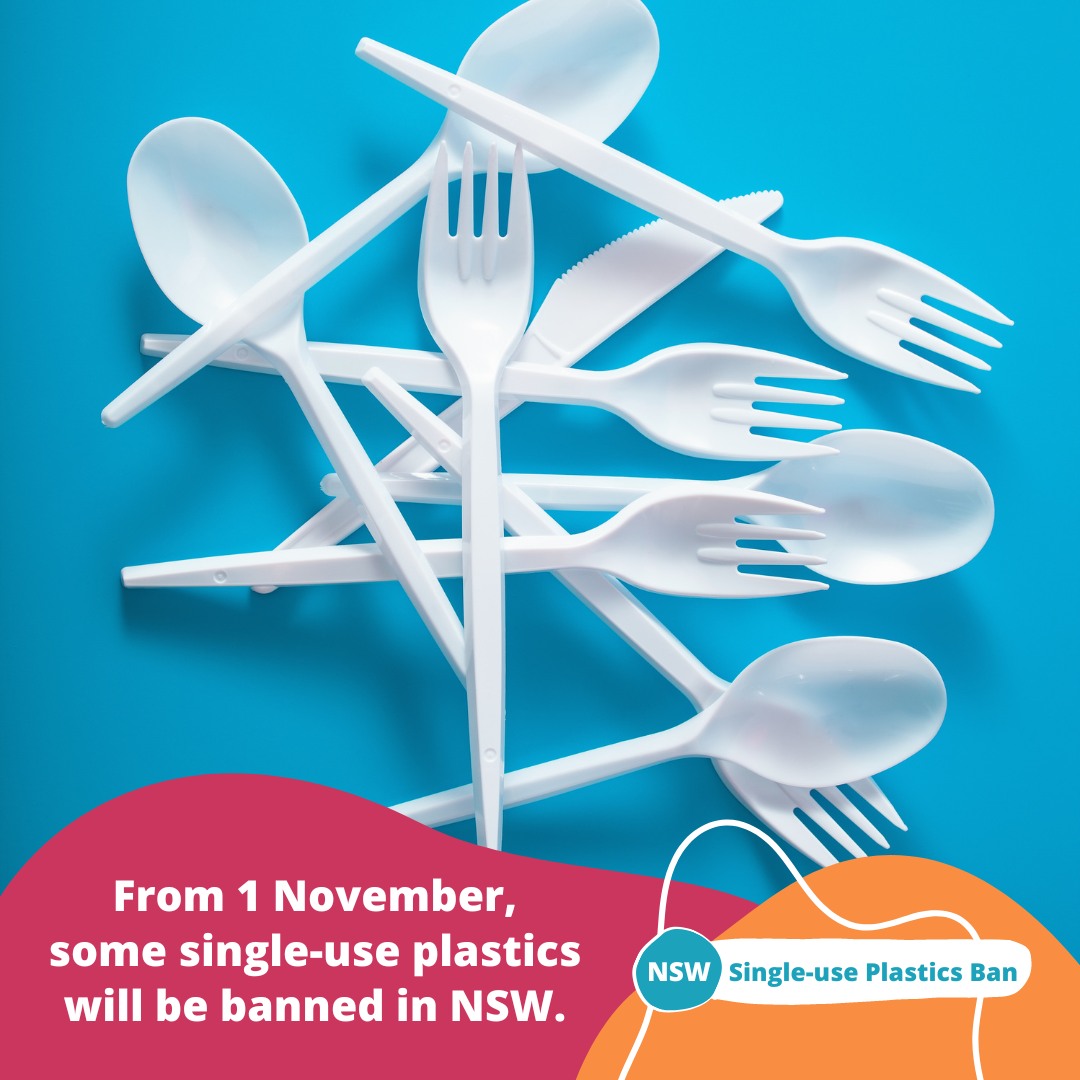
From 1 June 2022 The Following Was Banned:
- barrier bags such as bin liners, human or animal waste bags
- produce bags and deli bags
- bags used to contain medical items (excluding bags provided by a retailer to a consumer used to transport medical items from the retailer).
Help Needed To Save Sea Turtle Nests As Third La Nina Summer Looms
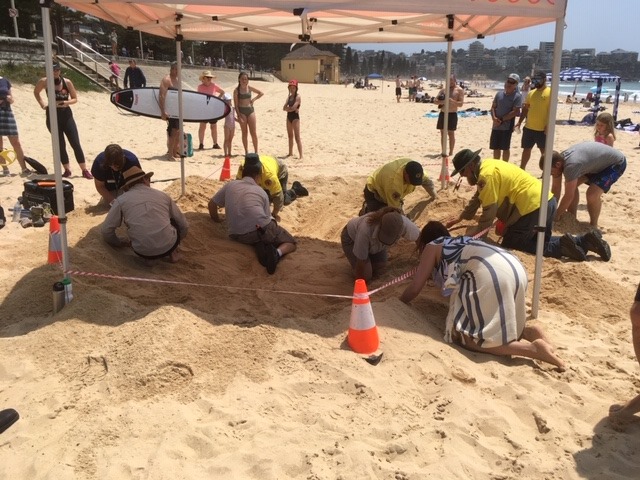
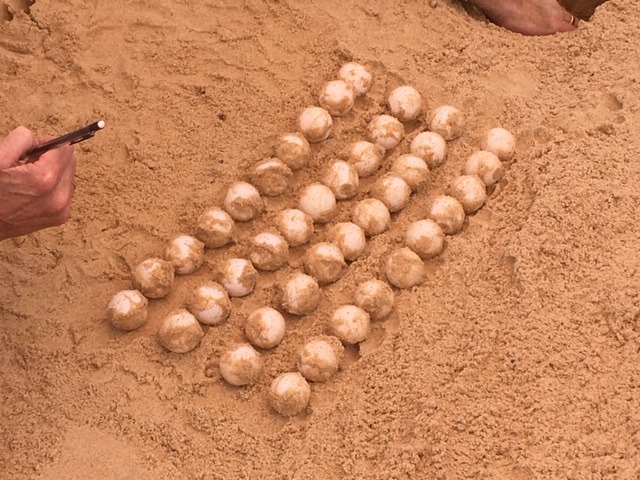
Save Sydney's Koalas Petition
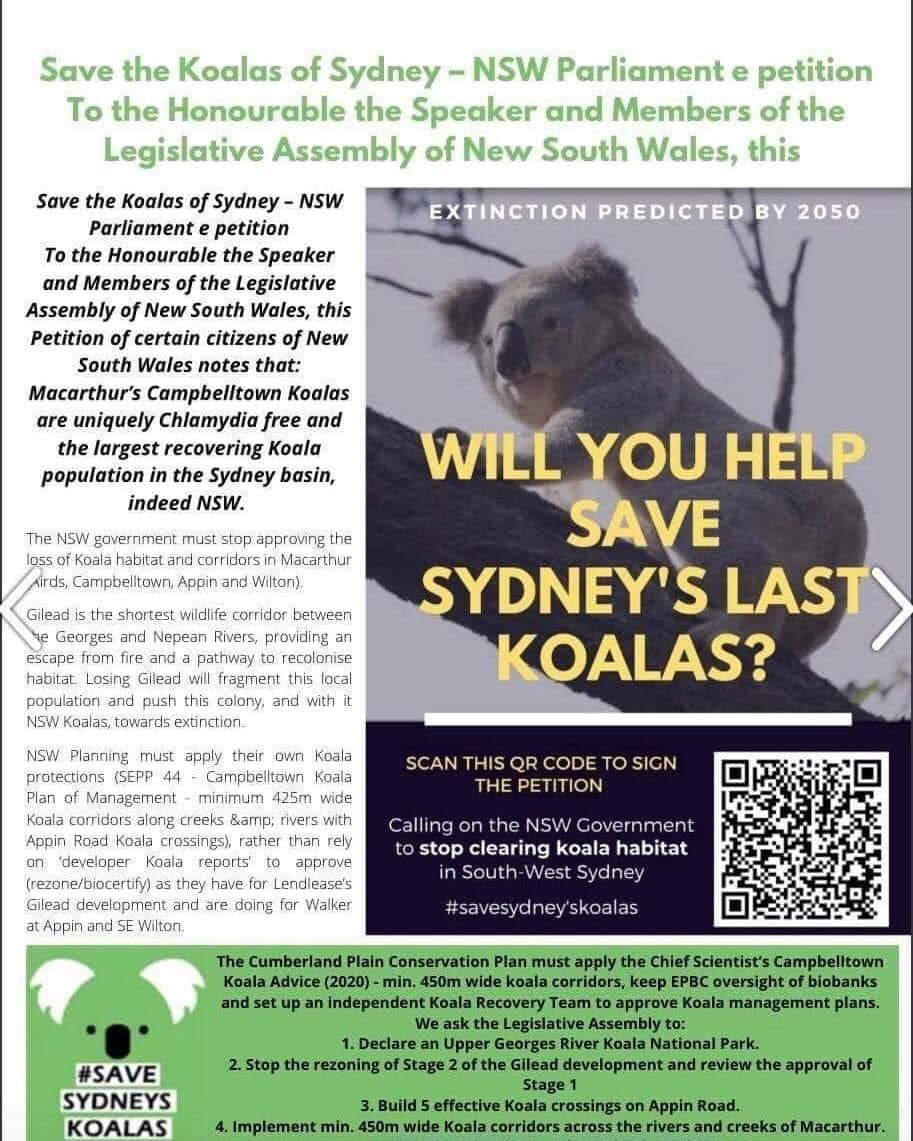
Watch Out - Shorebirds About
.JPG.opt1460x973o0,0s1460x973.jpg?timestamp=1663629195339)
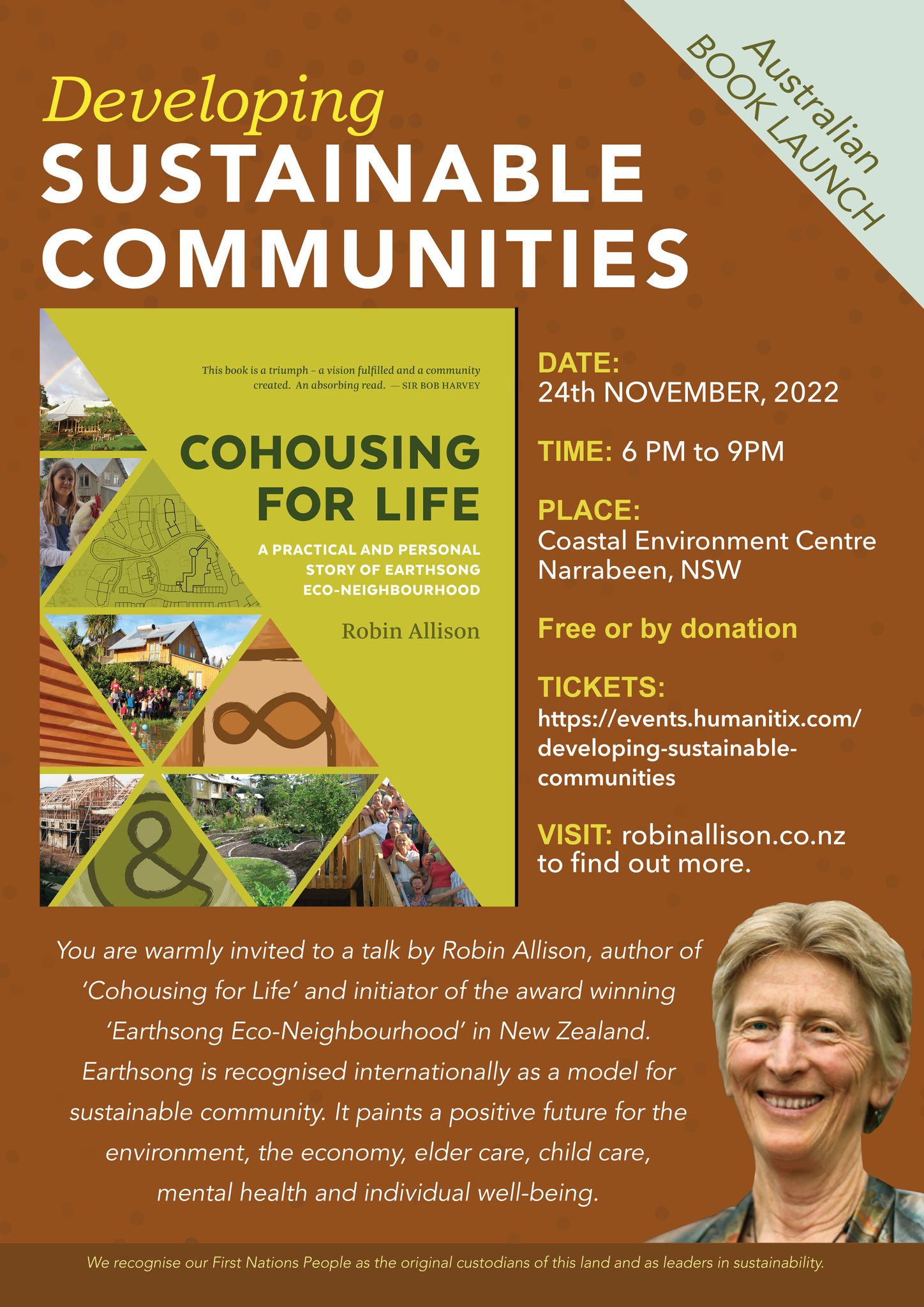
TALK & BOOK LAUNCH
Book Your Free Ticket To: Developing Sustainable Communities
Weed Alert: Corky Passionflower At Mona Vale + Narrabeen Creek
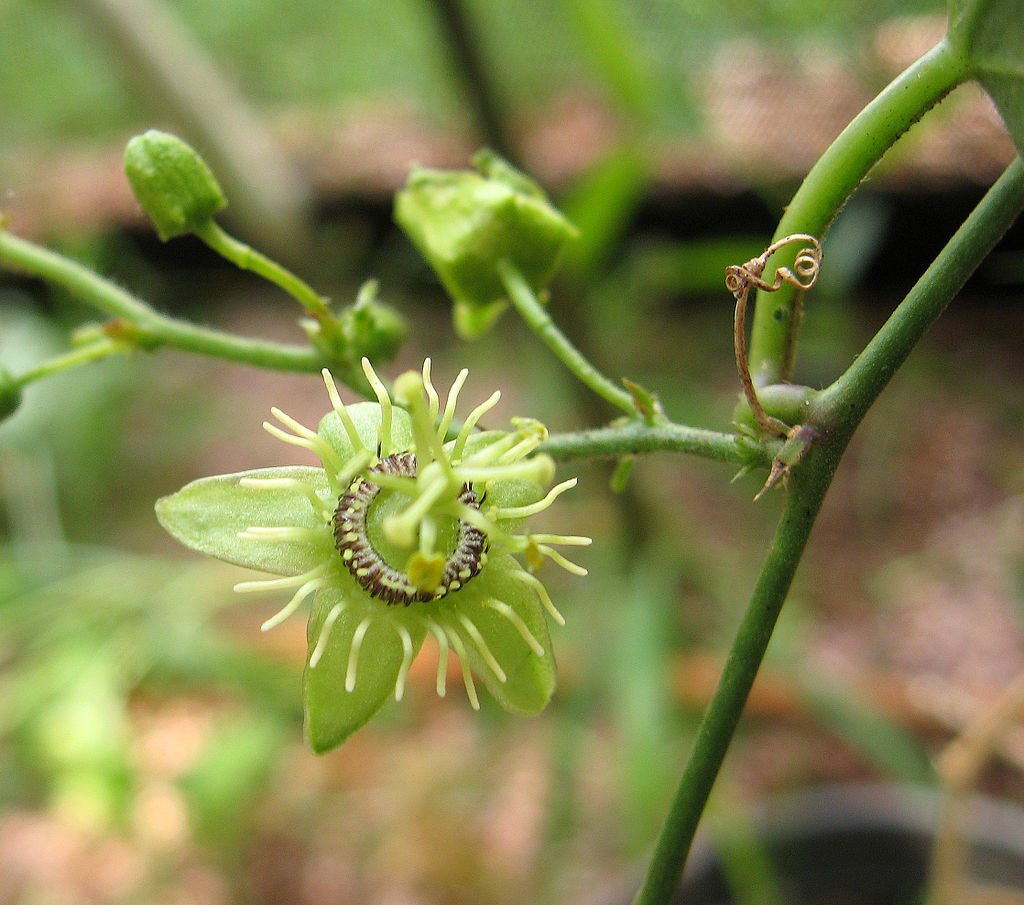
.jpg?timestamp=1663392221562)
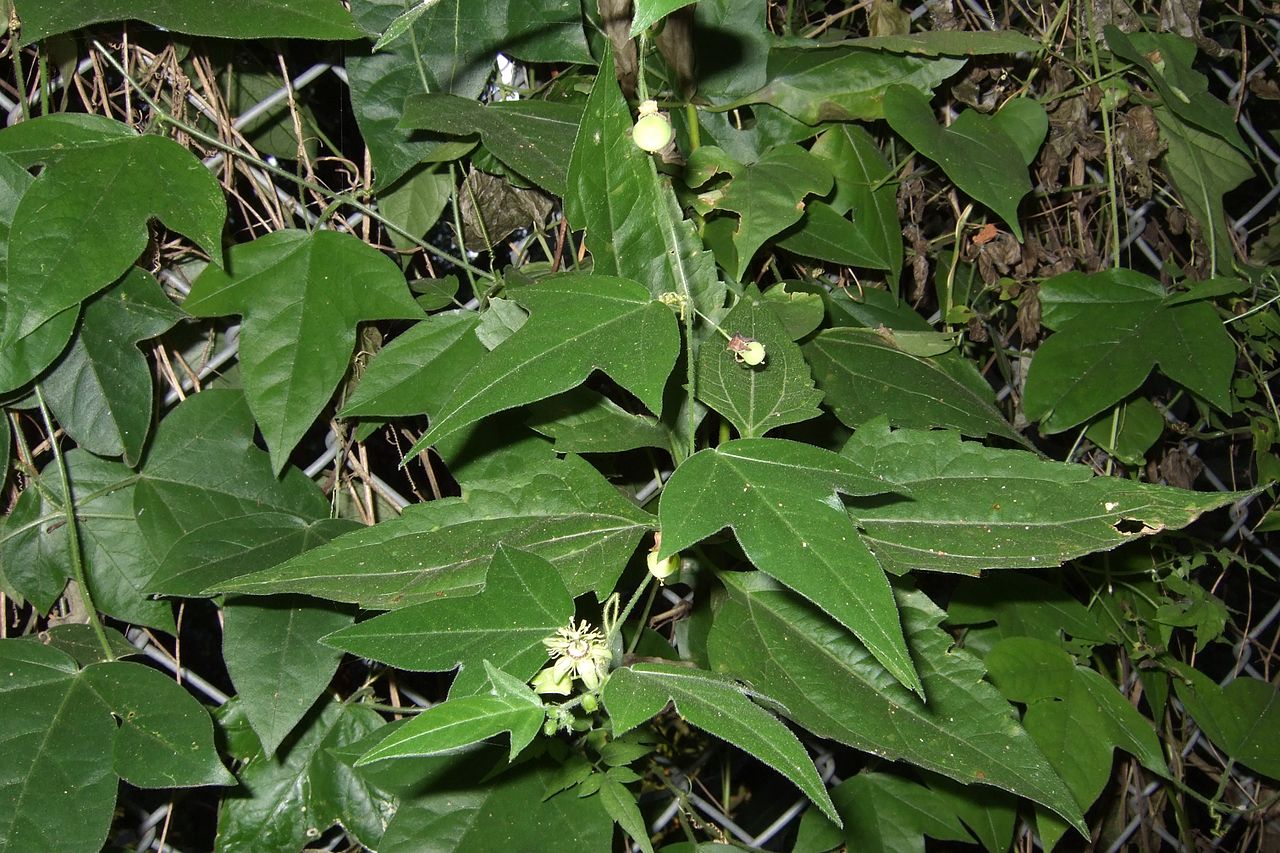
Wanted: Photos Of Flies Feeding On Frogs (For Frog Conservation)
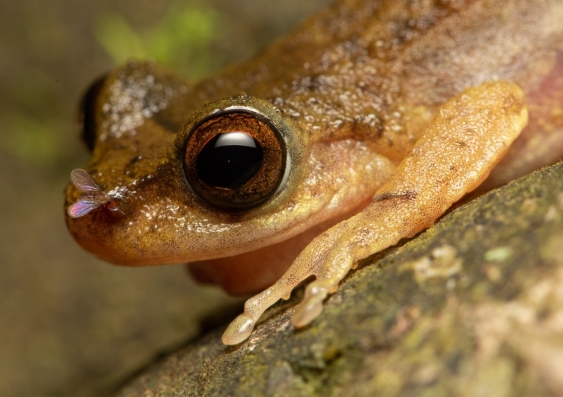
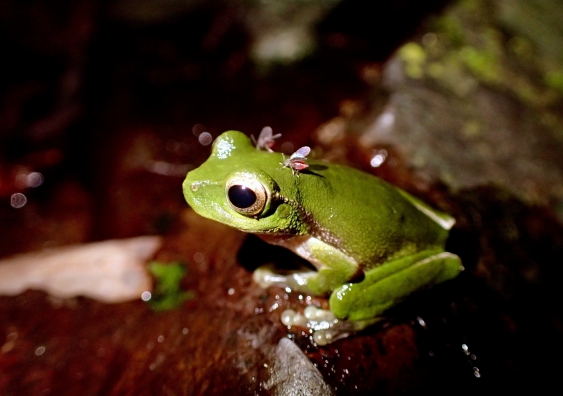
Possums In Your Roof?: Do The Right Thing
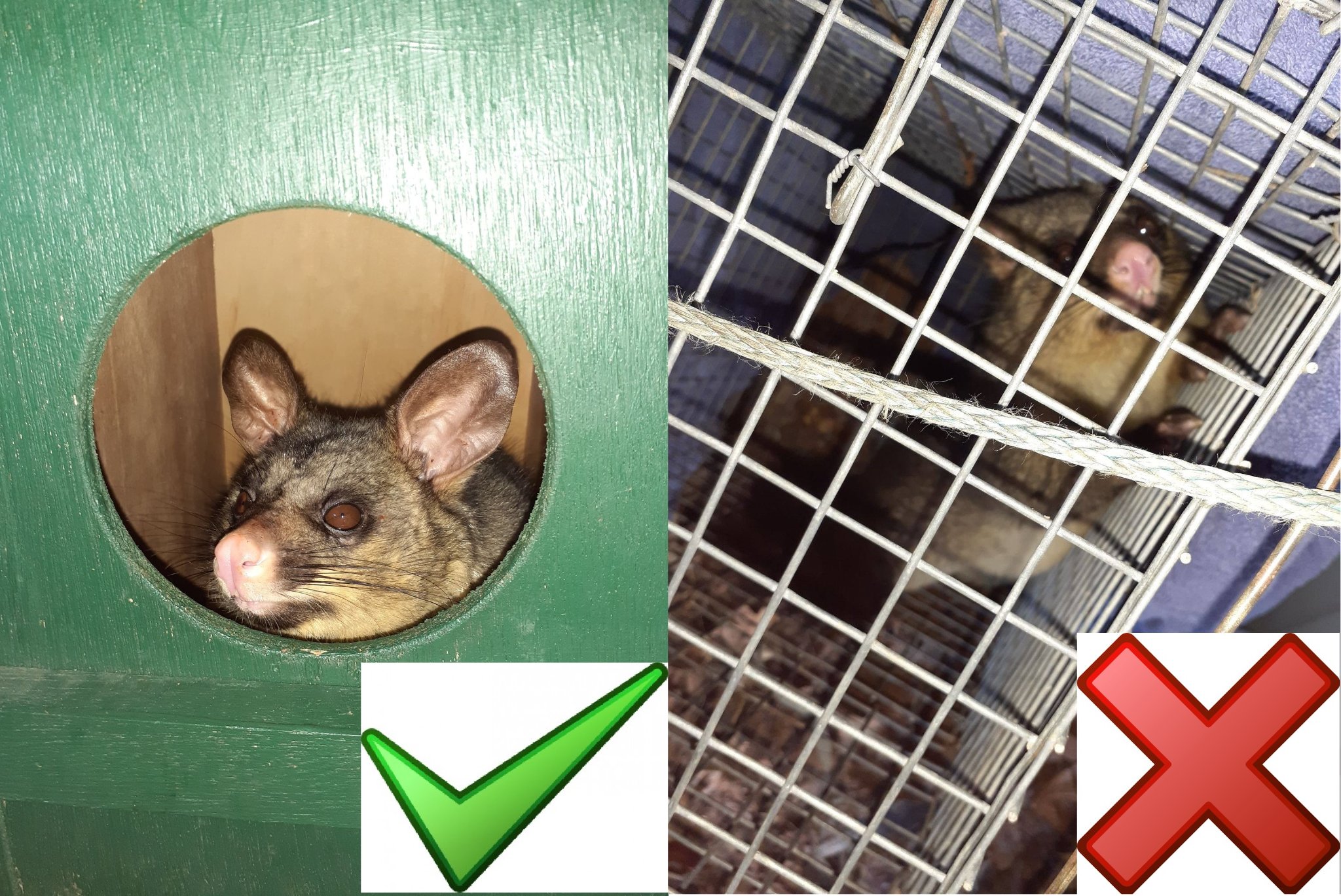
Local Wildlife Rescuers And Carers State That Ongoing Heavy Rains Are Tough For Us But Can Be Tougher For Our Wildlife:
- Birds and possums can be washed out of trees, or the tree comes down, nests can disintegrate or hollows fill with water
- Ground dwelling animals can be flooded out of their burrows or hiding places and they need to seek higher ground
- They are at risk crossing roads as people can't see them and sudden braking causes accidents
- The food may disappear - insects, seeds and pollens are washed away, nectar is diluted and animals can be starving
- They are vulnerable in open areas to predators, including our pets
- They can't dry out and may get hypothermia or pneumonia
- Animals may seek shelter in your home or garage.
You can help by:
- Keeping your pets indoors
- Assessing for wounds or parasites
- Putting out towels or shelters like boxes to provide a place to hide
- Drive to conditions and call a rescue group if you see an animal hit (or do a pouch check or get to a vet if you can stop)
- If you are concerned take a photo and talk to a rescue group or wildlife carer
There are 2 rescue groups in the Northern Beaches:
Sydney Wildlife: 9413 4300
WIRES: 1300 094 737
Please be patient as there could be a few enquiries regarding the wildlife.
Generally Sydney Wildlife do not recommend offering food but it may help in some cases. Please ensure you know what they generally eat and any offerings will not make them sick. You can read more on feeding wildlife here
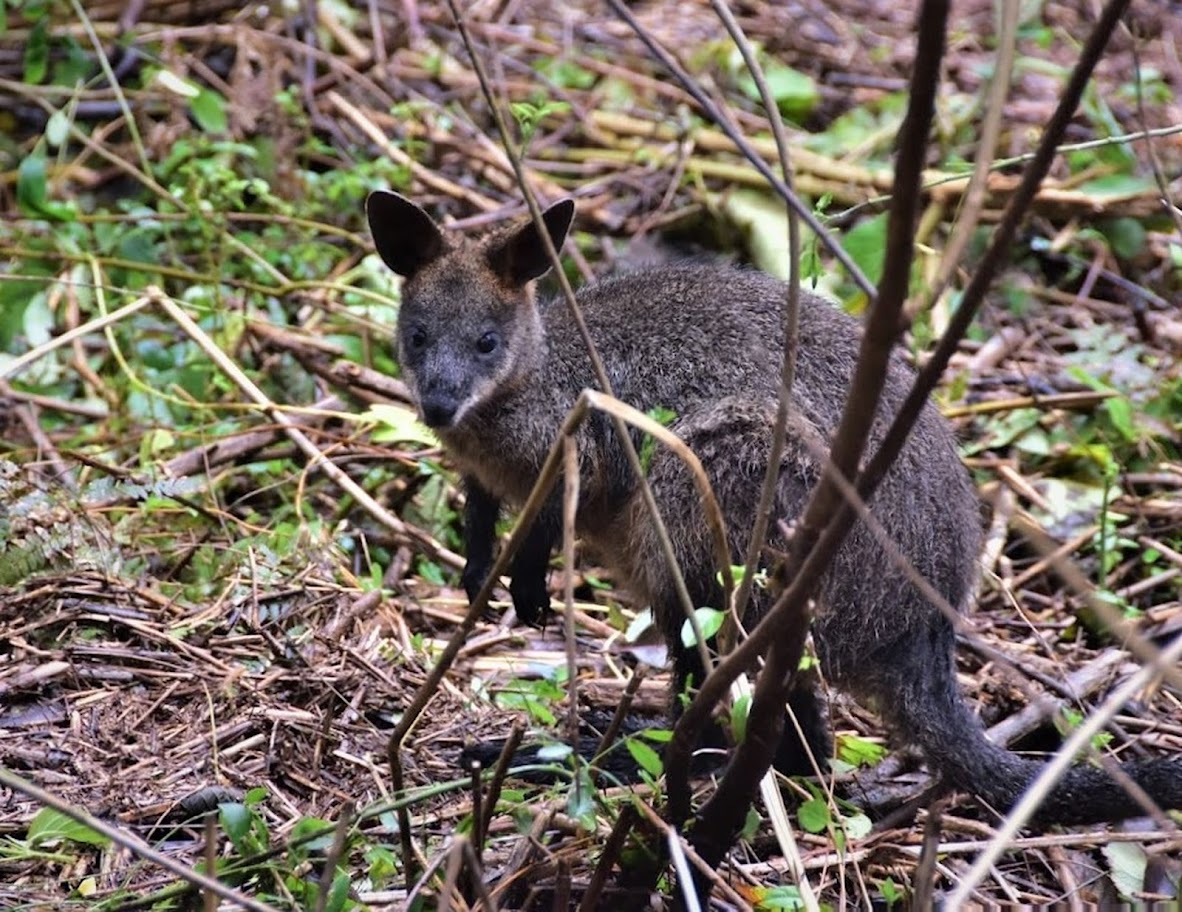
Information courtesy Ed Laginestra, Sydney Wildlife volunteer. Photo: Warriewood Wetlands Wallaby by Kevin Murray, March 2022.
Aviaries + Possum Release Sites Needed

Sydney Wildlife Rescue: Helpers Needed
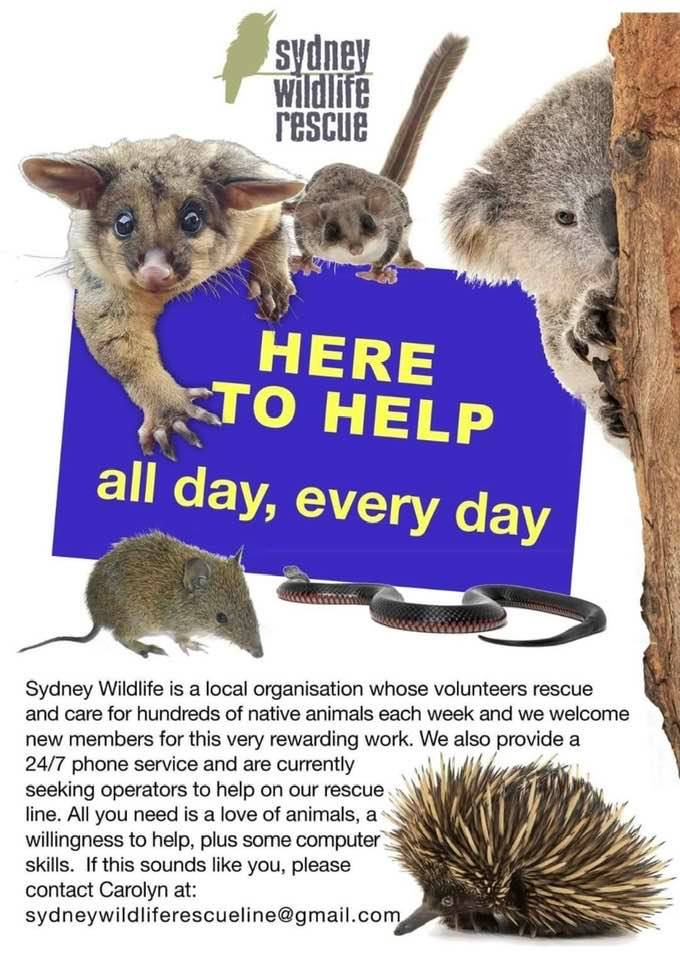
Bushcare In Pittwater
Where we work Which day What time
Avalon
Angophora Reserve 3rd Sunday 8:30 - 11:30am
Avalon Dunes 1st Sunday 8:30 - 11:30am
Avalon Golf Course 2nd Wednesday 3 - 5:30pm
Careel Creek 4th Saturday 8:30 - 11:30am
Toongari Reserve 3rd Saturday 9 - 12noon (8 - 11am in summer)
Bangalley Headland 2nd Sunday 9 to 12noon
Bayview
Winnererremy Bay 4th Sunday 9 to 12noon
Bilgola
North Bilgola Beach 3rd Monday 9 - 12noon
Algona Reserve 1st Saturday 9 - 12noon
Plateau Park 1st Friday 8:30 - 11:30am
Church Point
Browns Bay Reserve 1st Tuesday 9 - 12noon
McCarrs Creek Reserve Contact Bushcare Officer To be confirmed
Clareville
Old Wharf Reserve 3rd Saturday 8 - 11am
Elanora
Kundibah Reserve 4th Sunday 8:30 - 11:30am
Mona Vale
Mona Vale Beach Basin 1st Saturday 8 - 11am
Mona Vale Dunes 2nd Saturday +3rd Thursday 8:30 - 11:30am
Newport
Bungan Beach 4th Sunday 9 - 12noon
Crescent Reserve 3rd Sunday 9 - 12noon
North Newport Beach 4th Saturday 8:30 - 11:30am
Porter Reserve 2nd Saturday 8 - 11am
North Narrabeen
Irrawong Reserve 2nd Saturday 2 - 5pm
Palm Beach
North Palm Beach Dunes 3rd Saturday 9 - 12noon
Scotland Island
Catherine Park 2nd Sunday 10 - 12:30pm
Elizabeth Park 1st Saturday 9 - 12noon
Pathilda Reserve 3rd Saturday 9 - 12noon
Warriewood
Warriewood Wetlands 1st Sunday 8:30 - 11:30am
Whale Beach
Norma Park 1st Friday 9 - 12noon
Western Foreshores
Coopers Point, Elvina Bay 2nd Sunday 10 - 1pm
Rocky Point, Elvina Bay 1st Monday 9 - 12noon
Friends Of Narrabeen Lagoon Catchment Activities

Gardens And Environment Groups And Organisations In Pittwater
40 years ago, protesters were celebrated for saving the Franklin River. Today they could be jailed for months
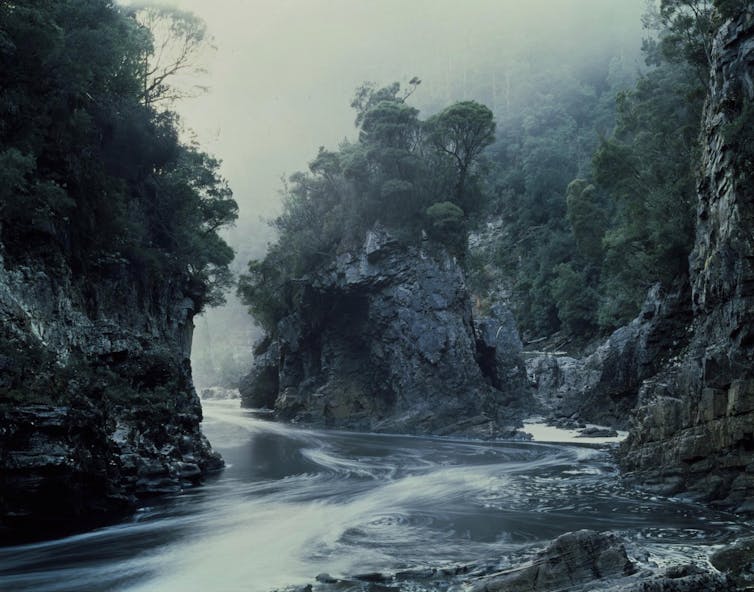
The 1982 campaign to stop the building of Tasmania’s Franklin River dam was a defining moment in the history of Australia’s social movements. Those events are now being recounted in the documentary Franklin, screening throughout the country.
Franklin tells how thousands of activists stood up in front of police and bulldozers and, through a persistent yet peaceful opposition, eventually forced the Tasmanian government to abandon the project. It was one of Australia’s most famous campaigns of civil disobedience.
Sadly, the story contrasts starkly with current political discourse. Environmental activists in Australia today are often depicted as public enemy number one. In the past few years, a swathe of anti-protest legislation has been enacted at both state and federal levels, imposing extremely tough sentences on those falling foul of the law.
A citizen trying to emulate the Franklin dam protesters today would likely pay a very high price. This silencing of dissent means an important tool for environmental advocacy is closed – and both nature and democracy will suffer.
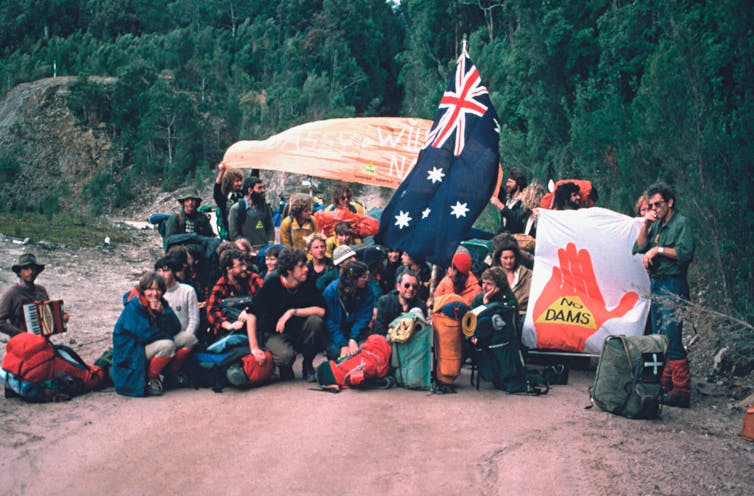
Silencing Peaceful Protest
Politicians insist anti-protest laws protect the community from disruptive behaviour. Human rights organisations, on the other hand, denounce the laws as systemic repression which threatens the right to protest.
The former Coalition federal government was consistent in its anti-protest stance. It frequently sought to portray environmental and animal-welfare activists as dangerous extremists.
For example, a peaceful animal welfare protest in Melbourne in 2019 which disrupted traffic drew the ire of then prime minister Scott Morrison. He described the activists as “green-collared criminals” and said “the full force of the law” should be used against them.
At the state level, Queensland, New South Wales, Tasmania, Victoria and Western Australia have all contributed to demonising environmental protest. And there’s no sign they intend to change.
Two months ago, the Tasmanian government increased penalties for protesters who, much like the old Franklin activists, obstruct “business activities” such as mining and logging.
First-time offenders face a fine up to $9,050 and up to 18 months in prison. For second offences, the fine is $13,575 and two years in prison.
Earlier this year, the NSW government passed a bill introducing the new offence of disrupting major public facilities. It means citizens who, for example, organise a peaceful protest in front of a train station, face up to two years in prison.
Also in NSW, one non-violent activist was recently remanded for two weeks in a maximum-security prison, and others have been subjected to harsh curfew conditions despite posing no threat to the community.
And NSW Police this year re-established a special Strike Force Guard that seeks to prevent, investigate and disrupt unauthorised protests.
NSW’s harsh approach prompted Amnesty International to launch a petition urging the state government to respect citizens’ right to protest.

Is ‘Direct Action’ Dying?
Demonstrations and other public forms of protest are a type of civil disobedience known as “direct action”.
As part of a current research project, we interviewed Direct Action Everywhere (DxE) activists, and representatives from Vegan Rising and Animal Liberation. The interviews reveal that some activists are abandoning direct action in light of the new anti-protest laws.
For example, Animal Liberation has shifted to lobbying and education to enact change. As one person from the organisation told us:
In the past, when the laws were very different, (we) would do more direct action, such as sit-ins. But now we’ve moved away from that, because it’s illegal. As an organisation, it wouldn’t help to have us shut down because of an illegal action like that.
Likewise, Sea Shepherd founder Paul Watson recently left the organisation following its decision to abandon direct action as a protest strategy.
But the tougher laws have not deterred other protesters. Animal activist Tash Peterson told us:
Disruptive activism and civil disobedience are essential to create social change and bring to light the atrocities animals are subjected to […] Until recently, I was rarely charged for my protesting, but now things are changing and I am getting arrested for disorderly conduct and trespass.
Former Greens leader Bob Brown played a key role in the 1982 Franklin campaign. More recently, he says his organisation, the Bob Brown Foundation, will continue to “peacefully defend” Tasmania’s native forests, waterways and wildlife, adding:
The real villains here are those who want to jail fellow citizens for defending public forests and wildlife.
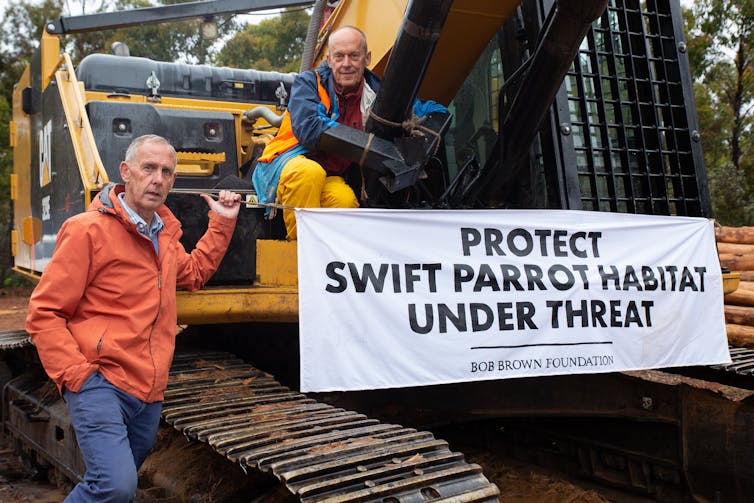
Peaceful Protest Is A Basic Right
As the Franklin documentary shows, protesters were willing to spend a few days in prison as the price of their campaign’s success. But the price paid by protesters today is so much higher.
At a federal level, the new Labor government has an opportunity to shift the tone of the national conversation and support the right of citizens to engage in peaceful protest.
Such an approach is consistent with the party’s values. Ahead of the May election, Labor told Human Rights Watch that:
Promoting universal human rights is an essential policy objective for Labor. [It is] vital to ensuring a peaceful world where all people have the right to live with dignity, freedom, safety, security and prosperity.
Franklin celebrates the role of non-violent direct action as a tool for social change. It tells of a people exercising their rights and coming together to fight for environmental justice. Let’s hope those kinds of stories are not consigned to history.
Human Rights Watch will hold a special screening of Franklin in Melbourne on November 2.![]()
Piero Moraro, Lecturer in Criminology, Edith Cowan University and Deborah Williams, PhD Candidate, Murdoch University
This article is republished from The Conversation under a Creative Commons license. Read the original article.
Public order bill: new law is designed to stop climate protests – but it could actually give activists a legal tool
Chris Hilson, University of ReadingThe UK’s environmental movement has a long history of using protest as a strategy. Disruption is often at the heart of this, either disrupting infrastructure projects themselves in an attempt to stop them going ahead (roads, fracking sites), or targeting existing infrastructure (fuel depots, airport runways or bridges) to disrupt others. Disruption gets people’s attention in a way that a conventional demonstration with placards seldom does – although it is not without the risk of backlash.
Recent climate activism has followed this disruptive tradition, with Extinction Rebellion blocking key London streets and bridges, Insulate Britain blocking motorways and Just Stop Oil targeting transport fuel distribution networks.
The government is keen to use the law to try to stamp out this type of disruptive protest. At the heart of this drive is the public order bill, introduced in May 2022 by the then home secretary, Priti Patel. But in introducing this bill the government may not have considered how the environmental movement has an equally long history of using criminal law to its advantage.
Getting arrested is often part of the protest strategy. While the new bill is intended to crack down on protest, it may inadvertently provide an avenue for further activism. One could see environmental groups bringing private prosecutions for climate offences committed under the bill, or at the very least arguing that the police should be bringing charges against the other side.
Take the offence of “locking on”. Section 1 of the bill states that a person commits an offence if they attach themselves, someone else or an object to another person, an object or land.
That act must cause, or be capable of causing, “serious disruption” to two or more people or an organisation, and the person must do this intentionally or be reckless to the consequences. The bill provides a defence if the person charged can prove they had a “reasonable excuse” for the act.
This offence is clearly aimed at protesters, who have used gluing and other forms of locking on as a way of preventing their quick removal by the police. But there is no reason why the climate movement cannot argue that a driver of a petrol tanker, in connecting their trailer with a cab, is “attaching an object to another object”.
This attachment, it could be argued, would help cause serious climate disruption to far more than just two individuals. While the driver may not have intended such disruption, one could argue that they are reckless as to whether it will have such consequences. Will the driver have a reasonable excuse defence? That’s for them to prove – the climate movement may try to argue that they do not.
Section 3 sets out an offence of causing serious disruption by tunnelling. It states that a person commits an offence if they create or participate in the creation of a tunnel, and the tunnel causes, or is capable of causing, serious disruption.
Again, they must intend or be reckless as to whether the creation or existence of the tunnel will have this consequence. The section similarly provides for a “reasonable excuse” defence and states that a person will be deemed to have a reasonable excuse if the tunnel was authorised by the relevant landowner.
With this in mind, environmental groups could bring private prosecutions against fracking companies or proposed underground coal mines such as the controversial Woodhouse Colliery site in Cumbria. These fossil fuel extraction activities are, one could argue, using tunnelling that is capable of causing serious climate disruption, and the relevant companies are reckless as to whether these harmful consequences could occur.
Whether they have a reasonable excuse or not may turn on arguments about whether such new fossil fuel extraction sites are compatible with the government’s net-zero targets.
Reasonable Excuses
The defence may argue that they can rely on the “deemed” reasonable excuse where the creation of the tunnel was authorised by a landowner. That provision will normally protect standard infrastructure tunnellers (for example, those building a road tunnel). But where horizontal drilling “tunnels” go under other people’s land (as can happen with fracking), it is not entirely clear that the tunnel will be so authorised.
There was a similar issue with the tort of trespass to land, with groups such as Greenpeace trying to stop fracking using a precedent where former Harrods owner Mohamed Al-Fayed had successfully sued Star Energy for drilling under his land. The government shut down this avenue via the Infrastructure Act 2015.
The 2015 act provides that a “person has the right to use deep-level land in any way for the purposes of exploiting petroleum or deep geothermal energy” under a depth of 300 metres from the surface. This means they can’t be sued in tort for trespass.
But it doesn’t avoid the need for an authorisation from neighbouring landowners for the purposes of the public order bill. Without such an authorisation, a defendant is unlikely to be able to rely on the bill’s deemed reasonable excuse defence.
Even if these arguments end up being given short shrift in the courts, they may at least give campaigners charged with these draconian new offences an opportunity to tell a different story about the offences they have been charged with. Protest is often the canary in the coalmine. If we shut it down, some may avoid being disrupted now, but with climate change, we will surely all be disrupted much more in the future as the planet warms beyond 1.5℃.
Protest is also a safety valve. In further restricting overt protest, the bill could have the unintended consequence of driving eco-activists towards more extreme and violent forms of covert action.![]()
Chris Hilson, Professor of Law, Director of the Centre for Climate and Justice, University of Reading
This article is republished from The Conversation under a Creative Commons license. Read the original article.
CSIRO Announces New Phase Of National Koala Monitoring Program
October 31, 2022
CSIRO, Australia's national science agency, has announced a new phase in its National Koala Monitoring program which is set to deliver a robust estimate of the national koala population.
The new phase includes $10 million in funding over the next 4 years, which was announced by Minister for the Environment and Water Tanya Plibersek last month.
The funding comes at a much-needed time for Australia’s koala population. In January 2022, the koala (combined populations of Queensland, New South Wales and the Australian Capital Territory) was up listed to ‘Endangered’ under the Environment Protection and Biodiversity Conservation Act 1999 (EPBC Act).
The new phase of the National Koala Monitoring Program will deliver a robust estimate of the national koala population. This will result in a long-lasting capability to monitor and assess trends in koala populations across the entire species range.
CSIRO researchers have spent the past year co-designing the national koala program with key research, agency, Indigenous and community partners.
“The koala is an iconic species for all Australians, and of enormous cultural and spiritual significance to First Nations people,” Co-project leader for the National Koala Monitoring program, CSIRO Senior Research Scientist Dr Andrew Hoskins said.
“Partnerships are core to the National Koala Monitoring Program. As such, we recognise that the only way we can recover this iconic species is having everyone involved, the broadest community minds possible,” he said.
CSIRO will be working with university, agency, Indigenous and citizen science groups to build on existing on-ground efforts and use state of the art scientific surveying and modelling techniques.
Boots are already on the ground for the new phase of the program, which kicked off in the Northern Murray Darling catchment, Queensland earlier this month. This included CSIRO working with the Queensland Murray Darling Catchment Aboriginal Rangers (QMDCL), Millmerran Landcare and fellow community members to conduct survey work and workshop discussions.
The QMDCL Aboriginal rangers are working with CSIRO to develop cross-cultural monitoring methods to find and share information about koala population status and trends. This includes supporting QMDCL to collect koala data using structured survey techniques, such as on-ground transects and drone surveys.
“There is much to learn about where koalas are in our region, how many there are, and if they are healthy. This collaboration is important for koala and country,” Senior Queensland Murray Darling Catchment Aboriginal Ranger William Taylor said.
“We are co-designing a dashboard which allows koala data to be appropriately used and shared for Guda (koalas) and country.”
Koalas are easy to identify. But our ability to see (or detect) individual koalas is extremely low and varies in different habitats, and even between different people using different monitoring methods.
The new National Koala Monitoring Program will collect koala sightings using consistent methods across the country and build survey know-how with citizen scientists. This will help achieve the rigorous, national snapshot of koala populations and koala distribution.
“Good science is key to good conservation. This new National Koala Monitoring Program will help us make better investments and better conservation decisions, so that we can protect the iconic koala for generations to come,” Threatened Species Commissioner, Department of Climate Change, Energy, the Environment and Water,” Dr Fiona Fraser said.
The CSIRO National Koala Monitoring Program team L to R: Andrew Hoskins, Cathy Robinson and Eric Vanderduys working in the field. Photo: CSIRO
For more information visit:
- Collaborative partnerships for the National Koala Monitoring Program - CSIRO
- Ecos link: Working with all Australians to win the game of koala hide and seek – ECOS (csiro.au)
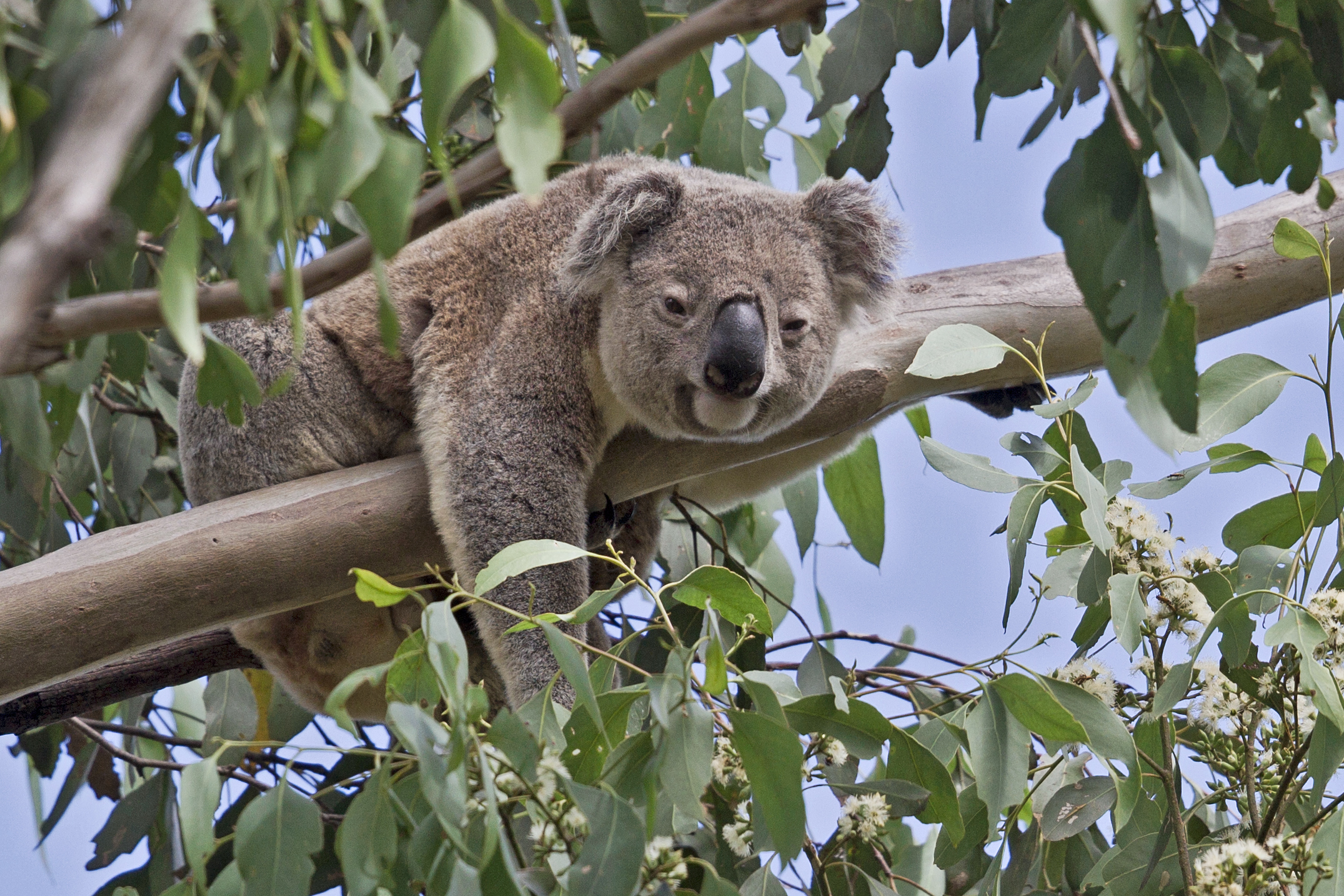
CSIRO scientists spot a sleepy koala in the field. Image by Mat Gilfedder.
Fireworks: growing evidence they distress animals builds case to restrict use

The crackle, fizz and bang of fireworks exploding overhead in a shower of intense colours is considered the highlight of many festivals and celebrations. But have you ever taken a moment to imagine how your local wildlife feels about it?
Fear, including the fear of loud noises, is deeply rooted in the evolutionary history of all animals. Shying away from dangerous situations increases survival. For example, hiding away from loud thunderstorms and running away from the noise of falling rocks might save an animal’s life.
But there is nowhere to hide from fireworks. What must it be like for the wild animals that delight us on walks and picnics to be confronted with such an inescapable barrage of sound?
Unfortunately, scientists don’t know much about exactly how fireworks impact animals as they’re difficult to observe at night. But what we have learned is alarming. Our recent study, one of the first to study how fireworks affect wildlife, showed how physically distressed animals – in this case geese – were made by New Year’s firework celebrations.
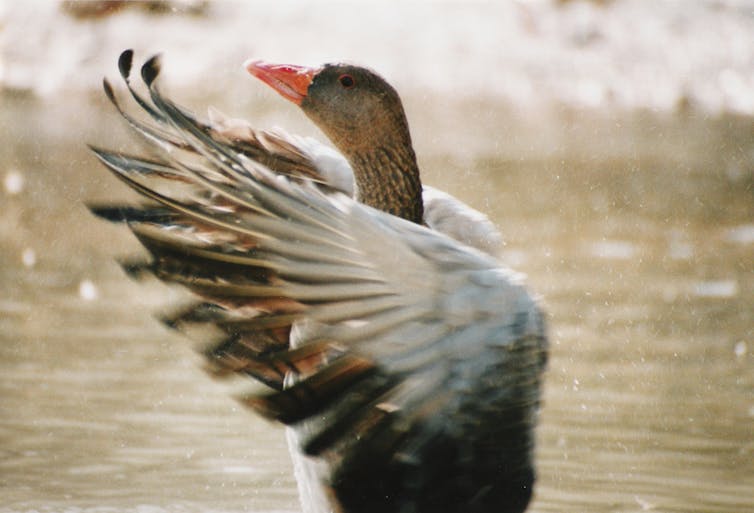
Physiological responses can be good measures of emotional arousal in animals, allowing researchers to assess whether animals are relaxed or frightened. Heart rate and body temperature increases are reliable measures of stress. In the long term, increased emotional stimulation is an indicator of poor animal welfare.
Our study investigated the physiological responses of wild greylag geese in response to New Year’s Eve fireworks in a rural area of Austria. We fitted 20 greylag geese with transmitters, which recorded two minute averages of heart rate and core body temperature.
Daily heart rate and body temperature patterns were compared between every hour of December 31, January 1, average values for the month of December and average values for January. In the first hour of the year (when firework displays peak) the geese’s heart rates and body temperature surged.
Compared with average values during December, hourly mean heart rate increased from 63 to 124 beats per minute (a 96% increase). Hourly mean body temperature increased from 38°C to 39°C. Heart rate returned to baseline levels between 2am and 3am on January 1, whereas body temperature didn’t drop until around 5am.
Physiological responses may be because of geese taking flight during the fireworks. They circled over their roosting area, until eventually landing again - a severe disturbance of their night time rest. It’s also a waste of precious energy during a time of year food is scarce.
Interestingly, there were pronounced differences between some subjects and some geese showed no increase in heart rate and body temperature in response to the fireworks. This suggests that like dogs, some wild animals are less fearful than others.
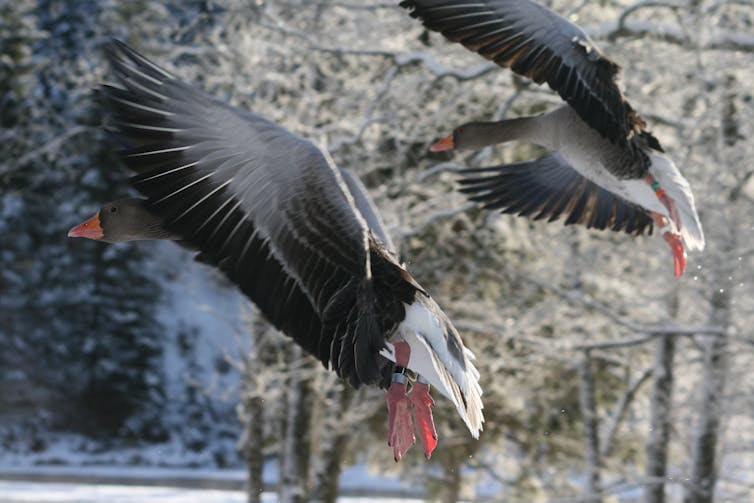
Our results echo other examples of how fireworks may affect birds. One study showed thousands of birds taking flight to altitudes of 500 metres for 45 minutes after New Year’s Eve fireworks in the Netherlands between 2007 and 2010, well above their daytime flight elevation which shows how disruptive the fireworks were.
In 2021, hundreds of dead starlings were found after New Year’s Eve celebrations in Rome. The exact reasons why they died are unknown, but we know loud noises cause animal panic responses which could be deadly if they hit obstacles or got lost and separated from their flock.
We also know wild animals suffer chronic stress, fertility problems and change their migration routes in response to noise. Animals can also be more sensitive to noise than humans and have different hearing ranges.
Fireworks And Pets
Many pet owners are acutely aware of the effects of sounds and light on their companions. In a 2019 study using an online survey, 52% of dog owners said their pets were fearful of fireworks, displaying behaviours like panting, trembling, hiding and running away.
Noise sensitivity can develop in dogs as puppies but can also have a genetic basis, with some breeds being more affected than others. For example, great Danes were found to be among the least fearful of loud noises and the Norweigan buhund was among the most frightened breeds in a 2015 study comparing 17 breeds.
Research has also found that cats, horses, rabbits and guinea pigs are scared of fireworks.
Effects of fireworks on the welfare of less common pets like parrots, reptiles and amphibians or even fish have not been scientifically studied at all.
Wildlife Friendly Alternatives
Given what we’re learning about fireworks’ affect on wildlife, it’s not surprising that some places are banning them altogether
In 2021, the popular UK vacation company Centre Parcs decided to permanently cancel all firework displays to protect wildlife and instead light up their holiday camp forests with an Enchanted Light Garden. Herefordshire Council banned noisy fireworks launched from council owned land in January 2022, partly in response to concerns about animal welfare.
There has also been increasing acceptance of firework alternatives, such as laser or drone shows. The worldwide market for drone light shows was valued at is expected to grow 18.2% until 2027. Perhaps as fireworks’ impact on animals becomes clearer, such technological solutions will become even more popular.![]()
Claudia Wascher, Associate Professor in Behavioural Biology, Anglia Ruskin University
This article is republished from The Conversation under a Creative Commons license. Read the original article.
Olive ridley sea turtles are constantly on the move, so protective zones should follow them
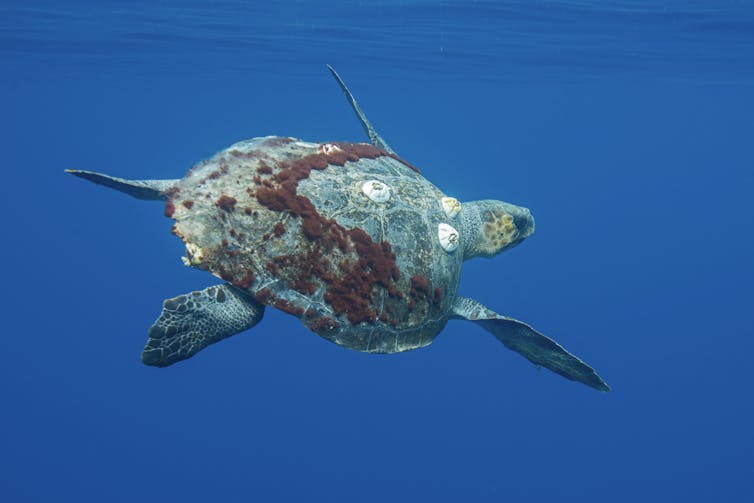
Many of the ocean’s most charismatic animals spend their lives swimming, flying or gliding thousands of miles, from the coasts to the high seas. Arctic terns, humpback whales and sea turtles are examples. Scientists have spent many years documenting and studying these magnificent journeys.
Chronicling where these species go is just the beginning. The next steps are understanding when and how far each animal travels and what triggers it to roam.
We are a marine biologist and an evolutionary ecologist and have worked together to study the nesting and migration habits of endangered olive ridley sea turtles (Lepidochelys olivacea). This information is vital for managing the turtles’ recovery – but our research shows that two identical-looking olive ridleys may follow very different paths.
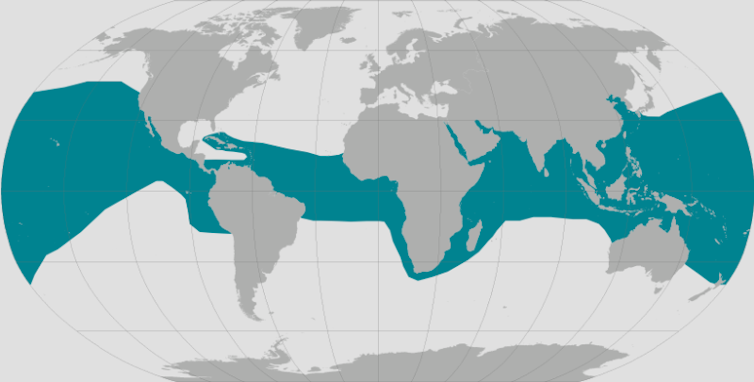
Protecting Animals That Move
Mapping the spatial distribution and movement patterns of marine animals that are endangered or threatened is essential for defining critical habitat – areas that these species need in order to recover, such as key breeding or feeding grounds.
Once scientists identify critical habitats, governments can integrate them into marine protected areas. These typically are defined zones with fixed borders. They benefit marine animals that stay in one place, like sea anemones; have small ranges; and require specific habitats, such as coral reefs or seagrass beds.
But highly migratory marine animals have large ranges and can travel many miles per day. They may prefer a certain location one year and a different one the next year. And their movements are driven by shifting ocean circulation patterns. Marine protected areas are not effective for protecting highly mobile species – and olive ridley sea turtles are incredibly mobile.
Ocean Nomads
Olive ridleys are among the smallest of the world’s sea turtles and are found in the tropical Atlantic, Pacific and Indian oceans. They are best known for their signature synchronized mass nestings on beaches in early summer, which are called arribadas – Spanish for “arrival.”
Fishing in the eastern Pacific Ocean decimated nesting colonies of olive ridleys before commercial exploitation ended in the 1980s. The species has begun to recover but remains listed as vulnerable by the International Union for the Conservation of Nature. The U.S. classifies olive ridleys as threatened, except for a group that nests on Mexico’s Pacific coast that is classified as endangered. Threats include fishing, hunting of eggs and turtles on nesting beaches, coastal development, boat collisions and water pollution.
One of us, Pamela Plotkin, began studying olive ridleys in 1990, when satellite telemetry first emerged as a viable tool for following them at sea. Initially, Plotkin expected to document groups of turtles migrating from their mass nesting beach in Costa Rica to an undiscovered feeding ground in the eastern Pacific Ocean, far from land.
Adult female sea turtles typically have a predetermined endpoint where they go to feed after they finish nesting on beaches. It was easy to imagine throngs of turtles migrating in “turtle schools” between the beach and their feeding ground.
Plotkin envisioned creating a simple conservation plan to protect the migratory corridor linking these two critical habitats. But she found nothing of the sort.
Instead, she learned, olive ridleys’ journey has no endpoint. They swim hundreds to thousands of miles from their nesting beach, moving continuously among multiple areas, following unpredictable and widely dispersed pathways that vary year to year.
Clearly, there was a need to better define critical habitat for this highly mobile turtle in a huge expanse of ocean.
Searching For The Sweet Spot
In 2015, with the addition of doctoral student Christine Figgener, our research group picked up where prior studies had left off. Part of Figgener’s dissertation research focused on characterizing critical habitat for olive ridleys in the eastern Pacific Ocean and understanding their habitat preference based on changing environmental variables. They included sea surface temperature and concentrations of chlorophyll-a, which is found in marine algae, an essential food source for the diverse plankton that olive ridleys eat.
Figgener captured olive ridleys from multiple beaches in Costa Rica, including turtles that nested alone rather than in large groups. She glued satellite trackers to 23 turtles’ shells and followed them from their nesting beaches. We also acquired satellite data on conditions including sea surface temperature, chlorophyll-a concentrations and how deeply sunlight penetrated into the upper ocean in areas where the turtles traveled.
By combining old and new data, with a total of 43 different migration tracks and 1,553 in-water turtle locations, we identified high-use areas for olive ridleys between Mexico and Peru and developed a habitat preference model to understand what attracts turtles to specific areas.
Predictably Unpredictable
The female olive ridleys that we tracked swam long distances north, west and south from Costa Rica. Their routes did not overlap, and their movements did not reveal any well-defined migratory corridor of the kind that many species follow.
We mapped the areas where these nomads clustered, and found that their high-use areas spanned the exclusive economic zones – areas extending up to 200 miles offshore – of six countries: Mexico, Guatemala, El Salvador, Nicaragua, Costa Rica and Panama.
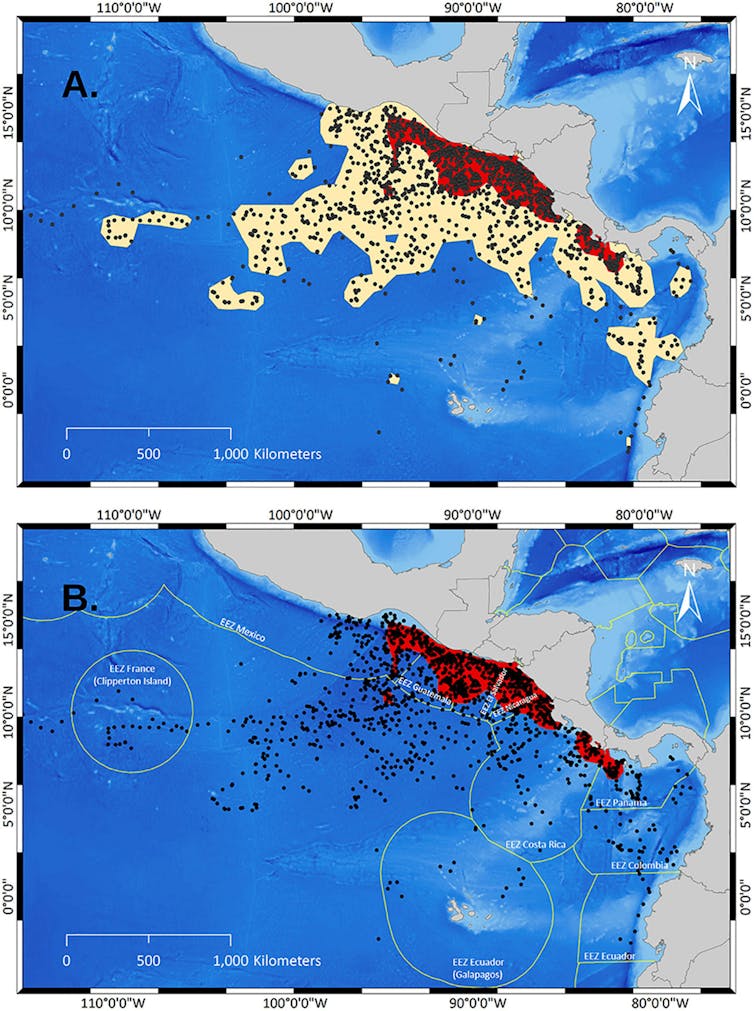
When we compared high-use areas for mass nesting turtles with those of solitary nesting turtles, we saw striking differences. Mass-nesting turtles clustered into one large, connected area that was smaller and closer to the coastline. Solitary nesting turtles’ high-use areas were disconnected, widely dispersed and farther from the coast.
Our model indicated that the turtles preferred habitat where the water was warmer than about 77 degrees Fahrenheit (25 degrees Celsius) and deeper than 13,000 feet (4,000 meters), and where phytoplankton were abundant.
A Conservation Challenge
Current conservation strategies for sea turtles typically emphasize protecting static migratory corridors. But this approach won’t benefit nomadic olive ridleys. Instead, these turtles’ wide-ranging migrations and shifting use of space require a dynamic ocean management strategy. This approach uses real-time data to track target animals where they are and creates movable protected zones in a changing environment.
Dynamic management has been used successfully in developed countries to reduce threats to whales, fish and sea turtles from capture in fisheries and vessel strikes. It integrates many kinds of data, including satellite tracking, voluntary catch reports from fishermen and modeling of target species’ habitat preferences. Information is quickly shared via mobile apps so that, for example, ship captains are alerted to reduce vessel speed when whales are likely to be nearby.
Expanding this approach to developing countries poses a challenge, but is within reach. A dynamic management system for olive ridleys would need to predict where the turtles are likely to be present in a perpetually changing environment, and address threats in these critical spaces. It also would require nations to work together to regulate fisheries that capture and threaten turtles in their territorial waters.
Another important angle of our research is the contrast we found between habitat use by mass-nesting turtles and solitary-nesting turtles. It supports previous studies that found two distinct groups of turtles within the same population.
Conservation efforts on nesting beaches have focused mainly on protecting a small number of beaches in Mexico and Costa Rica that olive ridleys use for mass nestings. But hundreds of solitary nesting beaches extending from Mexico to Ecuador are largely unprotected. These turtles have declined significantly in number in recent years. We contend that conserving olive ridleys will require action both on land and at sea.![]()
Pamela T. Plotkin, Associate Research Professor and Director, Texas Sea Grant, Texas A&M University and Joseph Bernardo, Research Associate Professor of Biology, Texas A&M University
This article is republished from The Conversation under a Creative Commons license. Read the original article.
3 things a climate scientist wants world leaders to know ahead of COP27

World leaders and climate experts are gathering for pivotal United Nations climate change talks in Egypt. Known as COP27, the conference will aim to put Earth on a path to net-zero emissions and keep global warming well below 2℃ this century.
The world must rapidly decarbonise to avoid the most dangerous climate change harms. World leaders know this. But that knowledge must urgently turn into concrete commitments and plans.
If humanity continues on its current path, we’re going to leave a hotter, deadlier world for the children of today and all future generations.
Earth desperately needs COP27 to succeed. I’m a climate scientist and I believe world leaders should have these three things top-of-mind heading into the conference.
1. Our Planet Is Undeniably In Crisis
So far, Earth has warmed just over 1℃ relative to pre-industrial levels, meaning we’ve already damaged the climate system. Our greenhouse gas emissions have already caused sea level to rise, sea ice to shrink and the ocean to become more acidic.
Extreme events in recent years – particularly heatwaves – have the fingerprints of climate change all over them. The record-smashing heat in western North America in 2021 saw massive wildfires and straining infrastructure. And earlier this year, temperatures in the United Kingdom reached a deadly 40℃ for the first time on record.
The ocean, too, has suffered a succession of marine heatwaves that have bleached coral reefs and reduced the diversity of species they host. Heatwaves will worsen as long as we keep warming the planet.
Frighteningly, we risk tipping the climate into a dangerous new regime bringing even worse consequences. Research from September finds we’re on the brink of passing five major climate “tipping points”, such as the collapse of Greenland’s ice-sheet. Passing these points will lock the planet into continuing damage to the climate, even if all greenhouse gas emissions cease.
Human health is also on the line. Research last month revealed the climate crisis is undermining public health through, for instance, greater spread of infectious diseases, air pollution and food shortages.
Among its disturbing findings, heat-related deaths in babies under a year old, and adults over 65, increased by 68% in 2017-2021, compared to 2000-2004.
Future generations cannot afford our dithering on action to reduce emissions.
2. Emissions Reduction Is Too Slow
Some countries, particularly in Europe, are succeeding in reducing greenhouse gas emissions through transitioning to renewable energy.
But globally it’s not happening fast enough. A UN report this week found if nations deliver on their climate action goals for 2030, Earth will still heat by about 2.5℃ this century - overshooting the Paris Agreement goal to keep global warming well below 2℃.
Such warming would be disastrous, especially in poorer parts of the world that have contributed little to global emissions.
For decades, the world has talked about reducing carbon dioxide emissions. But annual global emissions have risen by over 50% in my lifetime, and since the first COP back in 1992. The UN warns there’s still “no credible pathway” to limiting warming to 1.5℃.
Until we reach close to net-zero emissions, the amount of CO₂ in our atmosphere will rise and the planet will warm. At our current rate, we are warming the planet by about 0.2℃ every decade.
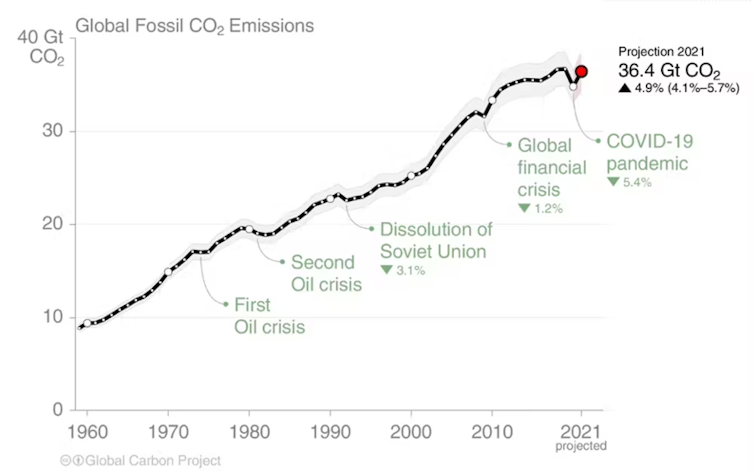
3. The Stalling Must End
With so many challenges facing the world, including the Russian invasion of Ukraine and the cost of living crisis, it may be tempting to view climate change as a problem that can wait. This would be a terrible idea.
Climate change will get only worse. Every year of delay makes it much harder to prevent the most dangerous climate projections becoming a reality.
Only concerted efforts from all nations will avoid destroying our most sensitive ecosystems, such as coral reefs. We should be doing everything we can to stop this by transitioning away from fossil fuels. Any new fossil fuel development is just making the problem worse and will cost humanity and the environment far more in future.
And yet, the International Energy Agency last week projected that the net income for oil and gas producers will double in 2022 “to an unprecedented US$4 trillion”, a $2 trillion windfall.
We can’t, as climate activist Greta Thunberg put it, just have more “blah, blah, blah” from world leaders at COP27 - we need concrete action to reduce greenhouse gas emissions.
What Now?
COP27 must lead to a rapid transition away from fossil fuels, including no new fossil fuel developments, and more support for countries dealing with the biggest climate change impacts. We must be on a credible path to reach global net-zero emissions within the next few decades.
The lack of progress at past global climate talks means I’m not optimistic that COP27 will achieve what’s needed. But I hope world leaders will prove me wrong and not let their nations down.![]()
Andrew King, Senior Lecturer in Climate Science, The University of Melbourne
This article is republished from The Conversation under a Creative Commons license. Read the original article.
Australia relies on controversial offsets to meet climate change targets. We might not get away with it in Egypt
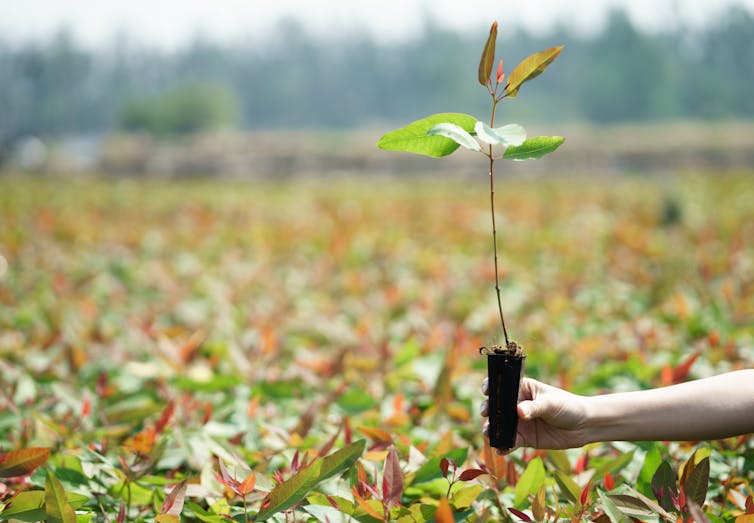
It’s small wonder a major fossil fuel producer like Australia has relied so heavily on carbon offsets. Plant new forests - or say you will avoid clearing old ones - and you can keep approving new gas and coal developments. This year, whistleblower Professor Andrew McIntosh claimed up to 80% of these offsets weren’t real. They didn’t actually offset emissions.
In Australia, renewables are the only real source of emission reduction. The rest of the economy is set to slowly increase emissions. But what matters is actually reducing how many tonnes of heat-trapping greenhouse gases go up into the sky and add to the 2.5 trillion tonnes of CO2 humans have already emitted - of which more than a trillion tonnes remain in the atmosphere. Last year, carbon dioxide and methane levels hit new highs.
As the world’s policymakers head to Egypt for next week’s crucial climate talks, offsets will be in the spotlight next to climate finance, loss and damage to vulnerable communities and 2030 emissions targets. Egyptian president Abdel Fattah El-Sisi has pitched the COP27 conference as the moment “where words were translated to actions”.
For Australia, this is an opportunity to move away from relying on dubious offsets and focus on the real action of actually cutting emissions.
Remind Me What Offsets Are?
Offsets measure how much carbon is soaked up by, say, a reforestation project. As the saplings grow, they store carbon. Offsets are a way to theoretically package up this stored carbon - or emissions claimed to have been avoided by not deforesting an area of land - and sell it to companies who would like to keep pumping out emissions equal to the amount stored in new forests.
You can quickly see the problem. Who’s checking to see if these forests were planted – or if they were going to be planted anyway? Are emission reductions or storage real – and additional to what would otherwise have happened?
While international offsets are notoriously variable in quality, our Australian Carbon Credit Units scheme is hardly blameless. In Australia, many offsets rely on “avoided emissions” such as leaving a forest intact rather than cutting it down, and counting the carbon in these forests as an offset. This, as Professor McIntosh showed, has been easily gamed. Most of our offsets are not real and not additional.
In July, the federal government launched a review of Australia’s offset scheme, chaired by Professor Ian Chubb. Last week, Chubb told The Australian “offsets can’t be a device which big emitters use not to […] do something about reducing emissions”.
Chubb’s comments echo global scientific and political concerns over offsetting. UN Secretary General Antonio Guterres has warned our over-reliance on offsets net zero emission claims is a form of greenwashing.
Offsetting large-scale emissions, after all, essentially licenses the companies who buy offsets to just keep on pumping out - and even massively increase - emissions of carbon dioxide and methane. And as a new report points out, sequestering carbon into trees is not equivalent to reducing fossil fuel emissions.
There is a very long tail to every tonne of fossil CO₂ added to the atmosphere: around 400 kilograms will still be there after a century. After 1,000 years, there’s still around 25%. After 10,000 years, there’s still around 20%. This carbon will go on heating the planet for millenia.
Yet in Australia, offset permanence counts as anywhere between 25 and 100 years, depending on the project.
That means offsets have to be very good to be worthwhile. If they’re not real, additional and permanent – or if they’re used to continue fossil fuel emissions – then they will make climate change worse rather than better.
What Does This Mean For Australia?
In the last decade, Australia has become the world’s top exporter of liquefied natural gas (LNG). This has been enormously lucrative for gas producers and a boon to government revenues.
We’re already seeing companies shipping so-called “carbon-neutral” LNG from Australia. Emissions from burning or using this gas has, they claim, been offset.
Is carbon-neutral gas possible? Well, no. Australia is one of only a handful of countries with its own government-sponsored offsetting system, ClimateActive. This is intended to certify companies as carbon neutral when they have reduced their emissions “as much as possible” while “cancelling out” remaining emissions through offsets.
Sceptical? You’re not alone. Environmental policy experts say this legacy system from the previous Coalition government effectively amounts to state-sponsored greenwashing.
That’s not the only questionable environmental legacy. Labor is also reviewing the safeguard mechanism – effectively an emissions trading scheme. It was pitched as a way to reduce the 25% of our emissions which come from industrial facilities. Fossil fuels account for more than half the facilities.
But instead of falling, emissions across the facilities actually rose by 7% over the five years to 2021 - equivalent to more than nine million tonnes of carbon dioxide.
In our submission to the mechanism review, we suggest the government should pivot to a full emissions trading scheme for the industrial sector – without offsets.
Unfortunately, Labor has already suggested draft legislation to revise the mechanism which would allow more offsetting, rather than require substantial emission reductions from Australia’s industries.
What’s Likely To Happen To Offsets At COP27?
When the world’s leaders and negotiators got the Paris Agreement across the line in 2015, there was much celebration. Now comes the harder part: actually making the transition.
Under rules adopted in Glasgow, offsetting may be permitted – as long as carbon offsets are high integrity (they’re real and additional), and operate transparently with robust accounting (we can check they’re real and are not double-counted).
This will be on the table in Egypt, where negotiators will seek to hash out detailed rules for tracking and checking each nation’s progress – or lack thereof – towards emissions reduction goals.
Expect to see intense negotiation around avoiding emissions – that is, not cutting down forests. To date, avoided emissions have not been counted as part of a country’s efforts. But that may change.
Integrity and transparency have long been challenges in accounting for avoided or offset carbon in the land sector.
The world will be watching to see if Australia – now under new management – is still willing to push for the right to buy cheap and sometimes questionable offsets. And will it support rules and requirements to guarantee permanence?
Australian industries are lobbying to use these kinds of international offsets to meet emission obligations. The question is, will Labor seize the chance to move away from them, and instead reduce emissions?
What’s The Best Way Forward For Australia?
Let’s say Labor’s tweaks to the safeguard mechanism become law. In this scenario, offsets continue, despite their chequered history.
We would miss many opportunities to invest in technologies which actually reduce the CO₂ pouring out of machines and smokestacks. And we would miss a vital opportunity to shift away from our reliance on fossil gas, which – when burned overseas – produces massive emissions and risks slowing the clean energy shift in developing economies.
That’s the bad timeline.
In the good timeline, Labor seizes the historic moment. Amid intensifying and accelerating climate change, the public want change. The Russian invasion of Ukraine has shown the security risks of foreign fossil fuels. And after nine years of go-slow tactics, Australia has a government elected on a promise to actually slash emissions.
Let’s hope they turn away from the false promise of offsets, and pass the test.![]()
Bill Hare, Adjunct Professor, Murdoch University
This article is republished from The Conversation under a Creative Commons license. Read the original article.
How 1970s conservation laws turned this ‘paradise on Earth’ into a tinderbox
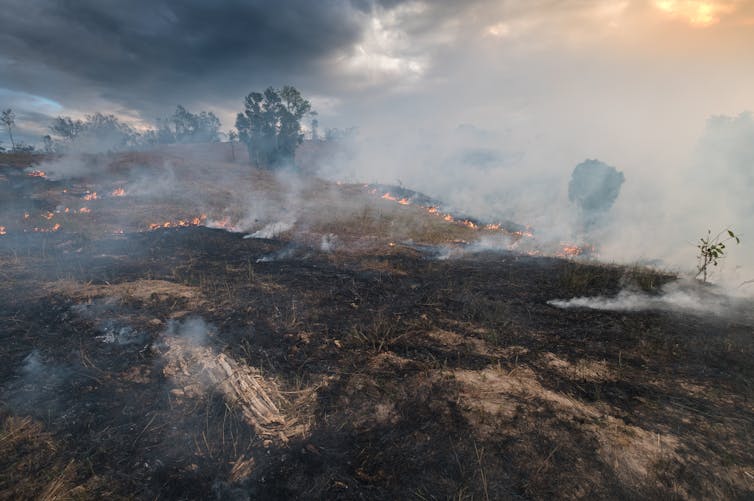
Southeast Australia’s bushfire crisis culminated in the devastating bushfire season of 2019 and 2020 that burnt nearly 25 million hectares of bush.
Our new research demonstrates how the scale of this disaster blew out due to legislation introduced in the 1970s, which was based on idea that nature should be left to grow freely without human intervention.
We investigated the bushfire history of one of the worst hit areas: Buchan on Gunaikurnai Country in Victoria. We found no bushfires burned there for almost a century until the mid 1970s, following the establishment of the Land Conservation Act of 1970 – legislation that sought to protect the Australian bush from humans.
This legislation banned farmers from mimicking Aboriginal burning practices by using frequent fires to promote grass for livestock. As a result, the amount of flammable trees and shrubs exploded in the region. It was only after this prohibition on burning that catastrophic bushfires became an issue in the Buchan area.
The prolonged neglect of southeast Australian forests under the guise of conservation means our forests now carry dangerous levels of fuels. This creates the conditions in which climate-driven bushfires become megafires, devastating Country and people’s lives.
Cultural Burning As Caring For Country
Aboriginal people make use of all kinds of vegetation, from closed forest to treeless grasslands, from freshwater to sea Country. Each mob care for Country according to their own laws and philosophies. The principal (but not only) tool for caring for Country is fire - a process now referred to as cultural burning.
The Victorian Traditional Owner Cultural Fire Strategy eloquently captures what cultural burning is:
Cultural Burning is Right Fire, Right Time, Right Way and for the right (cultural) reasons according to Lore. There are different kinds of cultural fire practices guided by Lore applicable across Victoria’s Countries.
Prior to British invasion, caring for Country led to diverse territories comprised of all the things people needed for themselves or for trade.
In contrast to hazard reduction burning, cultural burning is not a homogeneous application of fire designed simply to keep fuel loads low. It is a sophisticated and diverse system dictated by an intimate and reciprocal relationship with Country.
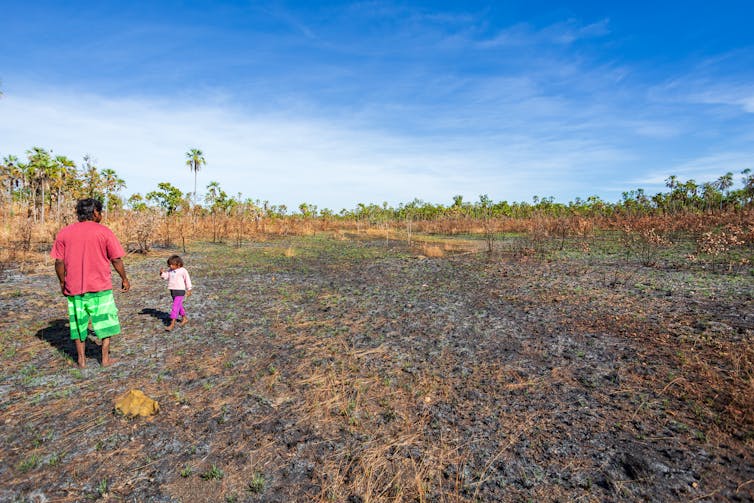
Aboriginal care for Country promotes a safe, productive and predicable world. It is regulated by strict spiritual, cultural and pragmatic protocols.
It is intimate and small-scale. It is year-round. It is long term. It has both immediate and cumulative impacts on Country. This includes increased biodiversity, fewer catastrophic bushfires, productive lands and waters, and a safe home for people and other occupants of Country.
Settler Farmers And Open Country
Settler farmers in southeast Australia capitalised on the systematic, fine-grained and diverse set of ways Aboriginal people applied fire to Country. Indeed, most agricultural areas in the southeast today occur on Country that was already open and grassy because of the application of fire over millennia.
This open Country was deemed desirable land. Much of it was further cleared for agriculture, while “less desirable” land was essentially neglected or viewed as a sources of timber.
These neglected areas have become much more woody and, as a result, much more fire prone.
Until the 1970s, many settler farmers observed and mimicked the practice of cultural burning. They particularly desired the benefits of increased green shoots following low-intensity burning of grasses to feed their livestock, and the safety from uncontrolled bushfires such burning provided in this perilously flammable environment.
For a 2008 Victorian government inquest into the impact of public land management practices on bushfires, Buchan locals commented on the causes of bushfire in the region. A statement from a Buchan farmer reads:
After Europeans arrived the settlers followed the Aboriginal ways and the country was all open, rolling grassland. My father said it was paradise on earth. Orbost right through Gelantipy, Wulgulmerang, Omeo and all that country was rolling grassland, and the settlers came there because it was great for their cattle.
After the limitations on [Aboriginal] people, the settlers followed their ways and the country retained its grassland quality. […] Then the regulations began to be more and more restrictive. Public land management and the responsibility of the Minister, have been evaded, over a long time.
How The Landscape Changed
For our study, we extracted a long sample of sediment from the Tooculerdoyung Lagoon on the banks of the Snowy River, near where it joins the Buchan River. Studying the pollen and charcoal contained in this sample reveals how vegetation, fire and erosion changed in this region over the past 120 years.
Tooculerdoyung is a local Gunaikurnai word that translates to “a point of river”. The site is currently surrounded by eucalypt-forest. It is depicted in a well-known lithograph by realist painter Eugene von Guérard in 1867, in which the landscape surrounding the site is portrayed as an open forest.
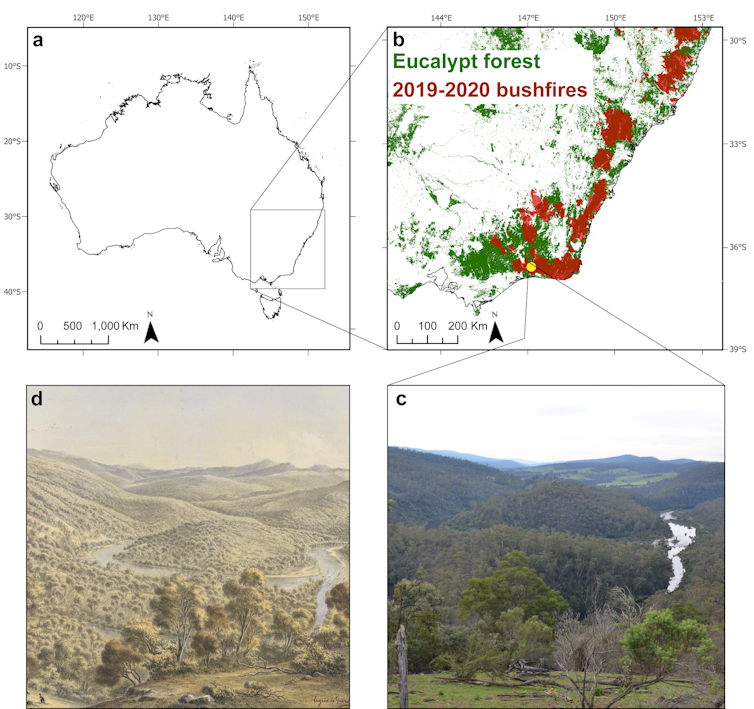
Our data confirms von Guérard’s depiction. From the early 1900s (shortly after the town of Buchan was established in 1873) until the 1970s, the area was indeed an open landscape, dominated by grass and herbs. In this time, it experienced a consistent, low-intensity fire regime (fire pattern).
After 1970, the fire regime becomes more variable, with a shift to less frequent and higher impact burning. This is accompanied by a drastic increase in the amount of flammable trees such as eucalypts and shrubs. For the first time in the region, we see the onset of post-fire soil erosion.
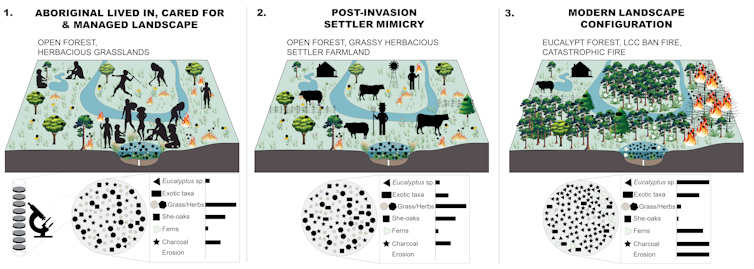
Buchan locals lay the blame for this fire regime shift on the banning of settler mimicry burning. In a submission to the 2008 inquiry on public land management and bushfires, local Buchan residents wrote:
It was 35 years ago when the use of the burnt areas for cattle grazing was stopped […] when the Land Conservation Council first started.
[…] That is when the demise of all this started happening. The older ones who are still around will still tell you that one day they will burn us out, because there is no management in the bush anymore as far as fire suppression goes, and, really, it is coming true.
We implore land management agencies to rethink the way Country is perceived and cared for. Country needs people and the neglect of our forests is destroying them.
Aboriginal people hold the knowledge, connection and desire to return health to their Country and they must be supported to do so. ![]()
Michael-Shawn Fletcher, Associate Professor in Biogeography, The University of Melbourne; Anthony Romano, Research Assistant (Palaeoecology), The University of Melbourne; Michela Mariani, Assistant Professor in Physical Geography, University of Nottingham; Russell Mullett, Traditional Custodian — Kurnai, Indigenous Knowledge, and Simon Connor, Fellow in Natural History, Australian National University
This article is republished from The Conversation under a Creative Commons license. Read the original article.
We all need energy to survive. Here are 3 ways to ensure Australia’s crazy power prices leave no-one behind
Rohan Best, Macquarie UniversityAustralia is in the midst of a spiralling energy crisis. Prices have risen rapidly and are forecast to increase by another 56% in the next two years.
The federal government is considering short-term solutions such as imposing a price cap on gas. But amid stiff global headwinds including the war on Ukraine, more must be done to protect vulnerable energy consumers – now and in the long term.
We all need energy to survive: to raise our families, do our jobs and stay healthy. So how do we make sure Australia’s energy market leaves no-one behind?
A key step is a policy overhaul so all households can access rooftop solar and other technology to slash energy bills.

Why The System Must Change
Earlier this month, the Australian Energy Regulator (AER) released a new consumer vulnerability strategy. It called for “game-changer” reforms to ensure energy markets are inclusive and equitable.
Launching the strategy, AER chair Clare Savage said about 2.7% of residential energy consumers have debt longer than 90 days. She said a quarter of those customers had a debt greater than $2,500, and added:
When your budget might allow a spare $5 or $10 a week, coming back from $2,500 worth of energy debt would be almost impossible - it would certainly feel insurmountable.
The AER strategy contains 15 actions. They include measures to tackle market complexity, remove barriers to participation, increase protections and improve energy affordability for all.
One suggested action involves extending financial support to vulnerable energy consumers via rebates. But as I outline below, such policy can be difficult to design – as Australia’s experience with rooftop solar shows.
Government Rebates Are Key
About 30% of detached homes in Australia have rooftop solar systems installed. This could reach 65% by 2050.
In recent years, Australian governments have offered rebates to households that install rooftop solar. Studies have found households with the technology installed are far less likely to struggle to pay their energy bills.
But as my research shows, low-wealth households are less likely than average to have rooftop solar installed. And homeowners are almost five times more likely than renters to have rooftop solar.
Policies to rectify this have not always succeeded. For example, a Victorian scheme offering a $1,400 rebate to landlords who install solar panels on a rental property has had slow uptake.
Governments must ensure the continued surge in rooftop solar is equitable. The same goes for home batteries which support rooftop solar – a technology also set to expand in coming decades.
New approaches are needed. Here are three options for policy reform.
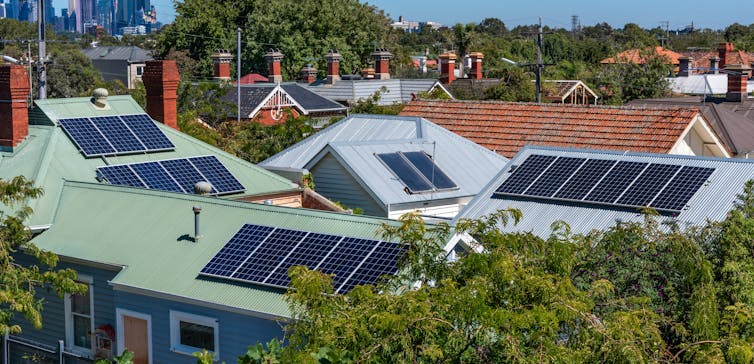
1. Count Assets, Not Income
Government energy rebates and other financial support are often means-tested. Eligibility tends to be based on income.
But research shows a household’s assets are much more important than income in determining which have solar panels. These assets might include shares, savings or physical goods that can be used to help cover the upfront cost of installing the technology.
Governments should target energy rebates to households where the value of the home or other financial assets, such as savings in bank accounts, is low.
2. Tailor Financial Assistance
Current energy rebate schemes often provide the same amount of money to all eligible households, regardless of household assets. This generic policy design is inequitable because many poorer households can’t afford even the reduced cost, so end up getting nothing.
Government energy rebates should be tailored so households receive different amounts, depending on the value of their assets.
This tailored approach is already taken by the broader welfare system, where a recipient’s assets are part of the criteria used to determine what payments they receive.

3. Combine And Conquer
Let’s say a government offers two types of rebates: one for electric vehicles and one for rooftop solar.
Usually, households must financially contribute as well, perhaps through a co-payment or by taking on a loan. However, a poorer household may not be in a position to make even that subsidised contribution.
Or perhaps a household lives in a rental property, and so can’t take advantage of a rooftop solar subsidy.
But what if two subsidies could be combined to form one larger subsidy? That might enable a household to adopt at least one of the technologies.
Governments could allow incentives for other technologies to also be pooled, such as those for household appliances or home batteries.
Thinking Big
The problems of energy inequity extend beyond eye-watering gas and electricity bills. Energy poverty can increase physical and mental health risks and contribute to social isolation, among other harms.
As climate change worsens, extreme weather will only exacerbate the energy equity crisis.
Financial disaster brought on by illness or other challenges can strike us at any time. Many people now struggling to pay their power bills may never have thought they’d experience such hardship.
Improving energy equity is challenging. But it’s time to tackle it head on – and think big.![]()
Rohan Best, Senior lecturer, Macquarie University
This article is republished from The Conversation under a Creative Commons license. Read the original article.
Floods are natural, but human decisions make disasters. We need to reflect on the endless cycles of blame
Brian Robert Cook, The University of MelbourneAs the Victorian city of Echuca prepared for flooding this week, the council moved rapidly to build a temporary earthen levee as others sandbagged. This kept some homes dry, likely worsened flooding in others, and prompted blame from many sides.
For example, homeowner Nick Dean told 3AW:
You can imagine the anger with council who put this levee up and … it’s made it worse because the waters hit it and bounced back (to my home).
After storms of rain come storms of blame. In the shock that follows disasters we often focus on those at hand - the emergency services and local government. While understandable, it is vital we recognise that many people and organisations contribute to disasters. To avoid future cycles of blame, we need to better understand and value the hard work involved in preparation.
Flooding Is Natural – But Flood Disasters Are By Design
US sociologist Dennis Mileti spent a lifetime arguing against the idea that disasters are natural events. To point out their human dimensions, he argued that they were “by design”. What does he mean?
Imagine a house that floods when a tributary of the Murray River breaks its banks. Is it the council’s fault for approving the development? The developer for seeking to convert cheap land to valuable housing? The home buyer for failing to check flood risk maps? The landholders upstream who cleared forests that normally slow floodwaters? Authorities who built levees generations ago, which now overtop? The risk managers for failing to anticipate ‘unprecedented’ rainfall? Those of us who rely on fossil fuels? Insurance companies for giving false security? Government agencies for failing to prepare adequately for predictable floods? There’s a lot of blame to go around.
The recent New South Wales inquiry into the flooding in February-March aimed to make sense of what happened and what went wrong. So too did the 2009 royal commission following Victoria’s Black Saturday bushfires, and the 2020 royal commission that followed the Black Summer fires. Each of these detailed, thoughtful investigations struggled to explain why disasters keep reoccurring – not on a natural front, but on a human one.
When You Fail To Prepare, You Prepare To Fail
In 2015, the Productivity Commission released a report on how we fund natural disaster preparation and recovery, which states:
Governments overinvest in post-disaster reconstruction and underinvest in mitigation that would limit the impact of natural disasters in the first place. As such, natural disaster costs have become a growing, unfunded liability for governments
The imbalance between rescue and recovery (97%) and prevention (3%) is extreme. Seven years later, little has changed. Just look at this week’s announcement of A$600 million in federal spending on disaster relief.
We have been warned about the rising threats. We can better predict future events. As the Productivity Commission explained, we know prevention is cheaper and more effective than response. But we remain unwilling to fund the ongoing human relationships needed to reduce the impacts of disasters.
An Expensive Future
Without doubt, we are entering a period of escalating risk, disasters, impacts and costs. This year, the world’s peak body on climate change released a report on what it means for Australia and the region. They point out that our flood risk is increasing, while our ability to adapt and reduce damages lags behind.
A more flood-prone future will be expensive, whether through escalating recovery costs or belated efforts to reduce the risk, such as Lismore’s buybacks of flood-prone properties, or controversial proposals such as the Warragamba dam raising.
The cost of disasters averaged across Australian households has shot up to A$1,532 over the past 12 months, compared with an annual average of $888 over the previous decade. That’s due in large part to this year’s devastating floods, according to the insurance peak body.
Rising costs may force government to withdraw from recovery and focus only on immediate responses. This could leave Australian homeowners stranded, given insurance is becoming unaffordable in disaster-prone areas. Some estimates suggest up to 500,000 houses could be uninsurable by the end of the decade.
Blame And The Emergency Services
Consider the problem from the point of view of the risk sector – the authorities, agencies and governments responsible for managing risks.
Victoria’s State Emergency Service is the control agency for flooding in the state, meaning that they are responsible for flood planning, supporting community preparedness, and managing the response. Given budget limitations and urgency, it’s natural that they focus on helping those directly in need.
By contrast, partnering with communities to prepare for future disasters is slow, hard, expensive, and difficult to assess in terms of effectiveness. This trade-off is not a decision made by the emergency services or volunteers - even though many in the sector are doubtful about community empowerment. Rather, it’s a consequence of how these agencies are funded.
We know that our top-down, expert-led responses to disaster events do not translate well into the community engagement needed for preparation. To prepare means community members become willing to take costly actions they would not otherwise do. To support those actions requires far more than “awareness raising” – it requires listening, understanding, collaboration, learning and care.
Put simply, training for swift-water rescues or emergency levee building is very different to the relationship building needed to support disaster preparation. The ways that we respond to disasters are not how we should prepare for them.
Many people in the risk sector are trying to change course. In recent research, my colleagues and I interviewed Victorian risk managers over a five year period. We wanted to know why it was so hard to engage with communities to prepare for disasters. We found many were highly committed to making communities better prepared – but stifled by funding and resource constraints, as well as institutional inertia.

What’s the solution? We should have agencies focused on disaster response and others that focus on disaster preparation: both would require ongoing, substantial funding.
As climate change accelerates, we will see more “unprecedented” disasters, from record-breaking flooding to megafires. Blame will follow. Inquiries will be launched. We will ask, again and again, why we cannot seem to prepare. When the next one hits, remember we arrived at this point by design.![]()
Brian Robert Cook, Associate professor, The University of Melbourne
This article is republished from The Conversation under a Creative Commons license. Read the original article.
Lula’s victory in Brazil comes just in time to save the Amazon – can he do it?
Kathryn Baragwanath, Australian Catholic UniversityBrazil’s presidential election result is crucial for the future of the world’s forests. On Sunday, former president and Workers Party candidate Lula da Silva narrowly beat the incumbent, Jair Bolsonaro. Deforestation rates had surged under Bolsonaro.
Bolsonaro was elected in 2018 on an explicitly anti-environmental platform. He had promised to reduce environmental oversight, halt Indigenous land demarcations and allow the extraction of resources from protected areas in the Amazon. Lula’s victory speech signalled a strong commitment to preserving the Amazon, protecting Indigenous people’s rights and reaching a zero-deforestation target.
During Bolsonaro’s first three years in office, 33,200 square kilometres of forest was cleared. That’s an area two-and-a-half times the size of the Greater Sydney region.
Some researchers argue that the Amazon might be nearing its tipping point if current clearing rates continue. That would mean the rainforest loses resilience to changes in climate and land use. It would have profound effects on biodiversity, carbon storage and climate change globally.
Lula’s victory speech marks a clear departure from Bolsonaro’s rhetoric. It’s a welcome shift in the lead-up to the United Nations climate conference, COP27, which starts in Egypt on Sunday. But Lula still faces stiff challenges in delivering his promise to protect the rainforest.
Deforestation Surged In The Past Decade
The Amazon, covering 5.5 million square kilometres, accounts for half of the world’s remaining tropical rainforest. It’s home to enormous biodiversity, has a major influence on the world’s climate and hydrological cycles and acts as a carbon sink.
Preserving the Amazon is crucial for achieving the goal of limiting global warming to 1.5℃ above pre-industrial levels – the goal of the Paris Agreement.
About 60% of the Amazon rainforest is in Brazil. This means the nation’s political shifts have enormous repercussions for this biome and, in turn, for the world’s climate.
Lula’s election creates a possibility of ending the destruction of the forest. In his first two terms in office (2003-10), Lula oversaw significant reductions in forest clearing.
Important environmental policies were enacted in Lula’s first term. Remote sensing was used for real-time monitoring of the Amazon. Protected areas and Indigenous territories were greatly expanded.
Other notable policies included a strategic focus on monitoring and enforcement in areas with high deforestation rates, re-establishing and regulating a system of environmental sanctions, and making compliance a condition of financial aid.
Forest clearing was reduced by more than 80% between 2004 and 2012. However, the 2012 Forest Code relaxed some of the rules for conservation on private lands and granted amnesty for prior deforestation. Rates began to rise again.
The election of Bolsonaro accelerated this upward trend. He cut funding for the environmental agency and attempted to allow mining on Indigenous lands and protected areas. An area of rainforest the size of Greater Sydney was cleared last year alone. It was the worst loss in nearly two decades.
What This Election Means For The Rainforest
Lula’s vigorous promises to protect the Amazon are unprecedented in Brazilian politics. His victory speech provides hope for the future of the rainforest. International pressure to preserve the Amazon, coupled with an active and organised Indigenous movement and civil society, are on his side.
However, Lula still faces an uphill battle in his efforts to halt deforestation. The challenges include:
a weakened environmental agency: Bolsonaro-appointed officials refused to make use of allocated funds and in 2020 the agency hit an all-time low of 591 enforcement agents (down from 989 in 2016), following a 29% cut in 2019
a rise in land-related violence: this includes land invasions and violence against environmental activists and Indigenous peoples
entrenched organised criminal groups with interests in deforesting the Amazon
a conservative-dominated Congress: Lula needs its assent to pass environmental laws
a large agricultural caucus: congressmen from diverse parties are the largest organised coalition in Congress and have been pushing for changes to environmental licensing laws, land regulations and the rules governing Indigenous land demarcations
a pause in much-needed international support: most notable is the Amazon Fund, set up in 2008 by Norway and Germany. Donors paused this funding in 2019 after Bolsonaro abolished the fund’s technical committee amid record high deforestation rates and massive forest fires. Norway (which has donated more than $1.2 billion) has already signalled it wishes to resume climate co-operation once Lula takes office.
What’s more, Lula secured only a narrow election victory and is taking over a country split in half. He will have to design innovative policies that link environmental concerns with sustainable development and economic opportunities. Only then will he win over a polarised nation.
The next four years will be crucial for Brazil and the world. Brazil has once before reduced deforestation. The new government will need to draw lessons from its previous success, while also learning from recent policy failures.
The situation is challenging for the incoming president. But it also presents a great opportunity to re-establish Brazil’s standing in the world and rebrand its agricultural exports as sustainable and just.![]()
Kathryn Baragwanath, Research Fellow, Australian Catholic University
This article is republished from The Conversation under a Creative Commons license. Read the original article.
Brazil election: what I saw on the streets made me cautiously optimistic
Felipe Tirado, King's College LondonI was in Belo Horizonte, the capital of the Brazilian state of Minas Gerais, as the votes were being counted for the nation’s presidential election.
The atmosphere was tense among supporters of former president Luiz Inácio Lula da Silva, after the first round where his lead was much narrower than expected.
As soon as the results were called for the left-wing leader, I could feel a wave of energy from Lula’s supporters. I was following the count with friends on the television and an election app, when we suddenly heard people screaming support from their houses and playing songs to celebrate.
Lula’s supporters rushed into the streets. They were dressed in the traditional Workers’ party red, wearing the Brazilian flag or even just wearing stickers with Lula’s face on them. There was crying, laughing and dancing and many spent most of the night partying here and in other Brazilian cities.
My sister called me asking me to be careful out in the streets. While the energy was mostly positive, there were also some violent incidents. Not far from where I was watching the celebrations, a Lula supporter was killed and four other people shot.
That evening, Lula’s victory speech was about national unity, healing the country, its relationship with other nations and other themes of global relevance, such as the preservation of the Amazon rainforest. Under Jair Bolsonaro, rainforest deforestation increased massively. In the past year, the Amazon region lost 10,781 square kilometres of forest, an area seven times the size of the city of São Paulo, the largest deforestation rate of the past 15 years.
A day after the election, truck drivers who support Bolsonaro closed over 300 roads in 25 states and in the federal district. These truck drivers and other Bolsonaro supporters asked the army to intervene in what they claimed was a stolen election, in an effort to stop Lula becoming president. Initially, the federal highway police (PRF) did not act to prevent the road blocks.
It wasn’t until two days after the election that sitting president Bolsonaro said he would authorise a peaceful transition, although he did not officially concede. Credible reports argue that Bolsonaro made deals for his post-presidential life before making those remarks. The deal made by the president with his current party is believed to secure him a role in the party leadership, and funding for his housing and lawyers.
Despite these protests, a couple of days after the election, it is already possible to see some changes in Brazil. Politicians who were close to Bolsonaro have already started dialogues with Lula and his team. These politicians include the current president of the congress, Arthur Lira, and the governors of two of the largest Brazilian states - São Paulo and Minas Gerais.
Widespread post-election violence was expected. Some experts were anticipating violence similar to the January 6 raid on the Capitol in the US. But the situation in the first 48 hours was “surprisingly stable”, according to Columbia University academic and commentator Ian Bremmer.
World leaders quickly recognised Lula’s victory, building pressure on Bolsonaro to concede. The former president of Uruguay, Pepe Mujica, was in Brazil during the runoffs. Argentina’s president Alberto Fernández arrived in São Paulo on Monday to congratulate Lula. Other global leaders spoke with the newly elected president on the phone. There were other positive signals. Some nations that had previously pulled funding out of Brazil announced it would return. As soon as Lula signalled a change of policy on rainforest deforestation, Norway decided to resume its aid for the Amazon (and other nations may follow). It seems possible to be optimistic.
Violent Campaign
From January 2019 to June 2022, political violence has grown 335%. In 2022 political violence has continued to go up. Forty five homicides for political reasons were recorded in the first half of 2022. In the same period, there were over 214 cases of violence against political leaders.
During the campaign, there were reports of violence in the streets and voter suppression. These reports include allegations of violence by members of state police against Lula’s supporters and systematic voter suppression by the PRF – especially in the north-eastern states where Lula had a lead in the first round of the election.
When the election campaigns began, the bellicose rhetoric of Bolsonaro and his closest allies was aimed at the opposition and state institutions.
In the week of the elections there were various reports of violence, including violence against journalists who were covering the events. Most of the attacks were believed to be by “bolsonaristas” targeting Lula’s supporters.
During the election, the PRF conducted 549 traffic operations, including road blocks. These operations violated a court order concerning accessibility to the elections and stopped hundreds of vehicles taking people to vote. There were reports that this was a coordinated action by Bolsonaro’s government. It is currently under investigation.
While there is worry about how to deal with Bolsonaro’s legacy, for Lula supporters there is beginning to be cautious optimism that this may be the beginning of a new era and life could be about to change for many after the new president takes over on January 1.![]()
Felipe Tirado, Visiting Lecturer in Jurisprudence, King's College London
This article is republished from The Conversation under a Creative Commons license. Read the original article.
Loss and damage: Who is responsible when climate change harms the world’s poorest countries, and what does compensation look like?

You may be hearing the phrase “loss and damage” in the coming weeks as government leaders meet in Egypt for the 2022 U.N. Climate Change Conference.
It refers to the costs, both economic and physical, that developing countries are facing from climate change impacts. Many of the world’s most climate-vulnerable countries have done little to cause climate change, yet they are experiencing extreme heat waves, floods and other climate-related disasters. They want wealthier nations – historically the biggest sources of greenhouse gas emissions – to pay for the harm.
A powerful example is Pakistan, where extreme rainfall on the heels of a glacier-melting heat wave flooded nearly one-third of the country in the summer of 2022.
The flooding turned Pakistan’s farm fields into miles-wide lakes that stranded communities for weeks. More than 1,700 people died, millions lost their homes and livelihoods, and more than 4 million acres of crops and orchards, as well as livestock, drowned or were damaged. This was followed by a surge in malaria cases as mosquitoes bred in the stagnant water.
Pakistan contributes only about 1% of the global greenhouse gas emissions driving climate change. But greenhouse gases don’t stay within national borders – emissions anywhere affect the global climate. A warming climate intensifies rainfall, and studies suggest climate change may have increased Pakistan’s rainfall intensity by as much as 50%.
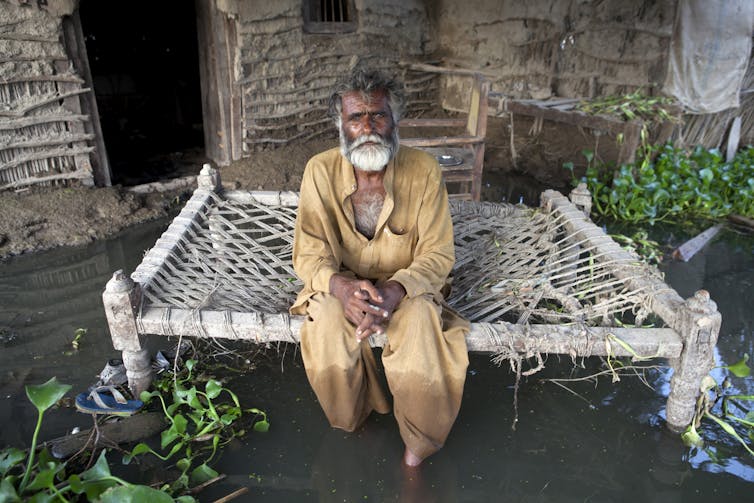
The question of payments for loss and damage has been a long-standing point of negotiation at United Nations climate conferences, held nearly every year since 1995, but there has been little progress toward including a financial mechanism for these payments in international climate agreements.
Many developing countries are looking to this year’s conference, COP27, as a crucial moment for making progress on establishing that formal mechanism.
Africa’s Climate Conference
With Egypt hosting this year’s U.N. climate conference, it’s not surprising that loss and damage will take center stage.
Countries in Africa have some of the lowest national greenhouse gas emissions, and yet the continent is home to many of the world’s most climate-vulnerable countries.
To deal with climate change, these countries – many of them among the world’s poorest – will have to invest in adaptation measures, such as seawalls, climate-smart agriculture and infrastructure that’s more resilient to high heat and extreme storms. The UN Environment Program’s Adaptation Gap Report, released Nov. 3, 2022, found that developing countries need five to 10 times more international adaptation finance than developing countries are providing.
When climate disasters strike, countries need more financial help to cover relief efforts, infrastructure repairs and recovery. This is loss and damage.
Egypt is emphasizing the need for wealthy countries to make more progress on providing financial support for both adaptation and loss and damage.
Climate Injustice And Loss And Damage
The conversation on loss and damage is inherently about equity. It evokes the question: Why should countries that have done little to cause global warming be responsible for the damage resulting from the emissions of wealthy countries?
That also makes it contentious. Negotiators know that the idea of payments for loss and damage has the potential to lead to further discussions about financial compensation for historical injustices, such as slavery in the United States or colonial exploitation by European powers.
At COP26, held in 2021 in Glasgow, Scotland, negotiators made progress on some key issues, such as stronger emissions targets and pledges to double adaptation finance for developing countries. But COP26 was seen as a disappointment by advocates trying to establish a financial mechanism for wealthier nations to provide finance for loss and damage in developing countries.
What Loss And Damage Payments Might Look Like
The lack of resolution at COP26, combined with Egypt’s commitment to focus on financing for adaptation and loss and damage, means the issue will be on the table this year.
The nonprofit Center for Climate and Energy Solutions expects discussions to focus on institutional arrangements for the Santiago Network for Loss and Damage, which focuses on providing technical assistance to help developing countries minimize loss and damage; and on fine-tuning the Glasgow Dialogue, a formal process developed in 2021 to bring countries together to discuss funding for loss and damage.
The V20 group of finance ministers, representing 58 countries highly vulnerable to climate change, and the G-7 group of wealthy nations also reached an agreement in October 2022 on a financial mechanism called the Global Shield Against Climate Risks. The Global Shield is focused on providing risk insurance and rapid financial assistance to countries after disasters, but it’s unclear how it will fit into the international discussions. Some groups have raised concerns that relying on insurance systems can overlook the poorest people and distract from the larger discussion of establishing a dedicated fund for loss and damage.
Two elements of developed countries’ reluctance to formalize a loss and damage mechanism involve how to determine which countries or communities are eligible for compensation and what the limitations of such a mechanism would be.
What would a threshold for loss and damage eligibility look like? Limiting countries or communities from receiving compensation for loss and damage based on their current emissions or gross domestic product could become a problematic and complicated process. Most experts recommend determining eligibility based on climate vulnerability, but this can also prove difficult.
How Will World Leaders Respond?
Over a decade ago, developed countries committed to provide US$100 billion per year to fund adaptation and mitigation in developing countries. But they have been slow to meet that commitment, and it does not cover the damages from the climate impacts the world is already seeing today.
Establishing a loss and damage mechanism is considered one avenue to provide recourse for global climate injustice. All eyes will be on Egypt Nov. 6-18, 2022, to see how world leaders respond.
This article was updated Nov. 3, 2022, with the UNEP Adaptation Gap Report findings.![]()
Bethany Tietjen, Research fellow in climate policy, The Fletcher School, Tufts University
This article is republished from The Conversation under a Creative Commons license. Read the original article.
In disasters, people are abandoning official info for social media. Here’s how to know what to trust

In an emergency, where do you turn to find out what’s going on and what you should do to stay safe?
Traditionally, government agencies have been the “go-to” sources of information in events such as floods and bushfires, as well as health emergencies such as the COVID-19 pandemic.
However, the rise of social media has seen community groups, volunteers and non-government organisations nudging out official channels. While these informal sources often provide faster, more local information, they may also be less reliable than government sources.
So what should you do in an emergency? Here are some tips for how to prepare – and how to decide who to trust when the need arises.
Information Overload
The number of sources of information we can access is growing all the time. This leads to higher information load and lower quality of shared information.
With so many sources of information there is also the possibility of contradictory social media messaging by government and other actors, as we have seen during COVID-19. For emergency planners, this increases complexity and can lead to unpredictable behaviours by citizens who may not be responding to relevant advice or even accurate warnings.
For their part, citizens are demanding more and more information that matches their needs. Citizens clearly find value from local information sources.
Getting Warnings Right?
Our research shows citizens rely heavily on social media information. During an emergency or extreme weather event 55% of surveyed social media users reported they would spend more time on social media, and 88% expected to use social media more for future emergencies.
Many people are switching off from official warnings because they find them hard to understand, or may feel there are too many of them. It may be that they have seen too many situations where the warnings do not affect them - “the boy who cried wolf”. The bottom line is people want answers to immediate questions such as “How does this affect me right now?”
Eroding Control
On the flip side, government agencies also find social media hard to manage. In an emergency, they may not have the resources to keep up with the influx of comments and posts.
These shifts have raised concerns that greater use of social media erodes the established command-and-control information approach that has traditionally been vital to ensuring consistency in emergencies.
The information space is likely to become even more cluttered as extreme weather events become more frequent and begin to overlap.
What Can Citizens Do?
Compounded by misinformation, fake news, disinformation and the plethora of social media and other media, it is no wonder that citizens may be confused and retreating to local or other “go to” social media sources.
It is not a matter of government information versus other sources of information. Often official advice is the starting point for outlining what is going on and encouraging local dialogue. This creates the opportunity for the local community to crowdsource information and offer further insights from locals on the ground.
The first step to being information-ready is to be mindful that there is a whole ecosystem of information sources and channels.
Your basic, trusted source of information should still be government agencies. Trusted local sources can then amplify that information or add context. Likewise, individuals may provide reports from the ground, share their experiences and contribute to how a community makes sense of what’s happening.
Don’t Believe Everything You Read
While community social media sources can be excellent sources of local information, you shouldn’t accept everything you see there at face value.
Local Facebook and WhatsApp groups, for example, can have very fluid membership and their own biases – meaning the quality of information they provide may vary. What’s more, the most visible and engaging posts on social media are often the most controversial ones, not necessarily the most accurate ones.
As well as biases and limited reliability, social media are also vulnerable to organised attempts at disinformation. During Australia’s 2019-20 bushfires, for example, the hashtag #arsonemergency pushed the narrative that arsonists (rather than climate change) were the main cause of the fires.
However, the hashtag turned out to be a concerted effort to change the narrative and even media agencies were fooled.
This highlights the need to crosscheck information obtained from social media.
Emergencies are emotional and volatile events, so you should make yourself familiar with government social media and warning channels before events like bushfires or floods occur. If you know in advance where to go and what sources to trust, it will take some stress out of the situation.
At the same time, educate yourself on how to evaluate information.
Most platforms are trying to counter misinformation. Keep an eye out for tags on content that is harmfully misleading, or indicating official trusted sources.
Debunking popular misinformation is another common tactic, and fact-checkers operating at a local level could reassure the public. So-called “prebunking” - pre-emptive debunking before misinformation has spread – is also effective at reducing susceptibility to misinformation at scale.
Like all approaches, these have their drawbacks. People have to actively choose to engage with them. And, perhaps more significantly, in the volatile situation of an emergency people often simply revert to familiar sources of information.![]()
Stan Karanasios, Associate professor, The University of Queensland and Peter Hayes, Research Fellow, CQUniversity Australia
This article is republished from The Conversation under a Creative Commons license. Read the original article.
7 ‘creepy crawlies’ you don’t need to be afraid of this spooky season

The vast majority of animals on Earth are invertebrates (animals without backbones) – such as insects, arachnids and crustaceans.
These amazing animals are absolutely crucial to our ecosystems: they are pollinators, pest controllers, soil creators and waste managers. Invertebrates also serve as food for countless other animals. Despite all their hard work, many of these creatures are often described as “creepy crawlies”.
Their alien-looking bodies might seem like the stuff of nightmares, but the vast majority of invertebrate species are harmless to humans. In fact, the scariest thing about invertebrates is the rate at which they are quietly disappearing from our planet.
Here are seven fascinating creepy crawlies you don’t need to be afraid of.
Social Huntsman Spiders (Delena Cancerides)
Native to Australia, social huntsman spiders live in large family groups beneath the loose bark of dead or dying trees.
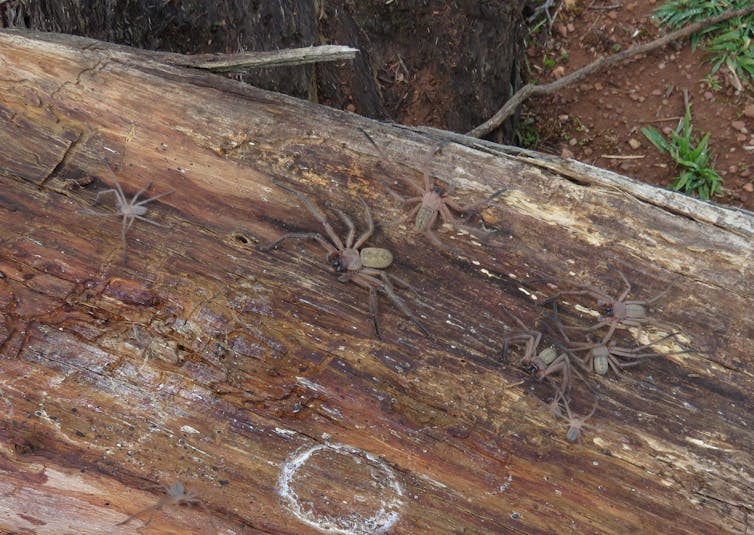
Sound like nightmare fuel? Don’t worry, social huntsman spiders are gentle giants who rarely bite humans (and cause minimal harm when they do).
Unlike most spider species, social huntsmans live together in groups containing a large adult female and up to 300 of her offspring. Spiders will aggressively defend their nest against outsiders, suggesting they have ways of recognising nestmates from non-nestmates.
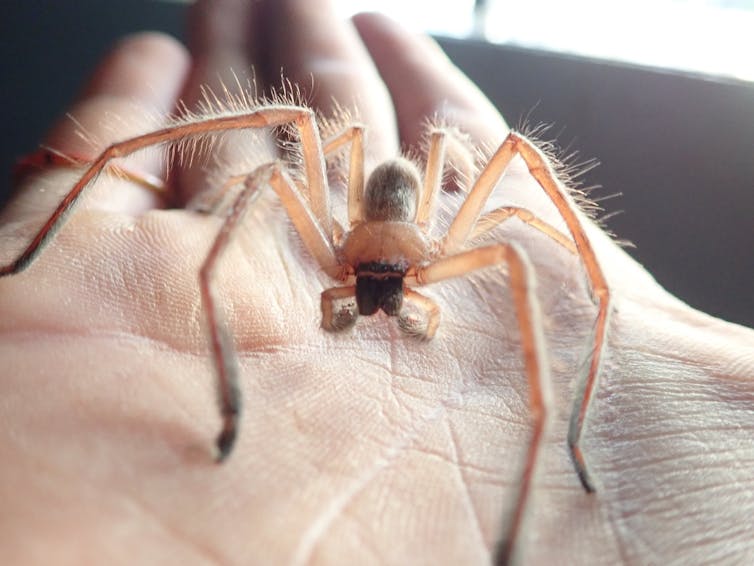
At night, individual huntsmans leave the communal nest to hunt their insect prey. Although they are solitary hunters, spiders that come across the same insect will share food rather than fight with one another. In fact, spiderlings would rather starve to death than cannibalise a fellow spider. By consuming large numbers of bugs, social huntsmans help to keep insect populations under control.
Giant Burrowing Cockroach (Macropanesthia Rhinoceros)
Cockroaches are among the world’s most feared and reviled insects – which is a great pity, as most cockroaches are harmless animals that play a crucial role in our natural environment. Take the giant burrowing cockroach, found in the warm tropical and subtropical forests of Australia.
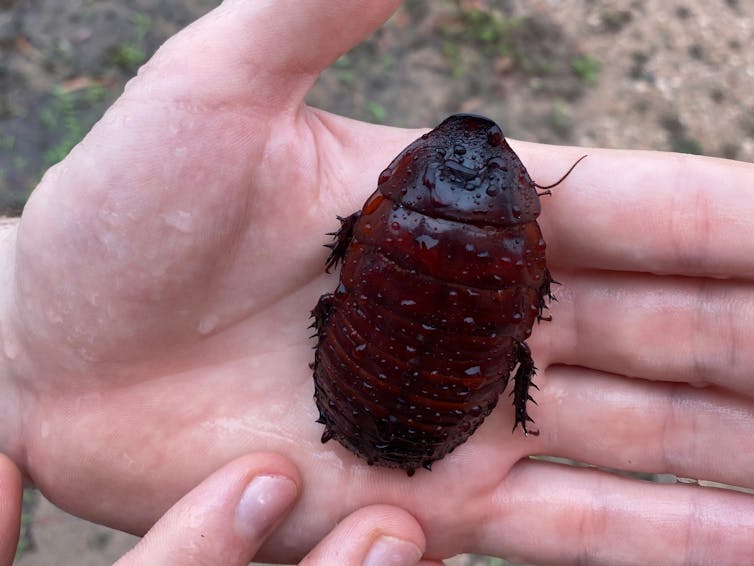
This gentle giant is the world’s heaviest species of cockroach, tipping the scales at 30-35 grams. Unlike its infamous relatives, the giant burrowing cockroach is not a pest and prefers to spend most of its time in underground burrows. Giant burrowing cockroaches feed on dry eucalyptus leaves, which they collect and drag into their burrows.
By moving and mixing the soil, giant burrowing cockroaches help keep soils healthy. They are excellent mothers who feed and care for their young for up to nine months after birth. The giant burrowing cockroach is also surprisingly long-lived, with a lifespan of up to 10 years.
Baphomet Moth (Creatonotos Gangis)
With weirdly pulsating tentacles, the Baphomet moth looks like an alien nightmare – but these moths are simply looking for love. When male Baphomet moths sense the presence of a female, they inflate enormous, tentacle-like organs called “coremata”, which produce an irresistible female-attracting chemical bouquet.
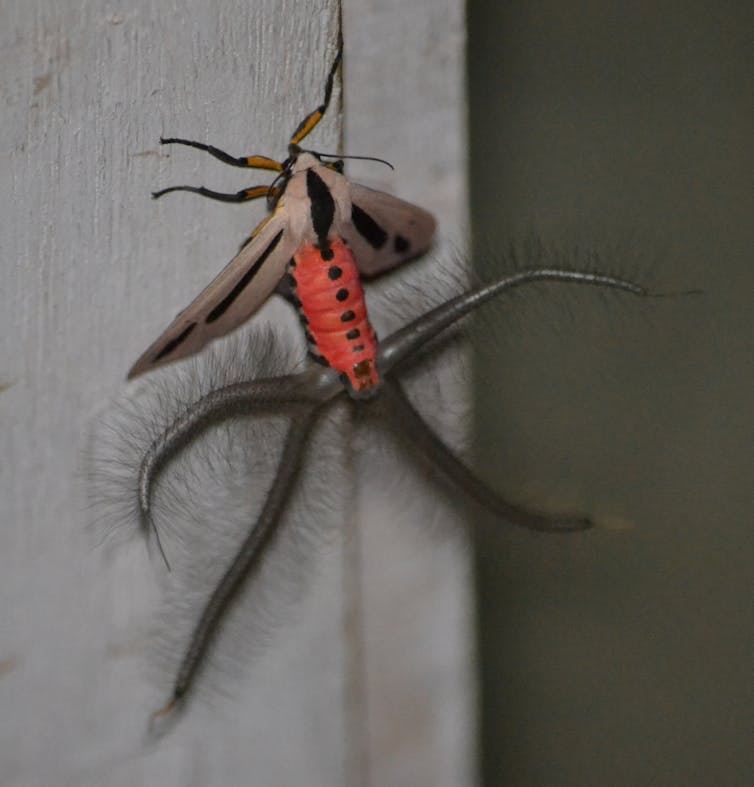
While it’s not the only moth species with coremata, Baphomet moths take theirs to ridiculous lengths, with “tentacles” sometimes exceeding the length of their abdomens.
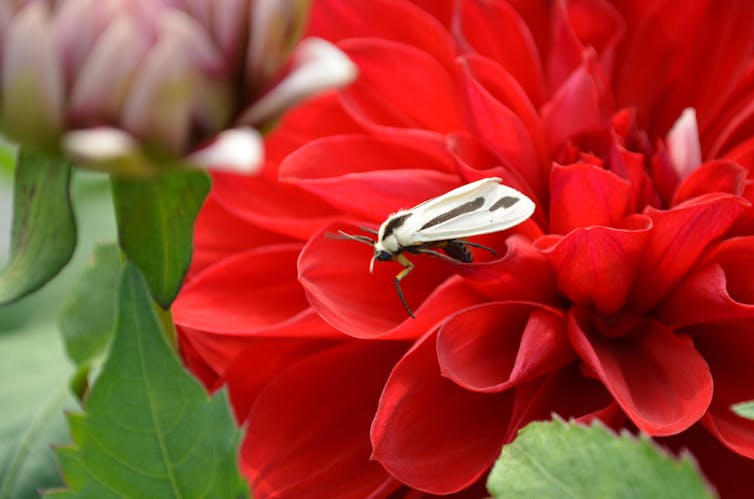
As caterpillars, male Baphomet moths get the ingredients they need to make their female-attracting scents by eating plant leaves that contain chemicals called pyrrolizidine alkaloids. Plants produce these alkaloids to deter plant-munching animals, but Baphomet moths have evolved a way to convert these chemicals into their own attractive scents.
Black Soldier Fly Maggots (Hermetia Illucens)
A big, writhing mass of maggots might not sound like one of nature’s marvels, but the larvae of the black solder fly are recycling superheroes that may one day help humanity cut down on food waste. Roiling masses of soldier fly maggots can rapidly devour food through a process physicists colourfully described as a “maggot fountain”.
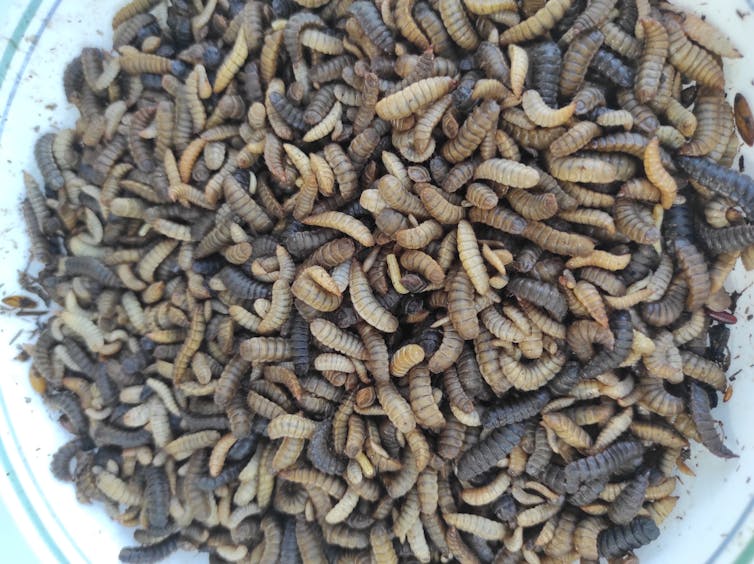
The incredible speed at which maggots demolish food waste has captured the attention of scientists who hope to use soldier fly maggots to convert waste products such as animal faeces and food waste into maggot-based proteins that can be fed to livestock or humans. Yum!
Tailless Whip Scorpion (Amblypygi)
Despite their name, tailless whip scorpions are not scorpions, but instead belong to an unusual group of arachnids called amblypygids. Despite their fearsome appearance, amblypygids lack venom and are timid animals that rarely bite unless threatened.
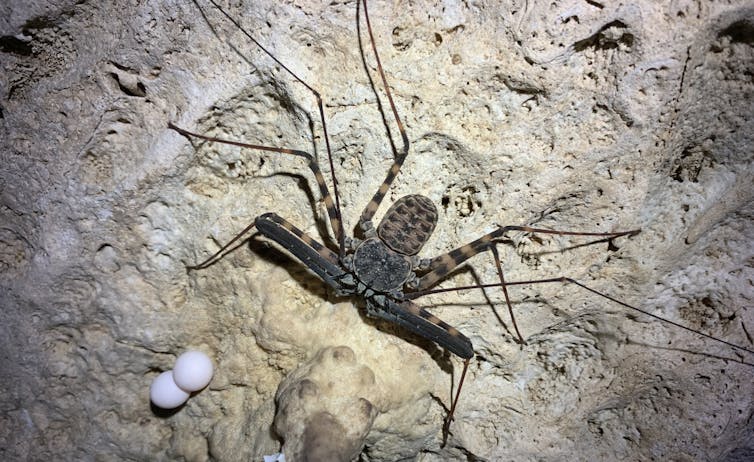
These shy animals prefer to stay hidden in humid habitats such as in leaf litter, inside caves or under bark.
Amblypygids have elongated front legs that act as feelers and help the arachnid locate its insect prey. Once prey is detected, amblypygids use their sharp pedipalps to impale their victim.
Some of these arachnids display complex social behaviours, with mothers staying near and caring for their young for up to a year.
The Giant Elephant Mosquito (Toxorhynchites Speciosus)
Few things in life are as horrifying as the high-pitched squeal of a mosquito in the dark. Now imagine an enormous mosquito five times the size of your average mozzie. Measuring in at a shocking 8mm in length, the Australian elephant mosquito is the world’s largest mosquito species.
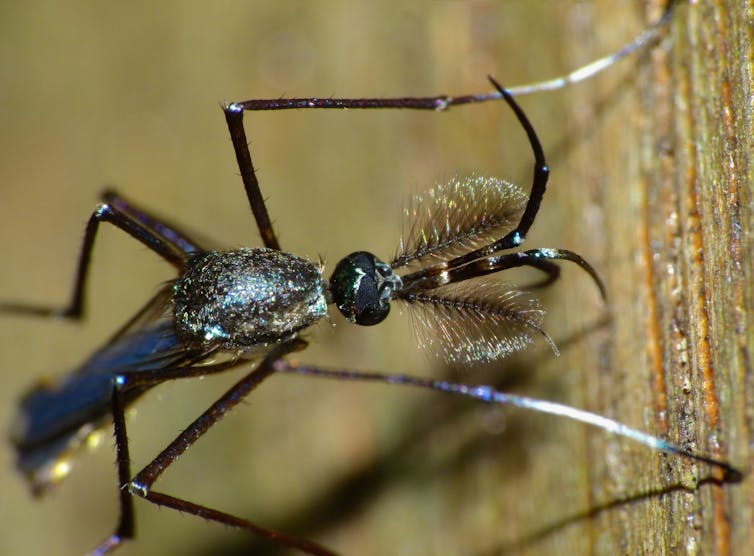
But fear not, this enormous mozzie is a nectar-sipping vegetarian.
Most female mosquitoes need a meal of blood to provide nutrients for their developing eggs. Female elephant mosquitoes collect much-needed nutrients by feeding voraciously on other aquatic insects when they are larvae. And it gets better, because the favourite food of larval elephant mosquitoes is … other mosquito larvae!
Common Scorpion Fly (Panorpa)
Scorpionflies look like a bizarre mashup between a fly and a scorpion. Combine their sinister appearance with a somewhat ghoulish habit of feeding on fresh human corpses, and you have the makings of an excellent horror movie.
Luckily, scorpionflies are not, as their name suggests, flying scorpions, nor are they capable of harming a human. In fact, scorpionfly “stingers” are actually enlarged male genitalia!
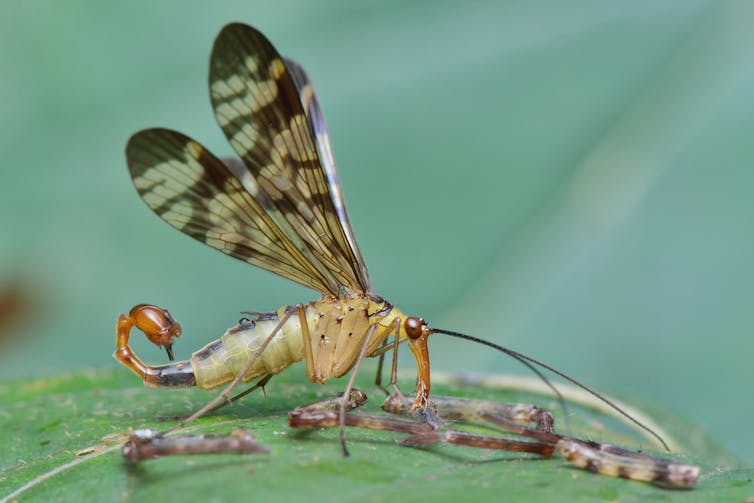
During courtship, male scorpionflies attempt to woo females by offering them either a dead insect or a blob of saliva. Scorpion flies are mostly scavengers and are frequently seen stealing prey from spider webs.
They are among the first insects to turn up on newly deceased corpses, making them important for establishing time of death.![]()
Tanya Latty, Associate professor, University of Sydney
This article is republished from The Conversation under a Creative Commons license. Read the original article.
Cheaper gas and electricity prices are within Australia’s grasp – here’s what to do
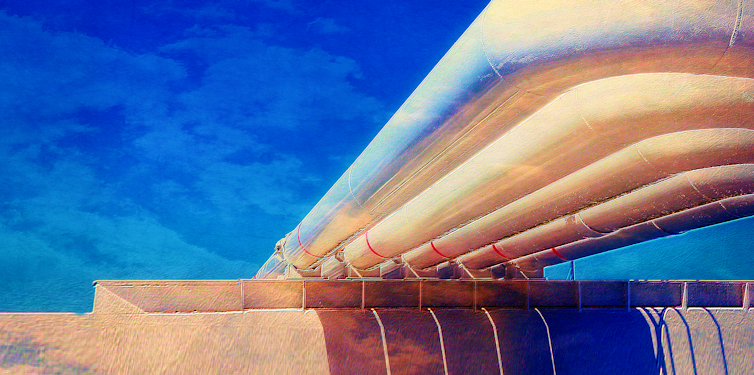
Virtually every country in the world is facing a crisis in energy costs, yet while other countries can’t do much about it, Australia can.
Australia could get its east coast gas producers to supply the domestic gas market for less than A$10 a gigajoule. Earlier this year, prices were more than $40 a gigajoule, and now sit at $25-30 a gigajoule.
Tuesday’s budget factored in retail electricity price rises of more than 50% over two years. The increases in retail gas prices exceeded 40%.
Outlining the budget on Tuesday, Treasurer Jim Chalmers said any responsible government facing these kinds of price hikes needed to “consider a broader suite of regulatory interventions” than in the past.
Chalmers had “more work to do” and would work with the states.
Here is the key step I think should be taken.
To Restrain Electricity Prices, Cut Gas Prices
The quickest way to get electricity prices down is to significantly lower the cost of gas. Gas generators come online after cheaper forms of generation have already been pressed into service, and so help set the final price charged.
Getting gas prices below $10 a gigajoule would also help households that are facing crippling gas bills, as well as industries that rely on sensibly priced energy for their existence including Australia’s glass, paper and fertiliser industries.
Once those industries close, they are unlikely to return.
Here’s what’s been done so far.
The Turnbull, Morrison and recently the Albanese governments have each reached agreements with the three liquid natural gas producers operating out of Gladstone in Queensland that together control around 90% of east coast reserves.
‘Sufficient Supply’ Isn’t Affordable Supply
The agreements require the supply of sufficient gas to meet the needs of east coast gas consumers.
For a while they worked to reduce then-high domestic prices to sensible levels, because international prices were low. But now international prices have climbed to multiples of usual levels, agreements to supply without specific reference to prices are no longer enough.
An agreement to supply “sufficient” quantities of gas at $25-40 per gigajoule is an agreement to not supply much. After industries close, supply will be “sufficient” for the remaining users who can afford it, but it won’t be what we want.
We need to get the east coast liquefied natural gas (LNG) producers to supply sufficient gas to the east coast at prices below $10 a gigajoule. They would continue to make a profit at those prices, albeit much less than otherwise.
As it happens, the Commonwealth has the power to get such commitments, because it has the power to stop exports. That power gives it complete leverage.
We need to be clear on two points.
First, there is no suggestion here that the LNG producers’ long-term contracts are at risk. Asian buyers need not be concerned. All three LNG projects were underwritten by long-term contracts at fixed prices.
What we are talking about is the gas the three producers have available beyond their need to service these long contracts. This gas can either be exported to the spot, or short-term, market at very high prices or sold domestically.
They should be told they can only export gas to the currently lucrative international spot market if they sell sufficient gas domestically to get prices clearly below $10 a gigajoule.
Other Exporters Reserve Gas
Second, what I am suggesting is akin to what all other gas exporting countries do.
Australia has by far the highest domestic gas prices of any gas exporting country. No other country would tolerate its gas being exported while its domestic market is paying the same high prices as international customers.
The gas companies need to come to the party, either to earn their “licence to operate” or to avoid the threat of export controls.
If they know the threat of export controls is real, I believe they will do what’s necessary without the need to actually control exports.
A final point: there can be no argument about “sovereign risk”, the idea that foreign companies will no longer do business with Australia if it changes the rules.
The long-term gas exporting contracts would remain intact. Australia would simply be aligning itself with all other gas exporting nations – and, by the way, with Western Australia, which has long looked after its residents and businesses by reserving gas to ensure reasonable domestic prices.![]()
Rod Sims, Professor in the practice of public policy and antitrust, Crawford School of Public Policy, Australian National University
This article is republished from The Conversation under a Creative Commons license. Read the original article.
Oversized plumbing is adding millions to Australian building costs, thanks to a standard dating back to the 1940s

Outdated plumbing standards are leading to oversized systems and inflated costs for Australian apartment buildings. Their plumbing systems are required to handle demand for water that’s more than three times the actual recorded peak demand, our newly published research shows.
The “designed peak demand” as laid out in the Australian plumbing standard dictates the design and scale of the water services in apartment buildings. The large discrepancy between designed and actual demand in most of these buildings means the water system is much larger than needed, adding to both construction and maintenance costs.
One case study of a 13-storey apartment building estimated A$120,000 could have been saved in building costs if actual peak demand were used for the plumbing design. With hundreds of apartment buildings built in Australia every year, updated standards could save many millions of dollars.
Even more of a problem is that oversized systems don’t work as designed. This leads to plumbing defects that account for a high proportion of strata insurance claims and cost the Australian economy about $200 million a year.
We can improve plumbing systems using more accurate estimates of peak demand. However, it’s not simply a matter of reducing the size of pipes and pumps. This may create other damaging problems such as noisy vibrations in the pipes known as water hammer.
Updating the standard requires work to develop a modern and accurate process of sizing plumbing systems.
Plumbing Standards And Practices Are Outdated
The Australian plumbing standard provides a solution for sizing water services to comply with the Plumbing Code of Australia. Based on the number of apartments, the solution estimates the probable maximum water demand – the “designed peak demand”. The pipe size is then determined based on a desired range for how fast the water flows and water pressure at times of peak use.

This approach is based on the “Barrie Book”. It was developed using the British plumbing code in the mid-1970s. The British and many other international plumbing codes are based on pioneering work by Roy B. Hunter in the US, which was published in 1940.
Hunter monitored the use of water fixtures in two hotel buildings at times of high demand. He used the data to determine each type of fixture’s probability of use at these times. Knowing the fixture flow rate and number of fixtures, the probable total demand can be determined.
We Are Much More Water-Efficient Today
The over-estimation for buildings today is not a reflection on Hunter’s work. It is a result of changes in our water use and advances in plumbing technology.
In Australia, the Water Efficiency Labelling and Standards adopted in response to the Millennium Drought have largely driven changes in fixture flow rates and water use. For example, consumption in our two biggest cities has dropped by between a quarter and a third this century.
In Melbourne, residents used an average of 248 litres per person per day (L/p/d) in 2001. By 2020 it was 158 L/p/d.
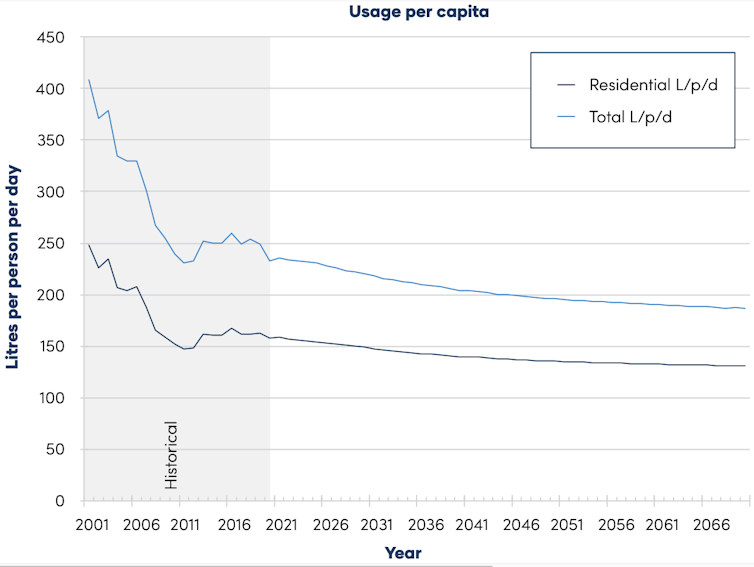
In Sydney, demand fell from about 270 L/p/d to 200 L/p/d over the same period.
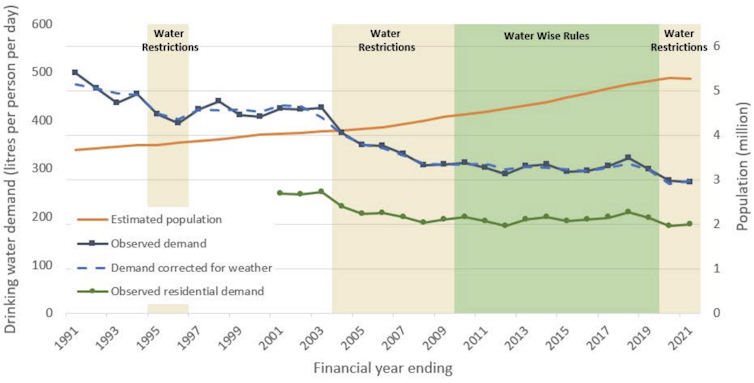
Oversized Systems Are Costly
A case study of a 13-storey residential building with around 120 apartments found the pipe size would have been 40mm instead of 100mm if designed for actual peak demand. This could save $120,000 in building costs. This suggests very large savings could be made across the construction sector.
For the hot water system, the smaller pipe could reduce heat loss by 30-40%, saving another $2,000 a year in energy costs.
Pumps that are oversized as a result of overestimating peak demand are less energy-efficient and cost more. They start and stop more often, to “throttle down” water flow, which reduces the life of the pump. Pressure surges can also create water hammer.

To deliver a given amount of water, wider pipes have lower flow velocities than narrower pipes, so oversized pipes may rarely experience self-cleansing velocities. These relatively high flows flush out trapped air and particulates that can cause pipe walls to wear out faster. Long-term low flows also promote the growth of biofilms and bacteria, which can result in corrosion and discoloured water.
Repeated water hammer, combined with other factors such as water chemistry, can lead to plumbing systems failing prematurely. When this happens after a building developer’s defects and liability period expires (usually within two years for non-structural defects), home owners are left liable for a hidden design problem.
A 2021 strata insurance report listed “water damage including leaks” and “burst water pipe” among the top four most common causes of claims in Australia. The combined claim costs were estimated at over $500 million from 2016-2020, based on a review of some 49% of all strata schemes in Australia. This equates to an annual nation-wide cost of $200 million.

How Can We Improve Plumbing Design?
Deakin researchers are developing methods to estimate peak demand more accurately for multi-level residential buildings. Digital water meters have provided a rich dataset that shows how Australians use water indoors.
With more accurate estimates of peak demand, pipe sizes would reduce significantly using the existing standardised approach. However, smaller pipes may experience more severe water hammer and higher risk of pipe erosion and corrosion due to higher flow.
Future plumbing design has to consider a wide range of flow conditions. Most times the flow is much lower than the expected peak demand, but it can change quickly. Modelling can help us understand how systems perform under various conditions.
Capturing the dynamics of the flow, pressure, temperature and energy use is a challenge that requires further research. Australian plumbing standards and practices need a systematic update that goes beyond peak demand.![]()
James Gong, Senior Lecturer in Water Engineering, Deakin University and Brendan Josey, PhD Candidate, School of Engineering, Deakin University
This article is republished from The Conversation under a Creative Commons license. Read the original article.
These air conditioner alternatives are cheaper – and better for the planet

Heatwaves in numerous countries during 2022 sent all-time temperature records tumbling. On the day before the UK endured a shaded air temperature of 40°C for the first time ever, the Met Office issued its first ever red alert for extreme heat, which meant that people needed to take extra care to keep cool and avoid heat stroke.
In countries like the US and Japan, that might mean staying indoors and cranking up the air conditioning. But air conditioners are still relatively rare in many European countries, including the UK. Should increasingly brutal summer heat – and uncomfortably warm autumns – compel people to install them?
Actually, reasonable comfort can usually be maintained much more efficiently in a climate strongly influenced by the ocean, like the UK, with measures that use hardly any energy at all. These work to keep heat out, keep fresh air flowing and take advantage of the body’s natural ability to cool itself with evaporation.
Anyone considering an air conditioner should beware of ballooning energy bills. The compressors contained within consume sudden bursts of power. In places where air conditioning is common, the surge in demand during heatwaves can overwhelm local power networks. Blackouts result unless the increased electricity demand is met by backup generators, often gas turbines which can be fired up quickly.
All air conditioners compress refrigerant vapours such as hydrochlorofluorocarbons which are greenhouse gases thousands of times more powerful than carbon dioxide if they leak into the atmosphere.
It would be much better for the climate, household finances and the wider economy if buildings were insulated with windows designed to capture sunshine in winter and external shades to keep it out in summer. This is known as passive cooling because no energy is needed to keep the temperature lower.

Another alternative, especially if your building doesn’t have openable windows, is to use a mechanical ventilation system. These use fans to extract heat and indoor air pollution through ducts and sweep fresh air through rooms.
Any air conditioner you install will probably recirculate cooled indoor air rather than fresh air. Meanwhile, because mechanical ventilation systems channel cool air from outside and purge hot air, they can reduce temperatures in every nook and cranny for a fraction of the electricity that air-conditioning uses to constantly treat indoor air.
On days when the temperature is typically hotter outside the building than inside, ventilators can be used in the early morning when they can draw fresh air in at its coolest. If damp filters are installed in the ductwork, ventilation systems can cool a house further with no additional energy use.
From summer 2023, building regulations will require new housing in England to adopt passive or low-energy cooling features such as mechanical ventilation. Where high temperatures linger late at night (think large urban areas like central London and Manchester) housing developers will need to provide either external shutters, window glazing that restricts the sun’s heat but admits light, or awnings over south-facing windows.
Newer buildings are more prone to overheating because they tend to be made from lighter materials that heat up quickly. These dwellings are usually better insulated too, which can serve to trap the heat. Equipping them in this way can reduce the need for air-conditioning.

The London Assembly is mulling ways to adapt existing homes to extreme weather like heatwaves. The use of white-coloured roofing materials or paints to reflect more of the sun’s energy is one of the methods being considered.
So-called “cool roofs” reflect visible rays of sunshine and radiate out invisible infrared heat from white surfaces, a trick deployed beautifully in a lot of traditional Greek architecture. Conventional insulation resists heat coming in but can also trap it indoors. Cool roofs allow heat to rise in your attic and escape from your roof to the sky.
When Air Conditioning May Be Necessary
People and horses are unique among mammals in our ability to regulate body temperature by secreting slightly salty water from millions of sweat pores in the skin. We can thrive in hot climates if we drink sufficient water – as long as our sweat continually evaporates in a breeze.
But at a certain threshold, sweat stops evaporating and accumulates. Humans cannot tolerate a wet-bulb temperature over 35°C (95°F) for long. Wet-bulb is the temperature of an object soaked in water as it is cooled by evaporation. This measure indicates the minimum temperature your skin can reach through sweating, while your core body temperature will be higher.
Whether a space is safe to occupy, and how much rest and rehydration is recommended, can be assessed by a combination of dry- and wet-bulb temperatures as well as exposure to the sun, producing a measure known as the wet bulb globe temperature. This takes into account the limits of sweating to cool you down during high humidity, as well as heat exposure from direct sunlight and that radiated from nearby surfaces like concrete.
A high wet bulb globe temperature is much more important in deciding whether air conditioning is needed than the dry-bulb temperature that weather forecasts report. My research identified where air-conditioning is a necessity: essentially, when there are ten days per year where the wet bulb globe temperature exceeds 29°C (85°F).
I showed that this is a reasonable guide for situations where air-conditioned shelters ought to be opened to the public. Nowhere in the UK has the Met Office (yet) measured so many stressful days in one year that air-conditioning is generally recommended using this guide.
But there are sun-drenched streets flanked by buildings on both sides (known as urban canyons) where weather stations are not installed, and the inside of badly designed buildings that become overheated. In such places, you might need to escape to an air-conditioned shelter or find sanctuary in a wooded park.![]()
Eric Laurentius Peterson, Visiting Research Fellow (Bioclimatic Design), University of Leeds
This article is republished from The Conversation under a Creative Commons license. Read the original article.
The Horn of Africa has had years of drought, yet groundwater supplies are increasing – why?
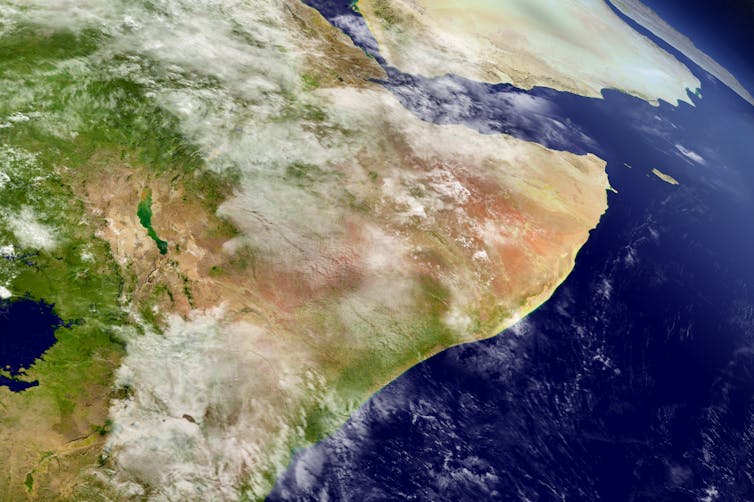
The Horn of Africa – which includes Somalia, Ethiopia, Kenya and some surrounding countries – has been hit by increasingly frequent and devastating droughts. Despite this, it seems the region has an increasing amount of groundwater. And this water could help support drought-stricken rural communities.
That’s the key finding from our new research, in which we discovered that while overall rainfall is decreasing, an increase in “high-intensity” rainfall has led to more water being stored deep underground. It’s a paradoxical finding, yet one that may help one of the world’s most vulnerable regions adapt to climate change.
In the Horn of Africa, rural communities live in a constant state of water scarcity punctuated by frequent periods of food insecurity. People there rely on the “long rains” between March and May and the “short rains” between October and December to support their lives and livelihoods.
As we write this, the region’s drylands are experiencing a fifth consecutive season of below-average rainfall. This has left 50 million people in acute food insecurity. The droughts have caused water shortages, livestock deaths, crop failures, conflict and even mental health challenges.
The drought is so severe that it is even affecting zebras, giraffes and other wildlife, as all surface waters are drying up and edible vegetation is becoming scarce. Worryingly, a sixth failed rainy season has already been predicted for March to May 2023.
Long Rains Down, Short Rains Up
In a new paper we investigated changes in seasonal rainfall in the Horn of Africa over the past 30 years. We found the total rainfall within the “long rains” season is declining, perhaps related to the warming of a particular part of the Pacific Ocean. However, rainfall is increasing in the “short rains”. That’s largely due to a climate phenomenon known as the Indian Ocean Dipole, when a warmer-than-usual Indian Ocean produces higher rainfall in east Africa, similar to El Niño in the Pacific.
We then investigated what these rainfall trends mean for water stored below ground. Has it decreased in line with declining “long rains”, or risen due to the increasing “short rains”?
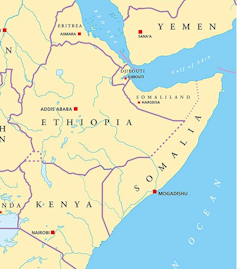
To do this we made use of a pair of satellites which orbit repeatedly and detect small changes in the Earth’s gravitational field that can be interpreted as changes in the mass of water storage. If there’s a significant increase in water storage underground, then the satellite will record a stronger gravity field at that location compared to the previous measurement, and vice versa. From this, the mass of water added or lost in that location can be determined.
Using these satellite-derived estimates, we found that water storage has been increasing in recent decades. The increase correlates with the increasing “short rains”, and has happened despite the “long rains” getting drier.
Given that the long rains deliver more seasonal rain than the short rains, we wanted to understand the paradoxical finding that underground water is increasing. A clue is given by examining how rainfall is converted into groundwater in drylands.
When rain is light and drizzly, much of the water that reaches the ground dampens the soil surface and soon evaporates back into the warm, dry atmosphere. To become groundwater, rainfall instead needs to be intense enough so that water will quickly infiltrate deep into the soil. This mostly happens when lots of rain falls at once and causes dry riverbeds to fill with water which can then leak into underground aquifers.
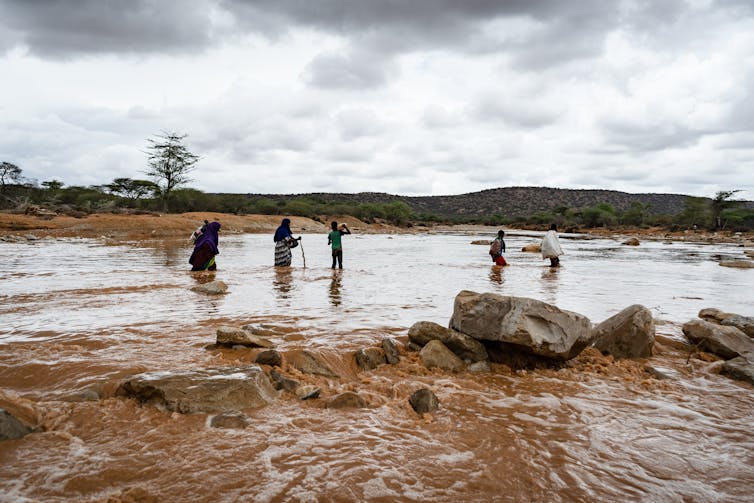
These most intense rainfall events are increasing in the “short rains”, in line with the overall increase in total rain in that season. And despite a decrease in overall rainfall in the “long rains”, intense rainfall has remained consistently high over time. This means that both rainy seasons have enough intense rainfall to increase the amount of water stored underground.
Finally, we demonstrated that the increasing water storage in this region is not connected to any rise in soil moisture near the surface. It therefore represents “banked” water that resides deep below ground and likely contributes to a growing regional groundwater aquifer in this region.
Groundwater Can Help People Adapt To Climate Change
While early warning networks and humanitarian organisations focus on the urgent impacts of drought, our new research points to a silver lining that may support long-term climate adaptation. Those rising groundwater supplies we have identified may potentially be exploited to support people in rural areas whose food and water are increasingly insecure.
But there are some caveats. First, we have not assessed the depth of the available groundwater across the region, but we suggest that the water table is shallow enough to be affected by seasonal rainfall. This means it may also be shallow enough to support new bore holes to extract it. Second, we do not know anything about the quality of the stored groundwater and whether it can be deemed suitable for drinking. Finally, we do not know exactly what will happen if the most extreme droughts of the past few seasons continue and both long and short rains fail, causing intense rainfall to decrease too.
Nevertheless, our findings point to the need for extensive groundwater surveys across the Horn of Africa drylands to ascertain whether this increasing water resource may be viable enough to offset the devastating droughts. Groundwater could potentially irrigate fields and provide drinking water for humans and livestock, as part of a strategy to help this vulnerable region adapt to the effects of climate change.![]()
Michael Singer, Professor in Physical Geography (Hydrology and Geomorphology), Cardiff University; Katerina Michaelides, Associate Professor, School of Geographical Sciences , University of Bristol, and Markus Adloff, PostDoctoral Researcher, Earth System Modelling, Université de Berne
This article is republished from The Conversation under a Creative Commons license. Read the original article.
How coal miners and factory workers helped found the environmental movement

Rachel Carson, a scientist and writer from rural Pennsylvania, published Silent Spring 60 years ago. Many credit this book, which meticulously documented the damage that DDT pesticides were inflicting on wildlife, farm animals and people as early as the 1950s, with launching the modern environmental movement.
Carson gathered stories from across the US to illuminate the dangers of indiscriminate pesticide use and the threats contaminated land posed to life. She would battle the chemical industry’s accusations of alarmism for the rest of her life. But Silent Spring struck a chord with a public increasingly sceptical of the ethics and efficacy of industrial society.
Carson’s criticism of the cosy relations between businesses and governments echoed the concept of the power elite, popularised by the New Left intellectual C. Wright Mills a few years earlier. In Mills’ assessment, American society was dominated by bureaucracies that included both big business but also organised labour.
Environmentalists who were inspired by Carson railed against these vested interests. They were dropouts and opponents of the established system, or at least outsiders to it. By 1990, Richard White, an American environmental historian, would pose the question “are you an environmentalist or do you work for a living?” White’s essay took aim at the environmental pretensions of white-collar professionals who pitted themselves against manual workers employed in polluting industries.
More recent scholarship has built on White’s insights, revealing the knowledge and respect for nature among such workers. Researchers have emphasised that it is these communities which have typically suffered most from pollution and industrial accidents. In The Myth of Silent Spring, social historian Chad Montrie told a story of the far more diverse coalitions which shaped American environmentalism.

Working-Class Environmentalism
Montrie underlined the role of automotive, oil, chemical and mining trade unions in campaigning for environmental improvements from the beginning of the 1960s, when Carson’s book was making waves. The United Auto Workers supported campaigns for fresh air and clean water in American cities such as Detroit, Michigan while the United Farm Workers shared Carson’s opposition to the pesticides poisoning their members in the fields of California.
Montrie also highlighted the role of civil rights activists in shaping demands for environmental justice among poor and working-class black Americans. This inspired campaigns against lead poisoning in cities such as St Louis, Missouri and for cleaner air quality in Gary, Indiana. These groups worked with those who more closely resembled the received image of Carson-inspired environmentalists.
My ongoing research about community and workplace experiences of energy transitions in the UK has exposed something similar. I have recorded testimonies from middle-class environmentalists who joined protests such as Friends of the Earth’s 1971 campaign against Schweppes’ policy of non-returnable bottles. Many of these people found their fellow campaigners on university campuses, in left-wing bookshops and wholefoods stores. These places became important recruiting grounds for the anti-nuclear movement too. Activists from this milieu organised demonstrations against the building of the Torness nuclear power station in East Lothian, Scotland, during the late 1970s and early 1980s.
These were rarely concerns held by university graduates alone. The Torness campaign enjoyed support from farmers who aided activists occupying the power station site. They also provided the spectacle of a cavalcade of tractors driving through the centre of Edinburgh in support of the protest.
One example of working-class agitation for environmental action can be found in the records of the Scottish Trades Union Congress. At the union confederation’s 1972 annual meeting, W.B. Blairford of the electricians’ union moved an anti-pollution resolution which set an agenda for class-conscious environmentalism. He said that while environmentalism was seen as a “largely academic and middle-class trend”, it was “vital that the interests of the workers were fully represented in this important debate”.
He highlighted smelter workers suffering industrial illnesses, asbestos exposure among factory workers and the dangerous conditions coal miners endured, as well as contemporary studies on pollution near steelworks in Durham and cement factories in Hampshire to argue that “it was the workers who suffered most from pollution at home”.

These sentiments were not confined to conference resolutions either. In one instance of industrial action that would affect the UK’s policy for nuclear waste storage, the National Union of Seamen refused to cooperate with dumping radioactive material at sea during the early 1980s.
Extractors Against Extractivism
These are formative trends in the modern environmentalism of anglophone societies and deindustrialisng economies. This makes sense in understanding a movement shaped by the popularity of Silent Spring. But it overlooks many of the communities bearing the brunt of environmental crises like climate change.
A more combative activism emerged in the activities of trade unionists and indigenous groups in Latin America. Ecuador saw movements opposed to the oil industry develop broader criticisms of extractivismo: a rejection of any economic model predicated on extracting resources wrongfully acquired through colonialism.
This rejects the older socialist case for economic development through national ownership of oil and minerals, and finds common cause with campaigners in more recently formed groups like Extinction Rebellion. The fruitfulness of any potential collaboration is unknown. Extinction Rebellion has rejected political alignments before.
These debates and others like them will determine the future of environmentalism. Already, there are glimmers of what is possible. Visitors to Glasgow during the most recent UN climate change summit may have seen Greta Thunberg marching with striking refuse workers and campaigners from islands threatened with sea-level rise and landscapes scarred by oil and mineral extraction.![]()
Ewan Gibbs, Lecturer in Global Inequalities, University of Glasgow
This article is republished from The Conversation under a Creative Commons license. Read the original article.
If more houses had water butts, it could help with drought, flooding and water pollution

Earlier this year, southern England experienced its driest July on record. The drought affected many parts of the UK and grew so acute that Thames Water’s hosepipe ban will remain in force into 2023.
But rainfall in August was heavy. The volume of rain caused outdated drainage and sewerage systems to overflow, degrading the quality of many of the UK’s rivers.
Extreme weather patterns such as these are set to dominate our future. The Environment Agency predicts that demand for water in southern England may outstrip supply in the next 20 years. Yet, at the same time, as many as 5.2 million UK properties are threatened by flooding.
Our research suggests that collecting rainwater in water butts may offer a solution to these problems. This cheap, small-scale intervention could help protect households against water risks while engaging those involved with water issues. Unfortunately, the government tends to ignore this scale of intervention.
Engineered Solutions To Water Issues
Water management in England is largely isolated to large infrastructure projects. Reservoirs are built to withstand drought and larger sewers are seen as the solution to flooding and water pollution.
But these approaches are costly; Central London’s new sewer, the Thames Tideway Tunnel, will cost £4.9 billion.
They can also harm the environment. The Thames Tideway tunnel will prolong the energy-intensive pumping of dirty sewage, while building reservoirs often involves the flooding of agricultural land and wildlife habitats.
These government and water industry solutions also fail to engage the public. Public awareness of the dual drought and flood crises, therefore, remains low. According to a report published in 2020 and partly funded by the Environment Agency, 72% of people surveyed believe that the UK has enough water to meet the country’s needs.

Re-Thinking Water Management
There are other ways to manage the UK’s water better.
The roof area of an average terraced house in the UK (30m²) receives 19,000–55,000 litres of rain each year. Our modelling suggests that a significant proportion of household water consumption could be met by collecting this water.
Averaged across the UK, we found that a 210-litre rain tank – equivalent to a small bath – could supply 15% of a household’s total annual water consumption. But this will be subject to clear geographic and seasonal variation.
The calculation accounts for the loss of rainwater through processes such as evaporation. Current regulations also restrict the use of rain tank water to non-potable demands, such as flushing toilets.
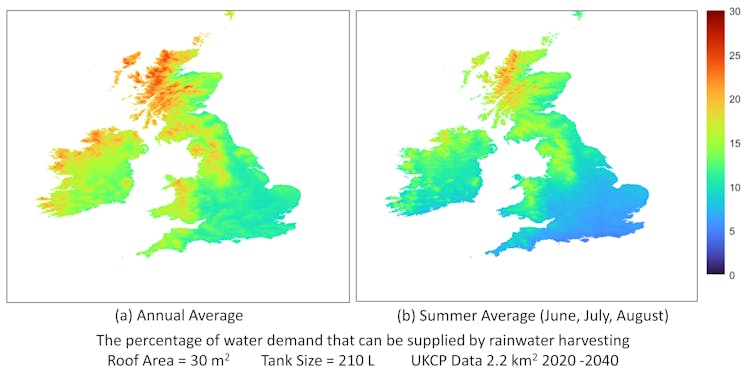
In the wetter northwest of Scotland, we found that 26% of a household’s annual water consumption could be met by collecting rainwater. In contrast, only 9% could be supplied in the southeast of England, dropping to 4% in the driest months. Although this seems a low value, it still equates to 14 litres of water per household each day.
Reducing The Risk Of Flooding And Pollution
In the future, wetter winters will also become more common. This will amplify the risk of flooding and water pollution. Our research suggests that a network of small water butts fitted across towns or cities could substantially reduce these risks.
In the event of a storm, a 210-litre water butt can capture 7mm of rainfall from the roof of an average terraced house. To put this in context, in the English city of Hull, a storm that deposits 22.3 mm of rainfall is sufficient to cause flooding. This amount of rain typically falls once every ten years.
So if we can store 7mm of that rain in a water butt, then the amount that is required to cause a flood rises to 28.6mm. A storm that results in this amount of rainfall only occurs once every 30 years.

This approach is not without its limitations. The area that is occupied by roofs is far smaller than the total area over which rain falls. The hydrology of a flood is also complex, including the movement of water through a catchment from uplands to lower-lying areas.
But if used in combination with sustainable drainage systems and other natural flood management measures, water butts could make a small but meaningful contribution to reducing the threat of flooding and water pollution. Through various processes, sustainable drainage systems provide an alternative to the direct channelling of rainwater through pipes and sewers to nearby watercourses. By providing additional storage in ponds, for example, the flow of surface water can be reduced.
Even then, large numbers of households would still need to install water butts for this approach to have any effect. We have worked with local voluntary organisations to establish a non-profit cooperative called Susdrainable that specialises in the design and installation of rain tanks (water butts). Together, we have installed rain tanks on public buildings in Hull and are working on signage and leaflets to provide households with the information they need to participate in water management.
Water butts are not a replacement for large-scale water management infrastructure, but they do offer a cheaper mitigation option – one that also engages the public with water issues. There is a role for everyone as we prepare for a future dominated by drought and flood.![]()
Liz Sharp, Senior Lecturer in Urban Studies and Planning, University of Sheffield; Kiera Chapman, Research Associate, University of Sheffield, and Ruth Quinn, Assistant Lecturer of Civil, Environmental and Water Engineering, Atlantic Technological University Sligo
This article is republished from The Conversation under a Creative Commons license. Read the original article.
Nigeria’s deadly conflicts over water and grazing pasture are escalating – here’s why
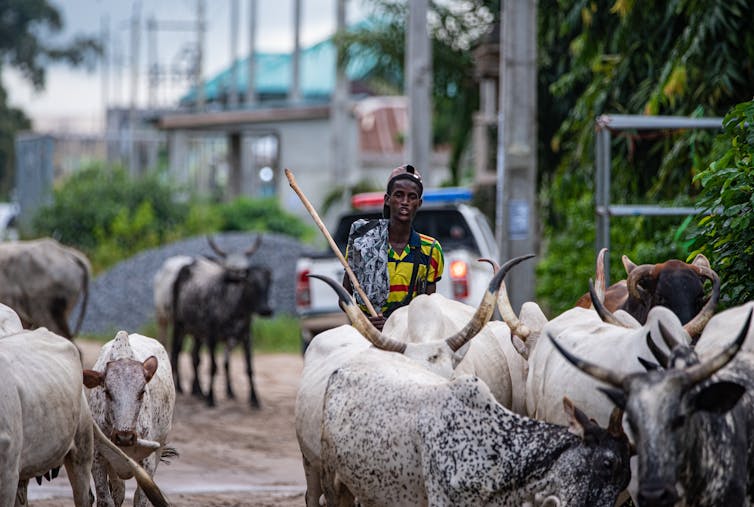
Violence in the Sahel is escalating, killing more than 11,000 people in Mali, Niger and Burkina Faso since 2012. Such conflict has emerged for a number of reasons, including religious insurgencies and access to water and grazing resources. Climate change leading to environmental degradation exacerbates these clashes.
The Sahel region is a large semi-arid land mass located to the immediate south of the Sahara desert. It stretches from Senegal on Africa’s western coast to Eritrea on the opposite Red Sea coast. It is home to the Fulani, or Fula people, one of the most widely dispersed ethnic groups in West Africa. Nomadic Fulani herdsmen have historically grazed their cattle throughout the region.
But the Sahel is acutely experiencing the effects of climate change. Environmental degradation has diminished the grazing opportunities available to the Fulani. According to the World Bank, 75% of the Sahel is now too dry for livestock herders to settle in one place.
Since the droughts of the 1970s and 1980s, Fulani herdsmen have gradually been forced to migrate away from the Sahel region in search of pasture and water for their livestock. Their settlement into areas they previously visited nomadically has become a source of dispute with settled farmers. As they compete for access to scarce water and grazing resources, these disputes often spill over into violent conflict.
Violence In Nigeria Is Escalating
Violence between herders and farmers – called “eco-violence” – has occurred for decades. But in recent years the conflict has intensified.

This is particularly true in Nigeria’s Benue state, where 92 people were killed in ten different incidents between March and June of 2022. Located in the country’s fertile Middle Belt, competition over arable land and grazing resources has grown intense. Both settled farmers and Fulani herders claim rights to the land.
My research examined the reasons behind the escalating violence. I found that the events experienced by Nigeria in recent years were consistent with what is known as the “Homer-Dixon model”.
The Homer-Dixon model predicts that scarcity of environmental resources and socio-political processes – such as population growth – lead to political instability and the formation of authoritarian political structures. This in turn leads to changes in the distribution of opportunities and thereby to increased violent conflict.
General Muhammadu Buhari, a Fulani man, was elected as Nigeria’s president in 2015. Through nepotistic domestic policies and corruption, Buhari’s government has shifted the political opportunities available in Nigeria to the Fulani ethnic group. This has created the conditions for violence to escalate.
Between 2015 and 2018, the Nigerian government increased its efforts to secure grazing pasture for Fulani herders. They proposed the formation of open grazing zones which would take land from indigenous farmers and give it to Fulani herdsmen. Although the bills were prevented from coming into law by Nigerian legislators, Buhari’s special adviser urged Nigerians to either surrender their lands to Fulani herders or risk losing their lives in the persisting conflict.
Policies such as these, that clearly favour certain groups, justify the perceived grievances of Fulani herders and create an atmosphere that encourages violence.
Under Nigeria’s incumbent government, the likelihood of Fulani herders facing punishment for committing violent acts have also reduced. The Miyetti Allah, a Fulani cattle breeders association, claimed responsibility for the massacre of 72 people in 2018. But the group’s leader, Garius Gololo, has yet to be charged with any offence.
Against this backdrop, herders have been allowed to violently address their grievances against the settled farmers of Nigeria’s Middle Belt. This has resulted in reprisal attacks and extensive destruction within the region. As of 2021, 357,473 people have been displaced in Benue State.
What Needs To Change?
Climate change forces people to migrate and creates the necessary pressure for conflict to emerge. Avoiding migration towards places where agricultural and water resources are already scarce can only be done through action to mitigate climate change.
But the surge in violence has largely been caused by failures of government. Addressing Nigeria’s structure of political opportunities is therefore equally important. In Nigeria – and much of the Sahel region – ethnic relations underpin political posts, government contracts and sanctions for criminal behaviour. In these countries, the ethnic groups of those in power are often afforded greater political opportunity.
History shows that this can jeopardise effective governance and the security of a country’s ethnic groups. When the rules are changed to favour one group, this may encourage clashes between ethnic groups that frequently become violent.
Change to an open political system in which the government ensures equitable representation will contribute to reducing the impacts of environmental resource scarcity and consequently the rise of eco-violence. If neither the effects of Nigeria’s current political structure favouring certain ethnic groups are addressed nor any countermeasures taken, widespread violence will continue following the next election in 2023.![]()
Olumba E. Ezenwa, Doctoral Researcher, Royal Holloway University of London
This article is republished from The Conversation under a Creative Commons license. Read the original article.
Pittwater Reserves: Histories + Notes + Pictorial Walks
A History Of The Campaign For Preservation Of The Warriewood Escarpment by David Palmer OAM and Angus Gordon OAM
America Bay Track Walk - photos by Joe Mills
An Aquatic June: North Narrabeen - Turimetta - Collaroy photos by Joe Mills
Angophora Reserve Angophora Reserve Flowers Grand Old Tree Of Angophora Reserve Falls Back To The Earth - History page
Annie Wyatt Reserve - A Pictorial
Avalon's Village Green: Avalon Park Becomes Dunbar Park - Some History + Toongari Reserve and Catalpa Reserve
Bairne Walking Track Ku-Ring-Gai Chase NP by Kevin Murray
Bangalley Headland Bangalley Mid Winter
Banksias of Pittwater
Barrenjoey Boathouse In Governor Phillip Park Part Of Our Community For 75 Years: Photos From The Collection Of Russell Walton, Son Of Victor Walton
Barrenjoey Headland: Spring flowers
Barrenjoey Headland after fire
Bayview Baths
Bayview Wetlands
Beeby Park
Bilgola Beach
Botham Beach by Barbara Davies
Bungan Beach Bush Care
Careel Bay Saltmarsh plants
Careel Bay Birds
Careel Bay Clean Up day
Careel Bay Playing Fields History and Current
Careel Creek
Careel Creek - If you rebuild it they will come
Centre trail in Ku-ring-gai Chase National Park
Chiltern Track- Ingleside by Marita Macrae
Clareville Beach
Clareville/Long Beach Reserve + some History
Coastal Stability Series: Cabbage Tree Bay To Barrenjoey To Observation Point by John Illingsworth, Pittwater Pathways, and Dr. Peter Mitchell OAM
Cowan Track by Kevin Murray
Curl Curl To Freshwater Walk: October 2021 by Kevin Murray and Joe Mills
Currawong and Palm Beach Views - Winter 2018
Currawong-Mackerel-The Basin A Stroll In Early November 2021 - photos by Selena Griffith
Currawong State Park Currawong Beach + Currawong Creek
Deep Creek To Warriewood Walk photos by Joe Mills
Drone Gives A New View On Coastal Stability; Bungan: Bungan Headland To Newport Beach + Bilgola: North Newport Beach To Avalon + Bangalley: Avalon Headland To Palm Beach
Duck Holes: McCarrs Creek by Joe Mills
Dunbar Park - Some History + Toongari Reserve and Catalpa Reserve
Dundundra Falls Reserve: August 2020 photos by Selena Griffith - Listed in 1935
Elsie Track, Scotland Island
Elvina Track in Late Winter 2019 by Penny Gleen
Elvina Bay Walking Track: Spring 2020 photos by Joe Mills
Elvina Bay-Lovett Bay Loop Spring 2020 by Kevin Murray and Joe Mills
Fern Creek - Ingleside Escarpment To Warriewood Walk + Some History photos by Joe Mills
Iluka Park, Woorak Park, Pittwater Park, Sand Point Reserve, Snapperman Beach Reserve - Palm Beach: Some History
Ingleside
Ingleside Wildflowers August 2013
Irrawong - Ingleside Escarpment Trail Walk Spring 2020 photos by Joe Mills
Irrawong - Mullet Creek Restoration
Katandra Bushland Sanctuary - Ingleside
Lucinda Park, Palm Beach: Some History + 2022 Pictures
McCarrs Creek
McCarr's Creek to Church Point to Bayview Waterfront Path
McKay Reserve
Mona Vale Beach - A Stroll Along, Spring 2021 by Kevin Murray
Mona Vale Headland, Basin and Beach Restoration
Mount Murray Anderson Walking Track by Kevin Murray and Joe Mills
Mullet Creek
Narrabeen Creek
Narrabeen Lagoon Catchment: Past Notes Present Photos by Margaret Woods
Narrabeen Lagoon State Park
Narrabeen Lagoon State Park Expansion
Narrabeen Rockshelf Aquatic Reserve
Nerang Track, Terrey Hills by Bea Pierce
Newport Bushlink - the Crown of the Hill Linked Reserves
Newport Community Garden - Woolcott Reserve
Newport to Bilgola Bushlink 'From The Crown To The Sea' Paths: Founded In 1956 - A Tip and Quarry Becomes Green Space For People and Wildlife
Pittwater spring: waterbirds return to Wetlands
Pittwater's Lone Rangers - 120 Years of Ku-Ring-Gai Chase and the Men of Flowers Inspired by Eccleston Du Faur
Pittwater's Parallel Estuary - The Cowan 'Creek
Resolute Track at West Head by Kevin Murray
Resolute Track Stroll by Joe Mills
Riddle Reserve, Bayview
Salvation Loop Trail, Ku-Ring-Gai Chase National Park- Spring 2020 - by Selena Griffith
Seagull Pair At Turimetta Beach: Spring Is In The Air!
Stapleton Reserve
Stapleton Park Reserve In Spring 2020: An Urban Ark Of Plants Found Nowhere Else
Stony Range Regional Botanical Garden: Some History On How A Reserve Became An Australian Plant Park
The Chiltern Track
The Resolute Beach Loop Track At West Head In Ku-Ring-Gai Chase National Park by Kevin Murray
Topham Track Ku-Ring-Gai Chase NP, August 2022 by Joe Mills and Kevin Murray
Towlers Bay Walking Track by Joe Mills
Trafalgar Square, Newport: A 'Commons' Park Dedicated By Private Landholders - The Green Heart Of This Community
Tranquil Turimetta Beach, April 2022 by Joe Mills
Turimetta Beach Reserve by Joe Mills, Bea Pierce and Lesley
Turimetta Beach Reserve: Old & New Images (by Kevin Murray) + Some History
Turimetta Headland
Warriewood Wetlands and Irrawong Reserve
Whale Beach Ocean Reserve: 'The Strand' - Some History On Another Great Protected Pittwater Reserve
Wilshire Park Palm Beach: Some History + Photos From May 2022
Winji Jimmi - Water Maze

New Shorebirds WingThing For Youngsters Available To Download
A Shorebirds WingThing educational brochure for kids (A5) helps children learn about shorebirds, their life and journey. The 2021 revised brochure version was published in February 2021 and is available now. You can download a file copy here.
If you would like a free print copy of this brochure, please send a self-addressed envelope with A$1.10 postage (or larger if you would like it unfolded) affixed to: BirdLife Australia, Shorebird WingThing Request, 2-05Shorebird WingThing/60 Leicester St, Carlton VIC 3053.

 Shorebird Identification Booklet
Shorebird Identification Booklet
The Migratory Shorebird Program has just released the third edition of its hugely popular Shorebird Identification Booklet. The team has thoroughly revised and updated this pocket-sized companion for all shorebird counters and interested birders, with lots of useful information on our most common shorebirds, key identification features, sighting distribution maps and short articles on some of BirdLife’s shorebird activities.
The booklet can be downloaded here in PDF file format: http://www.birdlife.org.au/documents/Shorebird_ID_Booklet_V3.pdf
Paper copies can be ordered as well, see http://www.birdlife.org.au/projects/shorebirds-2020/counter-resources for details.
Download BirdLife Australia's children’s education kit to help them learn more about our wading birdlife
Shorebirds are a group of wading birds that can be found feeding on swamps, tidal mudflats, estuaries, beaches and open country. For many people, shorebirds are just those brown birds feeding a long way out on the mud but they are actually a remarkably diverse collection of birds including stilts, sandpipers, snipe, curlews, godwits, plovers and oystercatchers. Each species is superbly adapted to suit its preferred habitat. The Red-necked Stint is as small as a sparrow, with relatively short legs and bill that it pecks food from the surface of the mud with, whereas the Eastern Curlew is over two feet long with a exceptionally long legs and a massively curved beak that it thrusts deep down into the mud to pull out crabs, worms and other creatures hidden below the surface.
Some shorebirds are fairly drab in plumage, especially when they are visiting Australia in their non-breeding season, but when they migrate to their Arctic nesting grounds, they develop a vibrant flush of bright colours to attract a mate. We have 37 types of shorebirds that annually migrate to Australia on some of the most lengthy and arduous journeys in the animal kingdom, but there are also 18 shorebirds that call Australia home all year round.
What all our shorebirds have in common—be they large or small, seasoned traveller or homebody, brightly coloured or in muted tones—is that each species needs adequate safe areas where they can successfully feed and breed.
The National Shorebird Monitoring Program is managed and supported by BirdLife Australia.
This project is supported by Glenelg Hopkins Catchment Management Authority and Hunter Local Land Services through funding from the Australian Government’s National Landcare Program. Funding from Helen Macpherson Smith Trust and Port Phillip Bay Fund is acknowledged.
The National Shorebird Monitoring Program is made possible with the help of over 1,600 volunteers working in coastal and inland habitats all over Australia.
The National Shorebird Monitoring program (started as the Shorebirds 2020 project initiated to re-invigorate monitoring around Australia) is raising awareness of how incredible shorebirds are, and actively engaging the community to participate in gathering information needed to conserve shorebirds.
In the short term, the destruction of tidal ecosystems will need to be stopped, and our program is designed to strengthen the case for protecting these important habitats.
In the long term, there will be a need to mitigate against the likely effects of climate change on a species that travels across the entire range of latitudes where impacts are likely.
The identification and protection of critical areas for shorebirds will need to continue in order to guard against the potential threats associated with habitats in close proximity to nearly half the human population.
Here in Australia, the place where these birds grow up and spend most of their lives, continued monitoring is necessary to inform the best management practice to maintain shorebird populations.
BirdLife Australia believe that we can help secure a brighter future for these remarkable birds by educating stakeholders, gathering information on how and why shorebird populations are changing, and working to grow the community of people who care about shorebirds.
To find out more visit: http://www.birdlife.org.au/projects/shorebirds-2020/shorebirds-2020-program
Aussie Bread Tags Collection Points

Congratulations To The 2023 NSW Australians Of The Year
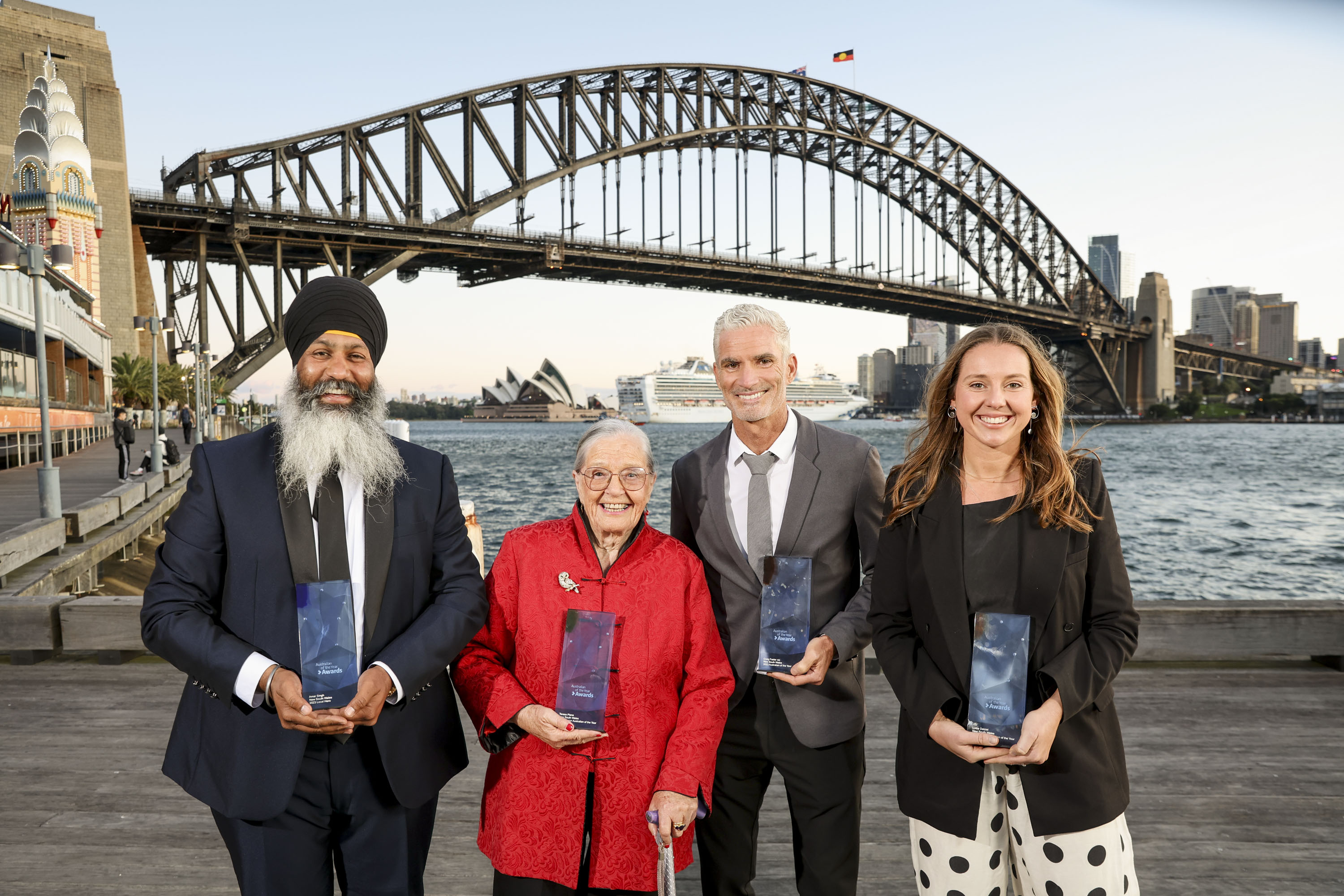
Yard Birds: Spring 2022
photos by A J Guesdon
Sulphur-crested cockatoo; There was about 20 of them - all yelling their heads off - this one came right up to me and kept carrying on like this - so I took some photos of him.
The sulphur-crested cockatoo, Cacatua galerita, is a white cockatoo found in wooded habitats in Australia, New Guinea, and some of the islands of Indonesia. They can be locally very numerous, leading to them sometimes being considered pests. A highly intelligent bird, in Sydney they have learned how to open garbage bins as a source of food. The behavior spreads among the birds by imitation.
These birds are very long-lived, and can live upwards of 70 years in captivity, although they only live to about 20–40 years in the wild. They have been known to engage in geophagy, the process of eating clay to detoxify their food. These birds produce a very fine powder to waterproof themselves instead of oil as many other birds do.
The sulphur-crested cockatoo is a seasonal breeder in Australia; In southern Australia the breeding season is from August to January, whereas in northern Australia the season is from May to September. The nest is a bed of wood chips in a hollow in a tree. Like many other parrots it competes with others of its species and with other species for nesting sites. Two to three eggs are laid and incubation lasts between 25–27 days. Both parents incubate the eggs and raise the nestlings. The nestling period is between 9 and 12 weeks, and the young fledglings remain with their parents for a number of months after fledging.
Sulphur-crested cockatoos maintain close familial ties. According to recent genetic work, some flocks contain three generations of cockatoos, from grandparents to grandchildren.
Cockatoos pair up in their first year and are monogamous until death, unless injury or disease separates them, or they "divorce", according to avian expert Ross Perry.
People have also witnessed what they call 'cockatoo funerals' when a whole flock will descend on an area and around one who has lost a mate.
Bush Turkey - our place is a thoroughfare for these, have seen several generations come through here now. They used to gather down along Careel Creek.
The Australian brushturkey or Australian brush-turkey or gweela Alectura lathami, also frequently called the scrub turkey or bush turkey, used to be a common, widespread species of mound-building bird from the family Megapodiidae found in eastern Australia from Far North Queensland to Eurobodalla on the South Coast of New South Wales.
Australasian Figbird, Sphecotheres vieilloti
As its name implies, the Australasian Figbird predominantly eats figs, although a wide variety of other fruits are eaten as well. Figbirds usually forage high in the canopy, sometimes in the company of Olive-backed Orioles. Large flocks may congregate noisily at prolifically fruiting trees, and remain until the supply of fruit is exhausted. The seeds of the figs often pass undigested through the gut of figbirds, so they are able to germinate, though in some cases they provide pigeons with a convenient source of food.
Figbirds are part of a worldwide family that includes the orioles, of which Australia has two other members (the Yellow and Olive-backed Orioles). Males have bare, red skin around the eye, contrasting against a black crown and grey neck and throat. The remainder of the body is olive-green, except for a white under-tail area. Females have grey skin around the eye and lack distinctive head markings. They are brown-green above and dull-white below, streaked with brown. Both sexes have a blackish bill.
The Figbird occurs across coastal regions of northern and eastern Australia from the Kimberley region in Western Australia around to the New South Wales/Victoria border.
The Figbird lives in rainforests and wet sclerophyll forests, but is often found in urban parks and gardens, particularly those with figs and other fruit-producing trees. Information: BirdLife Australia
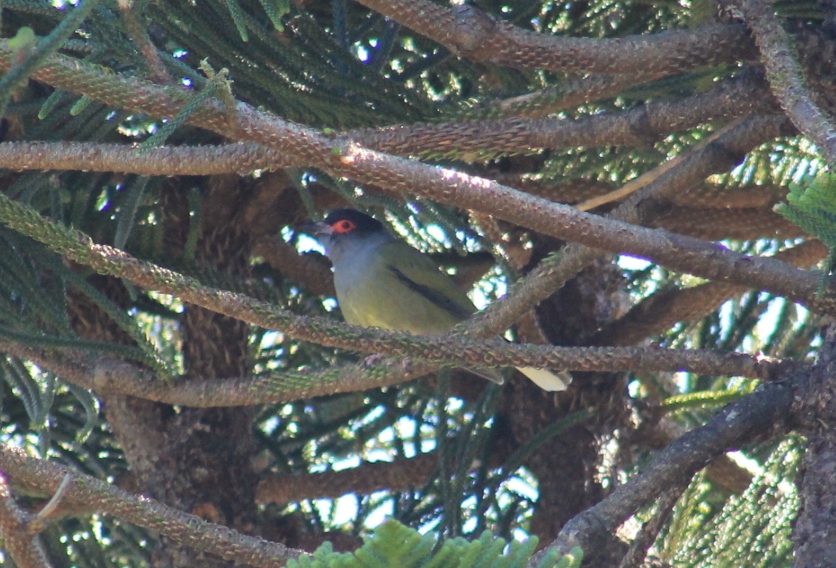
Comedy Wildlife Photography Awards 2022 - Have Your Vote!
It's that time of year again - thank goodness! We have just released the amazing 2022 Finalists to the media and hopefully you have managed to catch them and they made you smile A LOT. It's been a brilliant competition so far with some cracking entries, and it's going to be really, really hard to pick the winners. Yep, this is where we need your help!
Once again, the incredible team at Affinity Photo are sponsoring the People's Choice Award. You can enter via the website www.comedywildlifephoto.com, have fun voting for your favourite finalist, (which in itself is a great way to spend a few minutes with a brew and a biscuit) and you might win the prize draw and a tip top £500 in cash!! Just think what you could do with that?!
What are you waiting for? Terms and conditions apply. Voting closes on November 27th
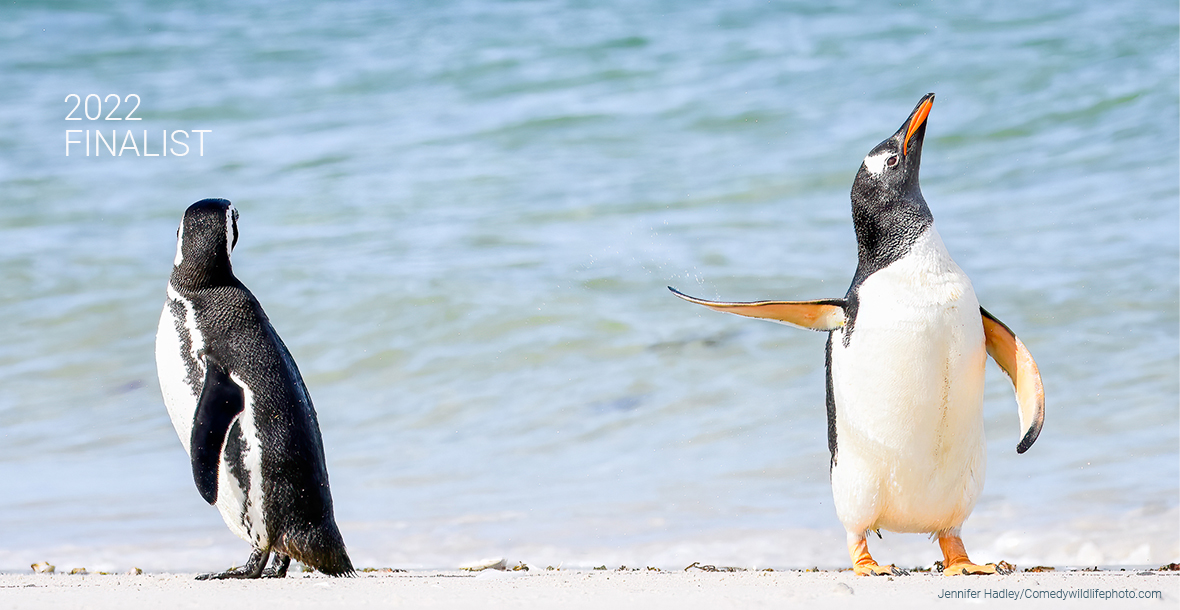

School Leavers Support
- Download or explore the SLIK here to help guide Your Career.
- School Leavers Information Kit (PDF 5.2MB).
- School Leavers Information Kit (DOCX 0.9MB).
- The SLIK has also been translated into additional languages.
- Download our information booklets if you are rural, regional and remote, Aboriginal or Torres Strait Islander, or living with disability.
- Support for Regional, Rural and Remote School Leavers (PDF 2MB).
- Support for Regional, Rural and Remote School Leavers (DOCX 0.9MB).
- Support for Aboriginal and/or Torres Strait Islander School Leavers (PDF 2MB).
- Support for Aboriginal and/or Torres Strait Islander School Leavers (DOCX 1.1MB).
- Support for School Leavers with Disability (PDF 2MB).
- Support for School Leavers with Disability (DOCX 0.9MB).
- Download the Parents and Guardian’s Guide for School Leavers, which summarises the resources and information available to help you explore all the education, training, and work options available to your young person.
School Leavers Information Service
- navigate the School Leavers Information Kit (SLIK),
- access and use the Your Career website and tools; and
- find relevant support services if needed.
Pens Down For HSC: Congratulations Class Of 2022!
Friday November 4th was the last day of the HSC, marking the end of schooling for more than 67,000 students. The 2022 Higher School Certificate (HSC) exams were officially over at 3:30pm Friday, when 3,629 Design and Technology students finish their final exam.
Minister for Education and Early Learning Sarah Mitchell said this marks the end of a 13-year schooling career for 67,327 HSC students.
“The Class of 2022 have worked tremendously hard to get to this point and I congratulate them for crossing this finish line,” Ms Mitchell said.
“I was so pleased to see exams return to normal this year, despite some disruptions due to floods. Thank you to the principals, schools, exam staff and families for their unwavering support in making the exams such a success.
“Every HSC student should be proud of what they have achieved over their senior years of school. The resilience, focus and adaptability they have shown will serve them well in the next chapter of their life, whether that is university, vocational training or employment.”
Over the past four weeks, more than 75,000 students were involved in almost 400,000 unique exam sessions at 780 exam venues across the state.
Chief Executive Officer of the NSW Education Standards Authority Paul Martin said delivering a state-wide exam program is no small feat, and this year was a success thanks to exam staff and the school community.
“I especially want to thank the school sectors, principals, school staff and exam supervisors for supporting all our HSC students,” Mr Martin said.
“After two years of COVID, one of our main concerns this year was the safety of students and exam staff, particularly as parts of the state responded to flooding. We wanted students to know that if it was not safe to attend their exam, they should stay home and speak with their school.
“I am incredibly grateful to the schools who supported their students, particularly in the Northern Rivers region but also across NSW in more recent weeks, throughout this challenging time.
“These are resilient communities who have supported their students right to the end of exams. I am sure they will be watching with pride as their students move on to the next chapter of their lives.”
HSC marking is already underway, with results to be delivered via SMS and email on Thursday 15 December 2022.
In the meantime, get out and leap about! :)
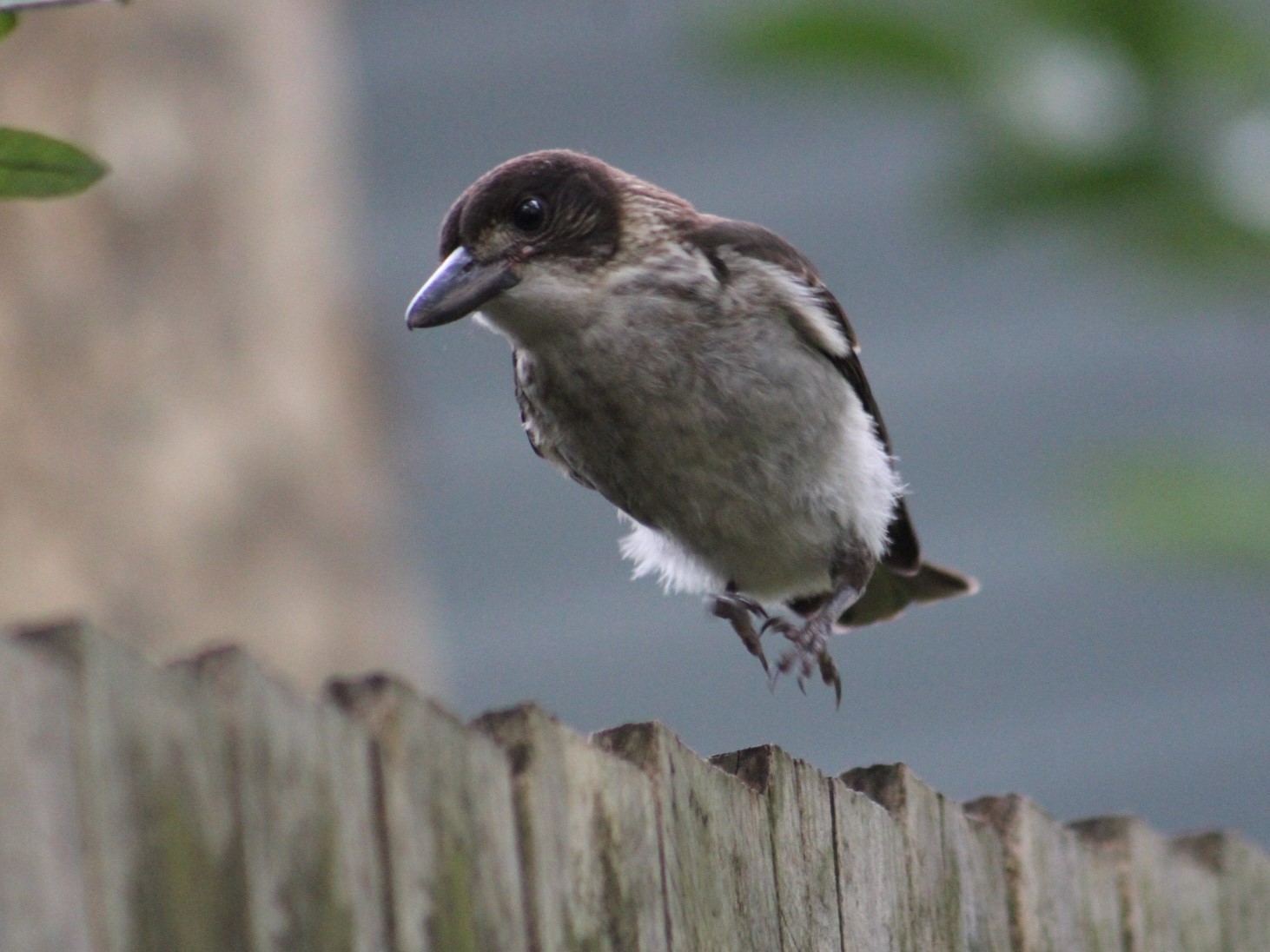
2023 Year 12 School Scholarship Program Now Open: DYRSL

Securing A Brighter Future For Disadvantaged Youth
Be The Boss: I Want To Be A Baker
- Bake basic bread products
- Bake sweet goods, including sponge cakes and biscuits
- Use food preparation equipment to prepare fillings
- Maintain a commercial kitchen
- Follow hygiene and safety regulations
- Calculate the amount of ingredients needed in recipes
- The confidence to begin your baking apprenticeship
- Strong foundational skills to kickstart your career
- Be comfortable handling commercial machinery
- Credit toward a full qualification
- A pathway to further study in baking
- Good communication skills
- Numeracy skills at the level of Year 9 at high school
- A passion for baking and being creative with food
- The ability to be an early riser
- An entrepreneurial spirit
- An aptitude for working with their hands
- Good time management
- Be able to provide your own uniform and equipment
- Have access to a computer and the internet
Courses are made up of a combination of both core and specialty units. In the Certificate II in Baking qualification, you’ll need to successfully complete 11 Units of competency, including 7 core and 4 speciality units.
Summer Skills Fee Free Courses
Summer Skills is a fee-free* short course program to support school leavers, aged between 15 – 24 years, obtain job-ready skills over the summer months.
Whether you plan to attend TAFE NSW, university, have a gap year or are still undecided, we have a course that can give you the skills for a brighter future.
Priority industry areas have been identified under Skilling for Recovery and include short courses in Early Childhood Care, Aged Care, Disability, Hospitality, Construction, Agriculture, Business and Administration, IT and Digital, Retail, Transport and Logistics, Manufacturing/Engineering and Sport and Recreation.
For example - starting November 23, 2022 at Ryde: STATEMENT OF ATTAINMENT IN COMMERCIAL COOKERY BASICS
Or starting November 24th at Ryde: STATEMENT OF ATTAINMENT IN ESPRESSO COFFEE
Find out more at: https://www.tafensw.edu.au/summer-skills
_-_IMG_7331.jpg?timestamp=1667587576272)
Also Available:
- Be The Boss: I Want To Be An Information Technology Administrator
- Be The Boss: I Want To Be An Architect
- Be The Boss: I Want to Be a Marine Electrician
- Be The Boss: I want To Be A Cabinet Maker
- Be The Boss: I Want To Be An Automotive Mechanic
- Be The Boss: I Want To Be A Biotechnologist
- Be The Boss: I Want To Be A Pilot
- Be The Boss: I Want To Be A Music Producer
- Be The Boss: I Want To Be A Gardener
- Be The Boss: I Want To Be A Builder
- Be The Boss: I Want To Be A Confectioner
- Be The Boss: I Want To Be A Ship's Captain
Word Of The Week: Dance
verb
1. move rhythmically to music, typically following a set sequence of steps. 2. (of a person) move in a quick and lively way.
noun
1. a series of steps and movements that match the speed and rhythm of a piece of music.
From:
c. 1300, dauncen, "move the body or feet rhythmically to music," from Old French dancier (12c., Modern French danser), which is of unknown origin, perhaps from Low Frankish *dintjan and akin to Old Frisian dintje "tremble, quiver." Through French influence in arts and society, it has become the primary word for this activity from Spain to Russia (Italian danzare, Spanish danzar, Romanian dansa, Swedish dansa, German tanzen, modern Russian tancevat').
In English it replaced Old English sealtian, itself a borrowing from Latin saltare "to dance," frequentative of salire "to leap" (see salient (adj.); "dance" words frequently are derived from words meaning "jump, leap"). Native words used for the activity in Old English included tumbian (see tumble (v.)), hoppian(see hop (v.1)). Related: Danced; dancing.
Meaning "to leap or spring with regular or irregular steps as an expression of some emotion" is from late 14c. Of inanimate things, "move nimbly or quickly with irregular motion," 1560s. Transitive sense of "give a dancing motion to" is from c. 1500. To dance attendance "strive to please and gain favor by obsequiousness" is from late 15c.
c. 1300, dance, daunce, "succession of steps and movements, commonly guided by musical accompaniment," also "a dancing party," from dance (v.). From late 14c. as "a tune to be danced to."
With many figurative senses: in Middle English the olde daunce was "the whole business," and the daunce is don was exactly equivalent to modern slang phrase the jig is up. To lead (someone) a dance "lead in a wearying, perplexing, or disappointing course" is from 1520s. Dance-band is from 1908; dance-floor from 1863; dance-hall from 1823.
P!NK - Never Gonna Not Dance Again
NB: Language warning on one word
INXS - New Sensation
House Of Pain - Jump Around
New Radicals - You Get What You Give
The Cult - She Sells Sanctuary
Arrested Development – People Everyday
What is shadowbanning? How do I know if it has happened to me, and what can I do about it?

Tech platforms use recommender algorithms to control society’s key resource: attention. With these algorithms they can quietly demote or hide certain content instead of just blocking or deleting it. This opaque practice is called “shadowbanning”.
While platforms will often deny they engage in shadowbanning, there’s plenty of evidence it’s well and truly present. And it’s a problematic form of content moderation that desperately needs oversight.
What Is Shadowbanning?
Simply put, shadowbanning is when a platform reduces the visibility of content without alerting the user. The content may still be potentially accessed, but with conditions on how it circulates.
It may no longer appear as a recommendation, in a search result, in a news feed, or in other users’ content queues. One example would be burying a comment underneath many others.
The term “shadowbanning” first appeared in 2001, when it referred to making posts invisible to everyone except the poster in an online forum. Today’s version of it (where content is demoted through algorithms) is much more nuanced.
Shadowbans are distinct from other moderation approaches in a number of ways. They are:
- usually algorithmically enforced
- informal, in that they are not explicitly communicated
- ambiguous, since they don’t decisively punish users who violate platform policies.
Which Platforms Shadowban Content?
Platforms such as Instagram, Facebook and Twitter generally deny performing shadowbans, but typically do so by referring to the original 2001 understanding of it.
When shadowbanning has been reported, platforms have explained this away by citing technical glitches, users’ failure to create engaging content, or as a matter of chance through black-box algorithms.
That said, most platforms will admit to visibility reduction or “demotion” of content. And that’s still shadowbanning as the term is now used.
In 2018, Facebook and Instagram became the first major platforms to admit they algorithmically reduced user engagement with “borderline” content – which in Meta CEO Mark Zuckerberg’s words included “sensationalist and provocative content”.
YouTube, Twitter, LinkedIn and TikTok have since announced similar strategies to deal with sensitive content.
In one survey of 1,006 social media users, 9.2% reported they had been shadowbanned. Of these 8.1% were on Facebook, 4.1% on Twitter, 3.8% on Instagram, 3.2% on TikTok, 1.3% on Discord, 1% on Tumblr and less than 1% on YouTube, Twitch, Reddit, NextDoor, Pinterest, Snapchat and LinkedIn.
Further evidence for shadowbanning comes from surveys, interviews, internal whistle-blowers, information leaks, investigative journalism and empirical analyses by researchers.
Why Do Platforms Shadowban?
Experts think shadowbanning by platforms likely increased in response to criticism of big tech’s inadequate handling of misinformation. Over time moderation has become an increasingly politicised issue, and shadowbanning offers an easy way out.
The goal is to mitigate content that’s “lawful but awful”. This content trades under different names across platforms, whether it’s dubbed “borderline”, “sensitive”, “harmful”, “undesirable” or “objectionable”.
Through shadowbanning, platforms can dodge accountability and avoid outcries over “censorship”. At the same time, they still benefit financially from shadowbanned content that’s perpetually sought out.
Who Gets Shadowbanned?
Recent studies have found between 3% and 6.2% of sampled Twitter accounts had been shadowbanned at least once.
The research identified specific characteristics that increased the likelihood of posts or accounts being shadowbanned:
- new accounts (less than two weeks old) with fewer followers (below 200)
- uncivil language being used, such as negative or offensive terms
- pictures being posted without text
- accounts displaying bot-like behavior.
On Twitter, having a verified account (a blue checkmark) reduced the chances of being shadowbanned.
Of particular concern is evidence that shadowbanning disproportionately targets people in marginalised groups. In 2020 TikTok had to apologise for marginalising the black community through its “Black Lives Matter” filter. In 2021, TikTok users reported that using the word “Black” in their bio page would lead to their content being flagged as “inappropriate”. And in February 2022, keywords related to the LGBTQ+ movement were found to be shadowbanned.
Overall, Black, LQBTQ+ and Republican users report more frequent and harsher content moderation across Facebook, Twitter, Instagram and TikTok.
How Can You Know If You’ve Been Shadowbanned?
Detecting shadowbanning is difficult. However, there are some ways you can try to figure out if it has happened to you:
rank the performance of the content in question against your “normal” engagement levels – if a certain post has greatly under-performed for no obvious reason, it may have been shadowbanned
ask others to use their accounts to search for your content – but keep in mind if they’re a “friend” or “follower” they may still be able to see your shadowbanned content, whereas other users may not
benchmark your content’s reach against content from others who have comparable engagement – for instance, a black content creator can compare their TikTok views to those of a white creator with a similar following
refer to shadowban detection tools available for different platforms such as Reddit (r/CommentRemovalChecker) or Twitter (hisubway).
What Can Users Do About Shadowbanning?
Shadowbans last for varying amounts of time depending on the demoted content and platform. On TikTok, they’re said to last about two weeks. If your account or content is shadowbanned, there aren’t many options to immediately reverse this.
But some strategies can help reduce the chance of it happening, as researchers have found. One is to self-censor. For instance, users may avoid ethnic identification labels such as “AsianWomen”.
Users can also experiment with external tools that estimate the likelihood of content being flagged, and then manipulate the content so it’s less likely to be picked up by algorithms. If certain terms are likely to be flagged, they’ll use phonetically similar alternatives, like “S-E-G-G-S” instead of “sex”.
Shadowbanning impairs the free exchange of ideas and excludes minorities. It can be exploited by trolls falsely flagging content. It can cause financial harm to users trying to monetise content. It can even trigger emotional distress through isolation.
As a first step, we need to demand transparency from platforms on their shadowbanning policies and enforcement. This practice has potentially severe ramifications for individuals and society. To fix it, we’ll need to scrutinise it with the thoroughness it deserves.
Marten Risius, Senior Lecturer in Business Information Systems, The University of Queensland and Kevin Marc Blasiak, PhD Candidate in Information Systems, The University of Queensland
This article is republished from The Conversation under a Creative Commons license. Read the original article.
Are bananas really ‘radioactive’? An expert clears up common misunderstandings about radiation

The simple mention of the word “radiation” often evokes fear in people. For others, it’s fun to think a little exposure to radiation could turn you into the next superhero, just like the Hulk.
But is it true basically everything around us is radioactive, even the food we eat? You may have heard bananas are mildly radioactive, but what does that actually mean? And despite us not being superheroes, are human bodies also radioactive?
What Is Radiation?
Radiation is energy that travels from one point to another, either as waves or particles. We are exposed to radiation from various natural and artificial sources every day.
Cosmic radiation from the Sun and outer space, radiation from rocks and soil, as well as radioactivity in the air we breathe and in our food and water, are all sources of natural radiation.
Bananas are a common example of a natural radiation source. They contain high levels of potassium, and a small amount of this is radioactive. But there’s no need to give up your banana smoothie – the amount of radiation is extremely small, and far less than the natural “background radiation” we are exposed to every day.
Artificial sources of radiation include medical treatments and X-rays, mobile phones and power lines. There is a common misconception that artificial sources of radiation are more dangerous than naturally occurring radiation. However, this just isn’t true.
There are no physical properties that make artificial radiation different or more damaging than natural radiation. The harmful effects are related to dose, and not where the exposure comes from.
What Is The Difference Between Radiation And Radioactivity?
The words “radiation” and “radioactivity” are often used interchangeably. Although the two are related, they are not quite the same thing.
Radioactivity refers to an unstable atom undergoing radioactive decay. Energy is released in the form of radiation as the atom tries to reach stability, or become non-radioactive.
The radioactivity of a material describes the rate at which it decays, and the process(es) by which it decays. So radioactivity can be thought of as the process by which elements and materials try to become stable, and radiation as the energy released as a result of this process.
Ionising And Non-Ionising Radiation
Depending on the level of energy, radiation can be classified into two types.
Ionising radiation has enough energy to remove an electron from an atom, which can change the chemical composition of a material. Examples of ionising radiation include X-rays and radon (a radioactive gas found in rocks and soil).
Non-ionising radiation has less energy but can still excite molecules and atoms, which causes them to vibrate faster. Common sources of non-ionising radiation include mobile phones, power lines, and ultraviolet rays (UV) from the Sun.
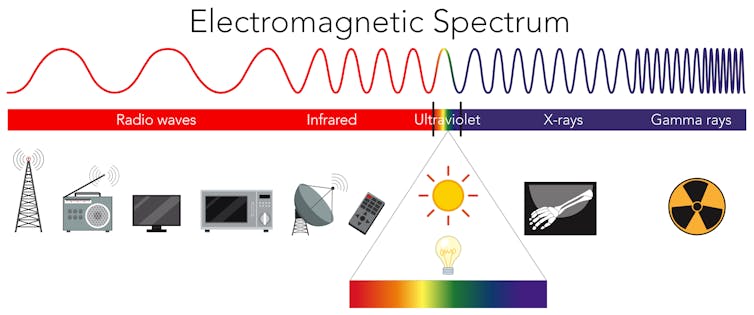
Is All Radiation Dangerous? Not Really
Radiation is not always dangerous – it depends on the type, the strength, and how long you are exposed to it.
As a general rule, the higher the energy level of the radiation, the more likely it is to cause harm. For example, we know that overexposure to ionising radiation – say, from naturally occurring radon gas – can damage human tissues and DNA.
We also know that non-ionising radiation, such as the UV rays from the Sun, can be harmful if the person is exposed to sufficiently high intensity levels, causing adverse health effects such as burns, cancer, or blindness.
Importantly, because these dangers are well known and understood, they can be protected against. International and national expert bodies provide guidelines to ensure the safety and radiation protection of people and the environment.
For ionising radiation, this means keeping doses above the natural background radiation as low as reasonably achievable – for example, only using medical imaging on the part of the body required, keeping the dose low, and retaining copies of images to avoid repeat exams.
For non-ionising radiation, it means keeping exposure below safety limits. For example, telecommunications equipment uses radiofrequency non-ionising radiation and must operate within these safety limits.
Additionally, in the case of UV radiation from the Sun, we know to protect against exposure using sunscreen and clothing when levels reach 3 and above on the UV index.
Radiation In Medicine
While there are clear risks involved when it comes to radiation exposure, it’s also important to recognise the benefits. One common example of this is the use of radiation in modern medicine.
Medical imaging uses ionising radiation techniques, such as X-rays and CT scans, as well as non-ionising radiation techniques, such as ultrasound and magnetic resonance imaging (MRI).
These types of medical imaging techniques allow doctors to see what’s happening inside the body and often lead to earlier and less invasive diagnoses. Medical imaging can also help to rule out serious illness.
Radiation can also help treat certain conditions – it can kill cancerous tissue, shrink a tumour or even be used to reduce pain.
So are our bodies also radioactive? The answer is yes, like everything around us, we are also a little bit radioactive. But this is not something we need to be worried about.
Our bodies were built to handle small amounts of radiation – that’s why there is no danger from the amounts we are exposed to in our normal daily lives. Just don’t expect this radiation to turn you into a superhero any time soon, because that definitely is science fiction.![]()
Sarah Loughran, Director Radiation Research and Advice (ARPANSA), and Adjunct Associate Professor (UOW), University of Wollongong
This article is republished from The Conversation under a Creative Commons license. Read the original article.
More than a story of treasures: revisiting Tutankhamun’s tomb 100 years after its discovery

On November 4 1922, a young Egyptian “water boy” on an archaeological dig is said to have accidentally stumbled on a stone that turned out to be the top of a flight of steps cut into the limestone bedrock.
The stairs led to one of the most spectacular archaeological discoveries in history and the only almost intact funerary assemblage of a pharaoh – the Tutankhamun’s tomb.
A century after this discovery, it’s worth revisiting the story of Tutankhamun’s tomb and how it eventually became a symbol for Egyptian nationalism.
The ‘Child King’
Tutankhamun is often referred to as a “child king” and the “most famous and least important” of the pharaohs; he was almost unknown to history before the tomb’s discovery.
The son of one of the most controversial pharaohs in history – the champion of monotheism, Akhenaten – Tutankhamun ascended the throne around age six or so. After a rather uneventful reign of restoring temples and bringing Egypt out from a period of political and religious turmoil, he died sometime between the age of 17 and 19.
The discovery of his tomb full of magnificent and unique objects is more than a story of treasures. This is also a tale of the “roaring 20s” in the Middle Eastern version: a story of a quintessential embrace of class, privilege and colonialism juxtaposed against struggle for political freedom and building of new national identity.
Archaeology 100 years ago was very different.
None of the three male protagonists behind the discovery – Howard Carter (the lead British excavator), Lord Carnarvon (the man behind the money), and Ahmed Gerigar (the Egyptian foreman) – were formally trained as archaeologists.
Despite this, Carter is now almost always referred to as an archaeologist, but Gerigar almost never is – further entrenching colonial narratives.
But Carter’s three-decade-long excavation experience, draughtsman’s talent and his meticulousness, allied with the photographic aptitude of Harry Burton of Metropolitan Museum and the skills of the Egyptian excavators assured Tutenkhamun’s tomb – the only discovery of its type and arguably one of the most important archaeological finds ever – was recorded in a systematic and “modern” way.
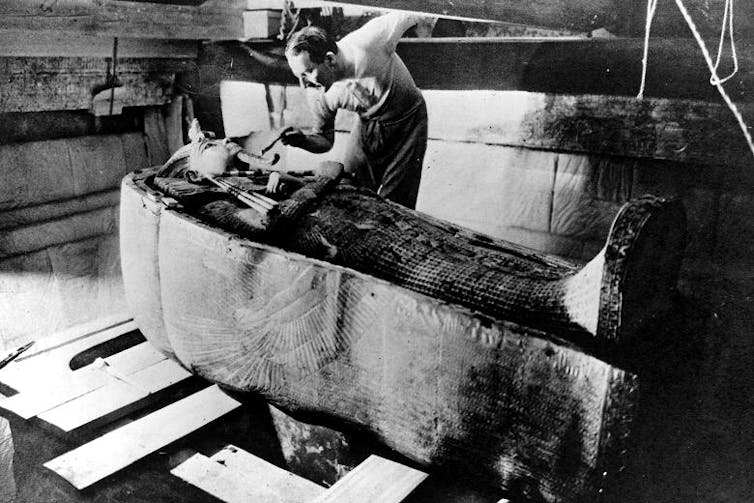
The Painter Who Became An Archaeologist
Howard Carter was a young painter who fell in love with Egyptian antiquities while following his father, also a painter, into the houses of London’s elite to add drawings of pets to his father’s portraits.
In 1891, age 17, Carter was recommended as an illustrator to archaeologist Percy Newberry, and joined him at a dig in Egypt at Beni Hassan tombs. From this first trip to his death in 1939, Carter spent his life mostly in Egypt with short trips back to London to deal in antiquities, including those allegedly stolen from Tutankhamun’s tomb.
After Beni Hassan, Carter became an illustrator for one of the fathers of Egyptology, William Flinders Petrie in Tell el-Amarna, the capital of Tut’s father Akhenaten.
Carter then worked in Deir el-Bahari, the funerary temple of queen pharaoh Hatshepsut, located right on the other side of the limestone ravine known as the Valley of the Kings.
It is here, on the western bank of the Nile I also trace some of my humble early experiences in Egyptology.
Walking at dawn from our base at the Metropolitan Museum house in Deir, which Carter frequented, to the temple, I followed in his footsteps and mused on how lucky he was when the “water boy” stumbled upon a staircase to the tomb.
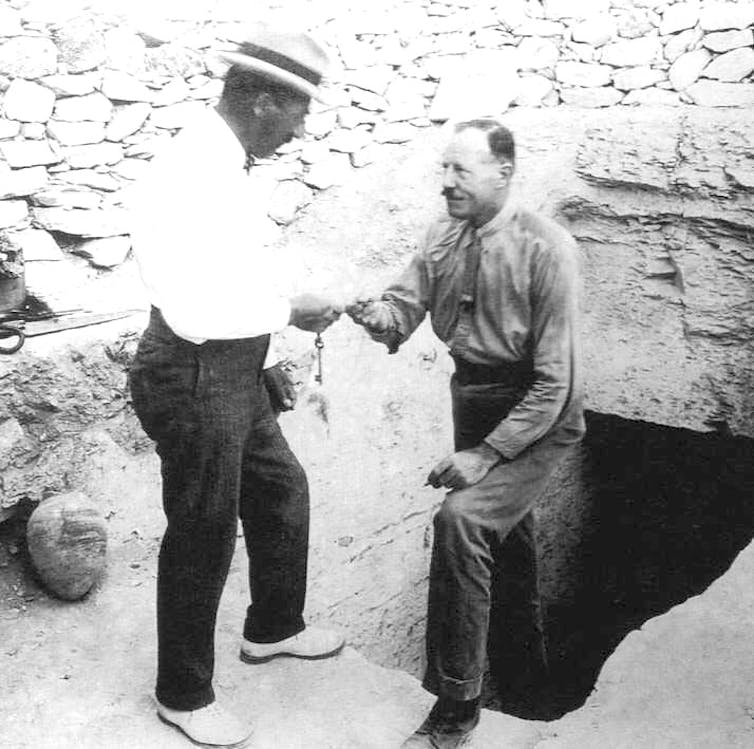
That year, 1922, was supposed to be the last season after seven fruitless years of digging in the Valley in search of Tutankhamun’s elusive resting place.
After clearing the staircase, Carter found the doorway sealed with cartouches – the hieroglyphs which enclose a royal name. He ordered the staircase to be refilled, and sent a telegram to Carnarvon, who arrived from England two-and-a-half weeks later.
On November 26 Carter made a “tiny breach in the top left-hand corner” of the doorway.
Carnarvon asked, “Can you see anything?” and Carter replied with his famous line: “Yes, wonderful things!”

Across 3,000 years, about 300 pharaohs ruled ancient Egypt. All royal tombs had been broken into by thieves.
The spectacular find of Tut’s tomb was also not a fully intact discovery. The tomb had been looted twice in antiquity, and Carter estimated that a considerable amount of jewellery was stolen. But it is the only surviving almost complete funerary assemblage.
Consisting of over 5,000 objects, only 30% have been studied so far.
A Story Of Its Time
Following Egyptian independence on February 28 1922 and the establishment of an independent Kingdom of Egypt, the discovery of Tutankhamun’s tomb became an optimistic symbol for Egyptian nationalists.
After the initial documentation, the official opening of the tomb in early 1924 coincided with the inauguration of Egypt’s first elected parliament.
Despite the new independence, colonial attitudes continued. Lord Carnarvon sold the rights to the story of the discovery of Tut’s tomb to the London Times for a significant sum.

Given the delay of a couple of weeks with sending photos on the ship from Cairo to London, Egyptian newspapers and readers were only able to follow the unfolding discovery from reading delayed British press. This caused a lot of resentment among the newly independent Egyptians, especially the middle classes.
Nevertheless, the discovery was very significant for nation building and new national post-colonial identity.
Taha Hussein, a notable Egyptian philosopher of the time, coined a notion of “pharaonism”. This unified national identity was supposed to transcend religious and ethnic differences between Arab, Muslim, Coptic and Jewish Egyptians.
It remains a tool of propaganda to this day – notably with a parade of 22 mummies moving to a new national museum and a lavish re-opening of the Grand Egyptian Museum soon, where much of the treasures from Tutankhamun’s tomb can be found today.![]()
Anna M. Kotarba-Morley, Senior Lecturer in Archaeology, Flinders University
This article is republished from The Conversation under a Creative Commons license. Read the original article.
An Antarctic neutrino telescope has detected a signal from the heart of a nearby active galaxy
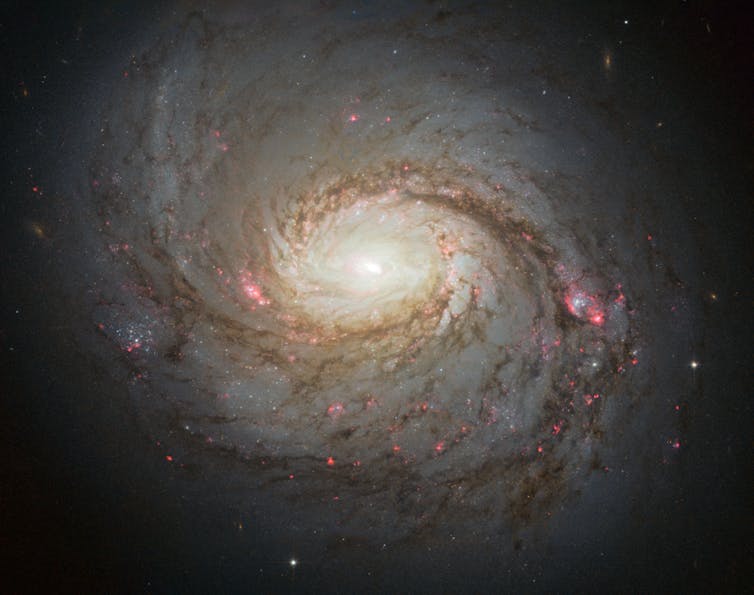
An enormous neutrino observatory buried deep in the Antarctic ice has discovered only the second extra-galactic source of the elusive particles ever found.
In results published today in Science, the IceCube collaboration reports the detection of neutrinos from an “active galaxy” called NGC 1068, which lies some 47 million light-years from Earth.
How To Spot A Neutrino
Neutrinos are very shy fundamental particles that don’t often interact with anything else. When they were first detected in the 1950s, physicists soon realised they would in some ways be ideal for astronomy.
Because neutrinos so rarely have anything to do with other particles, they can travel unimpeded across the Universe. However, their shyness also makes them difficult to detect. To catch enough to be useful, you need a very big detector.
That’s where IceCube comes in. Over the course of seven summers from 2005 to 2011, scientists at America’s Amundsen–Scott South Pole Station bored 86 holes in the ice with a hot-water drill. Each hole is almost 2.5 kilometres deep, about 60 centimetres wide, and contains 60 basketball-sized light detectors attached to a long stretch of cable.

How does this help us detect neutrinos? Occasionally, a neutrino will bump into a proton or neutron in the ice near a detector. The collision produces a much heavier particle called a muon, travelling so fast it emits a blue glow, which the light detectors can pick up.
By measuring when this light arrives at different detectors, the direction the muon (and neutrino) came from can be calculated. Looking at the particle energies, it turns out most of the neutrinos IceCube detects are created in Earth’s atmosphere.
However, a small fraction of the neutrinos do come from outer space. As of 2022, thousands of neutrinos from somewhere in the distant Universe have been identified.
Where Do Neutrinos Come From?
They appear to come fairly uniformly from all directions, without any obvious bright spots showing up. This means there must be a lot of sources of neutrinos out there.
But what are these sources? There are plenty of candidates, exotic-sounding objects like active galaxies, quasars, blazars and gamma-ray bursts.
In 2018, IceCube announced the discovery of the first identified high-energy neutrino emitter – a blazar, which is a particular kind of galaxy that happens to be firing a jet of high-energy particles in Earth’s direction.
Known as TXS 0506+056, the blazar was identified after IceCube saw a single high-energy neutrino and sent out an urgent astronomer’s telegram. Other telescopes scrambled to take a look at TXS 0506+056, and discovered it was also emitting a lot of gamma rays at the same time.
This makes sense, because we think blazars work by boosting protons to extreme speeds – and these high-energy protons then interact with other gas and radiation to produce both gamma rays and neutrinos.
An Active Galaxy
The blazar was the first extra-galactic source ever discovered. In this new study, IceCube identified the second.
The IceCube scientists re-examined the first decade of data they had collected, applying fancy new methods to pull out sharper measurements of neutrino directions and energy.
As a result, an already interesting bright spot in the background neutrino glow came into sharper focus. About 80 neutrinos had come from a fairly nearby, well-studied galaxy called NGC 1068 (also known as M77, as it is the 77th entry in the famous 18th-century catalogue of interesting astronomical objects created by the French astronomer Charles Messier).
Located about 47 million light-years from Earth, NGC 1068 is a known “active galaxy” – a galaxy with an extremely bright core. It is about 100 times closer than the blazar TXS 0506+056, and its angle relative to us means gamma rays from its core are obscured from our view by dust. However, neutrinos happily zoom straight through the dust and into space.
This new discovery will provide a wealth of information to astrophysicists and astronomers about what exactly is going on inside NGC 1068. There are already hundreds of papers attempting to explaining how the galaxy’s inner core works, and the new IceCube data add some information about neutrinos that will help to refine these models.![]()
Gary Hill, Associate Professor, Astrophysics and Dark Matter Researcher, University of Adelaide
This article is republished from The Conversation under a Creative Commons license. Read the original article.
A platypus can glow green and hunt prey with electricity – but it can’t climb dams to find a mate
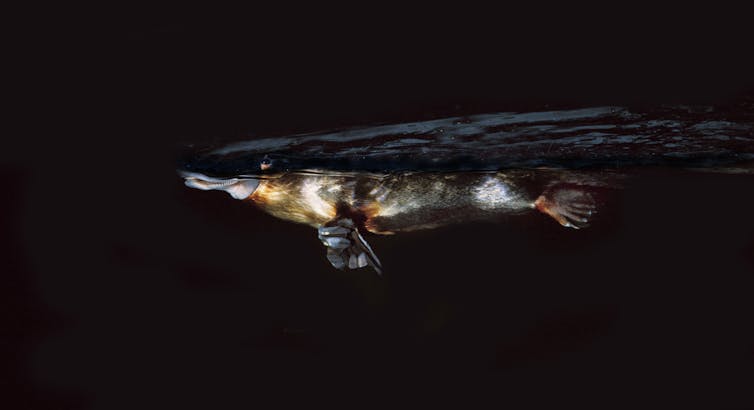
The platypus is one of Earth’s most unique creatures. It sports a duck-like bill and flippers. It locates prey in murky water by emitting an electric charge. Males have venomous spurs on their legs, and the females lay eggs. And a platypus’ fur glows blue-green under UV light!
Sadly, however, this fascinating and irreplaceable animal is at risk of extinction. Among the human-caused threats are habitat loss, climate change, pollution and becoming prey for invasive species such as foxes and dogs. To that list, we can now add another threat: dams.
New research by myself and colleagues, published today, found large river dams restrict platypus movements and separate communities.
This increases the risk of inbreeding and restricts the exchange of genes essential to maintaining healthy platypus populations.
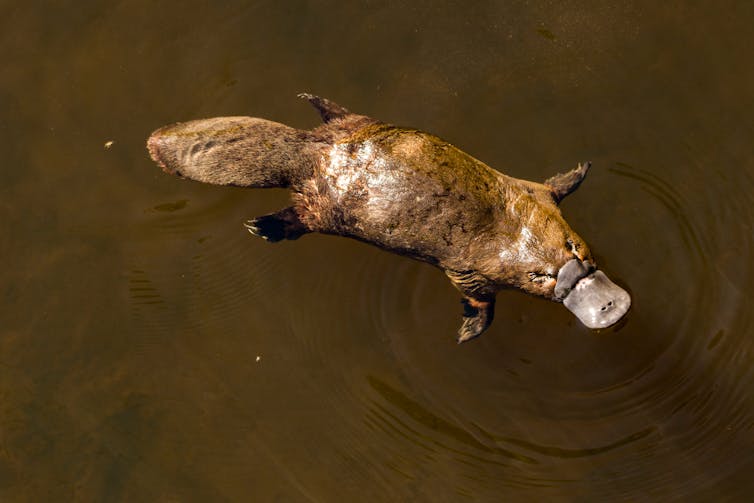
A Spotlight On Platypus Genetics
Dams pose a major threat to global freshwater biodiversity. In Australia, as many as 77% (383 out of 495) of major dams – those with walls higher than 10 metres – are in regions where platypuses are found.
Platypuses spend most of their time in the water. They can also move over land, however until now it was not certain if dams restrict platypus’ movement.
My colleagues and I set out to answer this question. We did this by examining the genetic makeup of platypuses in nine rivers in New South Wales and Victoria: five dammed and four free-flowing. They spanned the Upper Murray, Snowy Mountains, Central NSW and Border Rivers regions.
We captured platypuses across 81 sites. We weighed, measured, sexed and aged them, collected a blood sample then returned the animal to the water. DNA was later extracted from the blood.
So what did we find? Genetic differentiation between platypuses below and above dams was four to 20 times higher than along similar stretches of adjacent undammed rivers. This suggest hardly any platypuses have passed around the dams since they were built.
In fact, one platypus below the dam, and one platypus above the dam, were as genetically different as two platypuses living in different rivers.
Genetic differentiation is not necessarily good or bad. It just describes how genetically different two populations are. But the results mean we’re now far more confident that dams pose insurmountable barriers to platypuses.
Importantly, the genetic differentiation increased the longer the dam had been in place. This reflects the long-term impacts on platypus genetics.
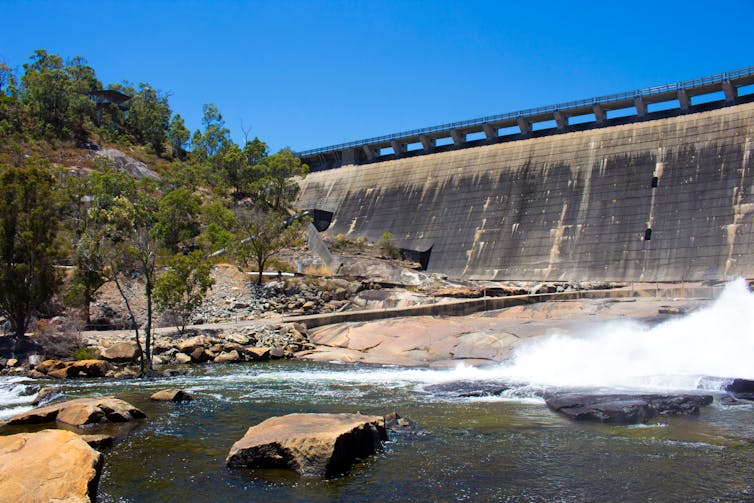
What Does All This Mean?
There a several downsides for a species when populations are unable to connect.
First, it restricts the ability for animals to move to new habitat if needed, and find individuals to reproduce with.
Second, it reduces population size and gene flow. This is likely to lead to increased inbreeding and a reduction in the genetic variation necessary for the species to adapt to threats.
Third, it can lead to “inbreeding depression” – the reduced survival and fertility of offspring of related individuals.
The platypus is currently listed as near threatened by the International Union for Conservation of Nature. It’s also listed as endangered in South Australia and vulnerable in Victoria.
Continued declines are predicted under climate change as a result of drought and hotter conditions, which could mean more than 30% of suitable platypus habitat is lost by 2070.
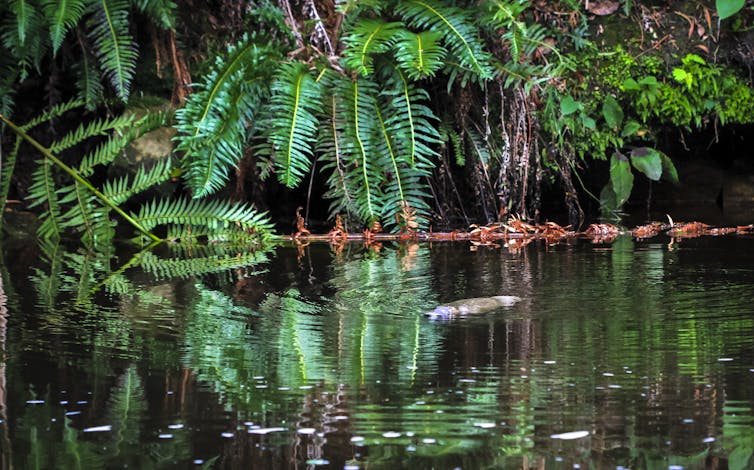
So how can we protect the platypus? There are many steps we could take, such as:
rehabilitating riverbanks by replanting trees and restricting livestock access
improving water quality and natural flow regimes in rivers
limiting dams, roads, weirs and other structures
building bypasses so platypuses can move across barriers
protecting platypuses from invasive predators when they move over land
reducing river pollution
establishing insurance populations to ensure genetic diversity
relocating individuals
more research to understand breeding requirements.
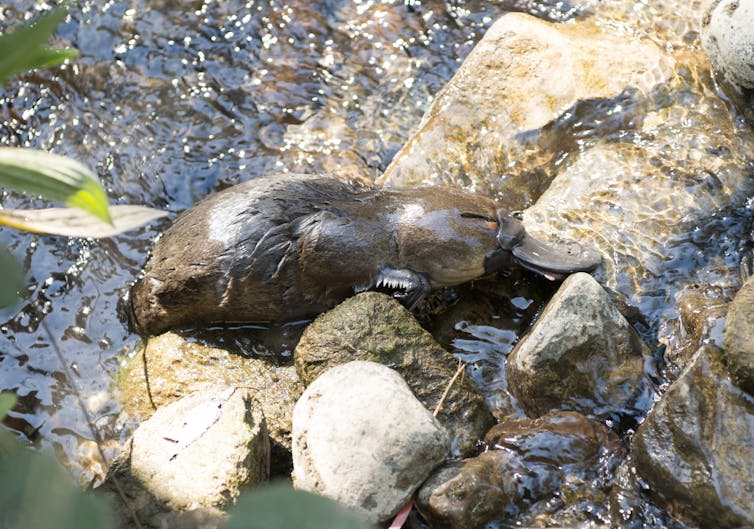
Platypus, Be Dammed
Our results reinforce growing evidence that major dams contribute to a decline in platypus populations.
The problem extends beyond that identified in our study. Below major dams, altered natural flow regimes in rivers have been found to significantly impact the abundance of platypuses. And research has found conditions below and above major dams are poor for platypuses to forage and live.
We hope our research will inform conservation decision-making, and will help ensure the long-term survival of this Australian icon.![]()
Luis Mijangos, Researcher, Centre for Conservation Ecology and Genomics, Institute for Applied Ecology, University of Canberra
This article is republished from The Conversation under a Creative Commons license. Read the original article.
Friday essay: ‘not for me’ – Amy Thunig on the stigma of having a dad in ‘lock-up’, and the embrace of Indigenous academia

The energy of academic conferences isn’t like your average conference. It is the bringing together of academics from universities all around the country, sometimes around the globe, all working within similar or related specialisations. This means one thing: niche gossip and lots of it. There’s a reason why so many academics love reality television – we have intensely intellectual, oftentimes dry jobs, meaning much of the juicy elements of our roles come from the interpersonal relationships.
At conferences you may sit across from someone who is later on your grant or hiring panel. Though there is, of course, no formal segregation anymore, exclusions and separations based on class, race, and privilege continue.
Presentations by Indigenous academics are often attended by almost entirely Indigenous audiences, and when the proceedings break for lunch we tend to find one another out on the grass somewhere, sitting in the shade, catching up on everyone’s business.
Indigenous academic gossip is different though; many of us are connected through bloodline or marriage, and informal gatherings within formal proceedings allow us to check in on each other’s relations, and keep atop of the cultural safety (or lack thereof) in different institutions and teams. These are the kind of yarns you wouldn’t put in emails.
Learning the rhythm, language and protocol of the academy was a difficult journey. I relied on Indigenous academics to be my guides, to steer me through engagements that instead of allowing me to succeed because of what I do know, would rather see me penalised based on what I didn’t.

Belonging And Unbelonging
My first academic conference is on Kaurna Country, Adelaide. Work flies me over and I am so excited, I almost bounce into the hotel on the first day. But by the end of that first day, I am deflated.
During the niceties of mingling and meeting I find myself standing within a gathering of mostly white academics and am asked:
“Is this your first time here in Adelaide?”
“No, I lived here for a while as a kid.”
“Oh, really? What was that for?”
“Dad had work here so we moved over as a family for maybe six months, a year.”
‘Where did you live?“
These academics must be from here.
"Yatala.”
I answer without thinking too much about it. I haven’t been here in 20 years but that name sounds about right. Yet with my answer, the energy of the small group shifts. I can tell in their faces and in my belly that I have erred, that I am erring, and I am not sure how.
An Indigenous man in the small group, who doesn’t know me but clearly does realise what I have done, chimes in: “Nah, you lived in the city, sis. I think you got the names a bit mixed up there.”
There’s a release of tension – everyone laughs awkwardly – and when the crowd disperses my colleague quietly tells me Yatala is the name of the prison. The maximum-security prison.
“One of your parents in lock-up?” he asks gently.
I feel the hot blush rise from my chest and spread across my face as I nod.
“Just say you lived in the city – don’t let the gubbas get you down.”
I call Mum when I am back in my room that night. She laughs at the story and reminds me we lived in Elizabeth. Then her tone changes and she asks me not to bring it up again; she wants to blank it.
“Did anyone comment on your clothes?” Mum asks, changing the subject. She volunteers in an op-shop and over the past year has been gathering professional business clothes for me whenever they come into the shop in good condition and in my size.
“Yeah! Actually a woman complimented me on my dress today, it’s the pretty floral one you got me, Mum.”
She is pleased and on that note we hang up. I slip out of my gifted $3 dress and go to bed but I don’t sleep. I am so cross at myself. I am not embarrassed that my dad was in lock-up; I am shamed that I said the wrong thing, that I wasn’t in control with my response. I am overwhelmed with the sense that I do not belong here, that the academy is not for me, and I am not for it.
This spiral sends me emotionally back to when I was a child, and I was forever confused and often accidentally saying the wrong thing. To when I didn’t know it was a prison we were visiting Dad in because everyone taught me he was simply at “work”.
I fly home at the end of that conference but I’m still caught in that mental loop, thinking back to the time we spent on Kaurna Country as kids, remembering when our only way there and back was driving.
Dad Can’t Leave
Dad is locked up for much of my very early childhood and during that time I really don’t have a whole understanding of prisons, or how different our family is from others. I understand and have witnessed the violence of police – but the end point of that process is lost on me – the idea that adults would be forcibly caged is not a concept I have been introduced to.
In fact, it is something my family try actively to shield me from. The lie of Dad being at “work” leaves me with a confused but naive understanding of what is happening when we visit Dad in prison. As a child I may not understand why these places scare me, though they do and I resent the fact that Dad can’t leave. But that is far better than carrying the full knowledge that my dad is caged. It also means that when I inevitably talk when I shouldn’t, people outside of our family won’t know Dad has been away in lock-up; they too will be led to think he is away for work.
All I know is that Dad’s “workplace” is in a place called Adelaide; while he is there, he isn’t allowed to come home. When we visit, it is a really, really, long drive. And when we arrive at the “worksite” we have to pass through lots of tall fences, doors, and various checkpoints. While we wait to be processed through the metal detectors, I notice that some of the people who work here have guns.
No one is friendly, and as eager as I am to see Dad, this place is a bit scary. We don’t get to take any possessions in with us and Mum has to hand over her bag before we can go in. When we finally get to be in the same room as Dad, I think he looks handsome in his all-green uniform. Everyone in that room, talking with their loved ones, is wearing prison greens. Green like my mum’s eyes.
My Safe Person
The car splutters to a stop, overheating, as we are driving overloaded, long distance to our new home interstate. South Australia, Kaurna Country. The car seems to be matching Mum’s erratic energy, which has also become lulled right before the car rolled to a stop. I’ve given up trying to work out what we are doing.
Before we left, Mum had thrown some of our belongings into the car and announced that we were moving to be closer to Dad. Maybe because I am so young, three years old, maybe four, and maybe because I never know when or how to keep quiet, everyone around me refers to Dad as being “away for work”.
It’s been a while since the police took him away, and we miss him terribly, and even more since my baby brother died. The distance between our home and where Dad is based is a 15-hour drive each way and Mum has had enough. We can’t afford flights and she can’t keep driving back and forth with us kids – it’s time to move there.

Saying goodbye to our grandparents was hard. I don’t want to be away from Pop. I belong in his home, in the mulberry tree picking fruit to eat and squish between my fingers. I belong with him, and lately he has been picking me up a few mornings a week and taking me to the pool. He has to do physio for his back. If I wait patiently on the side of the pool while he does his exercise, he then brings me into the water, teaching me how to kick and move my arms so I can keep my head above the water.
Pop, Mum’s dad, is my safe person: consistent, kind, calm. I am with him a lot, sometimes swimming, often fishing. He takes me away to his own mother-in-law’s, to Great-Grandma Lucy’s house on Yuin Country, where we fish every morning and he tells me all about our kin creatures who live in the river. The octopuses there are cheeky and steal our bait. I don’t want to be away from him, and I could tell by his face as Mum told him we were leaving that he was worried. He kept shooting glances at me and Lisa – I don’t want him to be worried.
Dad Is Here For Work
Now, on that long drive to Adelaide, when we eventually get the car back on the road again, Mum alternates between muttering to herself and singing along to Patsy Cline’s Crazy. I am bored, carsick, and already missing my pop. Moving house is horrible and I think maybe I hate it.
When we arrive at the new home, I can’t help but think it looks and smells funny. The carpets are all weird bright colours; my sister takes the room with the orange carpet, mine is purple. There are no curtains in the windows, and that first night, with the moonlight filtering through the branches of the old tree that scrapes against my window, I become convinced that if I move, something that is waiting will see me and gobble me up. I lay still in my new bed and by morning I have wet it, soaking through the sheets and my pyjamas. Mum is disappointed but not as much as I am disappointed in myself. I will be starting at a new preschool and I don’t want the other kids to think I am a baby – only babies wet their beds.
Over the coming weeks we build a bit of a routine in that new house. Some days Mum doesn’t wake up or get out of bed. With no family close by to come around and help, I soon discover that though I am not tall enough to reach the cupboards, if I open the cutlery drawer I can use it like a step to climb atop the kitchen benches. From there I can get to the Weetbix and bowls. The first few times I attempt to pour my own milk, I make a big mess and do a clumsy and loud job of cleaning up, but this doesn’t wake Mum and I eventually get the hang of it. If Mum is still asleep, I will have Weetbix for lunch too, and play while I wait for Lisa to walk home from big school.

On the days when Mum does wake up, I go to preschool. Always, before we get out of the car, Mum reminds me that we are in Adelaide because Dad is here for work.
“Work, Amy, do you understand?”
“Yes, Mum.”
I am suspicious and she can tell but I don’t want to do or say the wrong thing. Whenever families are spoken about at preschool, I make sure I mention Dad is at “work”. I like being at preschool. There is a small kitchen but it isn’t like the one at home where everything is too big and I have to do things alone. Here the benches are real low and there are grown-ups who help us learn to make and butter our own toast. It feels like a very empowering place to be.
Each day that we are there, all of the children are expected to have naps. Green camping beds are brought out from the storage closet and everyone lays on their own bed, quickly drifting off to sleep. I have never been made to have naps before and am not in the habit of sleeping during the day. So I remain awake and often chat to my neighbours.
The educators quickly work out that small acts of bribery are the most effective way to get me to comply with instructions and we soon come to an understanding. When the camp beds are brought out, so too is a little white paper bag with a couple of lollies inside. One of the teachers will quietly place the bag in my chunky little hand, and with a wink reminds me that if I am quiet for all of nap time, then I can secretly eat the lollies when everyone wakes up. Every day I lay quiet and still, lolly bag hidden within my fist, held under my pillow for nap time, and in the chaos of pack-away time I eat my treats with gusto.
Being in this new neighbourhood means we are able to visit Dad regularly but some of the people around our new home make me uncomfortable. Sometimes I get hurt and there isn’t an adult around to help me. I miss our townhouse, the toys we had to leave behind, and my grandparents, especially fishing with Pop.
We don’t last that long in Adelaide, not quite a year. Then Mum packs up the car and we drive back to our townhouse on Dharug Country. I am glad to be back with our community, to be back with Pop. Not until I am almost six years old does Dad come home for good and we all live together in the townhouse again.
As soon as Dad is home, I begin to beg my parents for a little sister. I believe in my heart of hearts that if I can have a little sister, she will be my best friend. Within the year they conceive Taylah, who comes earthside on Dharug Country.
My Dad As My Teacher
My dad is many things – a roofer, a labourer, a partner, a convicted bank robber – and to me he is a teacher and a translator in a world I sometimes struggle to understand. When we garden together he draws my attention to the flowers, and specifically the bees, instructing me to observe the way they hover over the blooms, collecting the pollen and going on to make honey.
As a child I will eat several of those purple flowers before he realises I have misunderstood his lesson on pollination.

Though the house is tiny, the linen cupboard is filled with books, the air is regularly filled with music and our mother is always reading, and sometimes dancing. We watch NRL as a family, always barracking for the Bunnies; we stay up late to watch documentaries on orcas, plants, lions and more, where we learn about the circle of life together. My parents don’t seem to believe in censoring what we watch and so I see it all: guts and gore, death and life.
I learn many lessons in that home, sometimes intentional, sometimes through the rapid shifting of environments that waver between storm and peace.
Out the back of this townhouse there is a pergola draped in a green screen to protect from the intense summer sun, and a barbecue made of red brick. A small vegetable patch where Dad grows plants you can and can’t find at a local nursery, and a clothesline where Dad pegs a pillow, which he holds as he teaches my sister and me how to punch, our thumbs correctly placed to avoid broken bones.
Never tolerate disrespect: it isn’t just about that person, it’s about everyone watching on, he often tells us.
Dad talks to us as my sister and I take turns hitting the pillow. Sometimes he stops to correct our stance, our technique, but mostly he praises and encourages us.
Life is a series of systems, Lou. You can move and survive anywhere if you understand respect, relationship and reciprocity.
These lessons are taught with words but also with role modelling.
When I tire of punching, Dad focuses on Lisa’s technique; she is older by five years and has better endurance. I sit on the grass and Mum helps me fill up my tiny doll pool, playing with my Barbies as my sister moves with agility, her effort audible. Ouss, ouss.
Violence Of Prison Systems
A couple of years later I watch a movie on the violence of prison systems – I am too young for it but I had been left home alone and it was on the television. In my naivety, I still don’t realise that prison is where Dad was when we say he was at work, so I simply store away the information from that movie.
Sometime after, I’m out on a drive with Dad; we talk about anything and everything when we are in the car alone together. I tell him all about the grown-up show about prisons I had watched, and comment that maybe people in this country who go to jail should just be killed like they are in America because jail seems like such a rotten place.
Dad is so shocked by what I have said that the car swerves across the road momentarily, and as he restores his face and the car to the right side of the road, that’s when it clicks: I realise all those times we were visiting Dad at “work” he was in fact in prison. I feel horrible for what I said, and begin to think about the violence I saw in that movie, and how that must have been what it was like for Dad.
As a teenager, after seeing Dad regularly leaving the toilet with an empty coffee cup, I begin to chide him about how disgusting I think it is when he reads and drinks his coffee on the toilet. Dad and I regularly engage in playful but intense arguments, and I am getting better at annihilating him in them.
“How is drinking coffee in there any different to when the toilet is next to your bed in a cell?” he retorts, confident in his argument.
“Dad, I would say the difference is: this isn’t prison. No one’s trying to punish you. Go drink your coffee in the sun.”
Touché.
This is an edited extract from Amy Thunig’s memoir, Tell Me Again (UQP).![]()
Amy Thunig, Lecturer, Macquarie School of Education, Macquarie University
This article is republished from The Conversation under a Creative Commons license. Read the original article.
A brief history of the mortgage, from its roots in ancient Rome to the English ‘dead pledge’ and its rebirth in America

The average interest rate for a new U.S. 30-year fixed-rate mortgage topped 7% in late October 2022 for the first time in more than two decades. It’s a sharp increase from one year earlier, when lenders were charging homebuyers only 3.09% for the same kind of loan.
Several factors, including inflation rates and the general economic outlook, influence mortgage rates. A primary driver of the ongoing upward spiral is the Federal Reserve’s series of interest rate hikes intended to tame inflation. Its decision to increase the benchmark rate by 0.75 percentage points on Nov. 2, 2022, to as much as 4% will propel the cost of mortgage borrowing even higher.
Even if you have had mortgage debt for years, you might be unfamiliar with the history of these loans – a subject I cover in my mortgage financing course for undergraduate business students at Mississippi State University.
The term dates back to medieval England. But the roots of these legal contracts, in which land is pledged for a debt and will become the property of the lender if the loan is not repaid, go back thousands of years.
Ancient Roots
Historians trace the origins of mortgage contracts to the reign of King Artaxerxes of Persia, who ruled modern-day Iran in the fifth century B.C. The Roman Empire formalized and documented the legal process of pledging collateral for a loan.
Often using the forum and temples as their base of operations, mensarii, which is derived from the word mensa or “bank” in Latin, would set up loans and charge borrowers interest. These government-appointed public bankers required the borrower to put up collateral, whether real estate or personal property, and their agreement regarding the use of the collateral would be handled in one of three ways.
First, the Fiducia, Latin for “trust” or “confidence,” required the transfer of both ownership and possession to lenders until the debt was repaid in full. Ironically, this arrangement involved no trust at all.
Second, the Pignus, Latin for “pawn,” allowed borrowers to retain ownership while sacrificing possession and use until they repaid their debts.
Finally, the Hypotheca, Latin for “pledge,” let borrowers retain both ownership and possession while repaying debts.
The Living-Versus-Dead Pledge
Emperor Claudius brought Roman law and customs to Britain in A.D. 43. Over the next four centuries of Roman rule and the subsequent 600 years known as the Dark Ages, the British adopted another Latin term for a pledge of security or collateral for loans: Vadium.
If given as collateral for a loan, real estate could be offered as “Vivum Vadium.” The literal translation of this term is “living pledge.” Land would be temporarily pledged to the lender who used it to generate income to pay off the debt. Once the lender had collected enough income to cover the debt and some interest, the land would revert back to the borrower.
With the alternative, the “Mortuum Vadium” or “dead pledge,” land was pledged to the lender until the borrower could fully repay the debt. It was, essentially, an interest-only loan with full principal payment from the borrower required at a future date. When the lender demanded repayment, the borrower had to pay off the loan or lose the land.
Lenders would keep proceeds from the land, be it income from farming, selling timber or renting the property for housing. In effect, the land was dead to the debtor during the term of the loan because it provided no benefit to the borrower.
Following William the Conqueror’s victory at the Battle of Hastings in 1066, the English language was heavily influenced by Norman French – William’s language.
That is how the Latin term “Mortuum Vadium” morphed into “Mort Gage,” Norman French for “dead” and “pledge.” “Mortgage,” a mashup of the two words, then entered the English vocabulary.
Establishing Rights Of Borrowers
Unlike today’s mortgages, which are usually due within 15 or 30 years, English loans in the 11th-16th centuries were unpredictable. Lenders could demand repayment at any time. If borrowers couldn’t comply, lenders could seek a court order, and the land would be forfeited by the borrower to the lender.
Unhappy borrowers could petition the king regarding their predicament. He could refer the case to the lord chancellor, who could rule as he saw fit.
Sir Francis Bacon, England’s lord chancellor from 1618 to 1621, established the Equitable Right of Redemption.
This new right allowed borrowers to pay off debts, even after default.
The official end of the period to redeem the property was called foreclosure, which is derived from an Old French word that means “to shut out.” Today, foreclosure is a legal process in which lenders to take possession of property used as collateral for a loan.
Early US Housing History
The English colonization of what’s now the United States didn’t immediately transplant mortgages across the pond.
But eventually, U.S. financial institutions were offering mortgages.
Before 1930, they were small – generally amounting to at most half of a home’s market value.
These loans were generally short-term, maturing in under 10 years, with payments due only twice a year. Borrowers either paid nothing toward the principal at all or made a few such payments before maturity.
Borrowers would have to refinance loans if they couldn’t pay them off.

Rescuing The Housing Market
Once America fell into the Great Depression, the banking system collapsed.
With most homeowners unable to pay off or refinance their mortgages, the housing market crumbled. The number of foreclosures grew to over 1,000 per day by 1933, and housing prices fell precipitously.
The federal government responded by establishing new agencies to stabilize the housing market.
They included the Federal Housing Administration. It provides mortgage insurance – borrowers pay a small fee to protect lenders in the case of default.
Another new agency, the Home Owners’ Loan Corp., established in 1933, bought defaulted short-term, semiannual, interest-only mortgages and transformed them into new long-term loans lasting 15 years.
Payments were monthly and self-amortizing – covering both principal and interest. They were also fixed-rate, remaining steady for the life of the mortgage. Initially they skewed more heavily toward interest and later defrayed more principal. The corporation made new loans for three years, tending to them until it closed in 1951. It pioneered long-term mortgages in the U.S.
In 1938 Congress established the Federal National Mortgage Association, better known as Fannie Mae. This government-sponsored enterprise made fixed-rate long-term mortgage loans viable through a process called securitization – selling debt to investors and using the proceeds to purchase these long-term mortgage loans from banks. This process reduced risks for banks and encouraged long-term mortgage lending.
Fixed- Versus Adjustable-Rate Mortgages
After World War II, Congress authorized the Federal Housing Administration to insure 30-year loans on new construction and, a few years later, purchases of existing homes. But then, the credit crunch of 1966 and the years of high inflation that followed made adjustable-rate mortgages more popular.
Known as ARMs, these mortgages have stable rates for only a few years. Typically, the initial rate is significantly lower than it would be for 15- or 30-year fixed-rate mortgages. Once that initial period ends, interest rates on ARMs get adjusted up or down annually – along with monthly payments to lenders.
Unlike the rest of the world, where ARMs prevail, Americans still prefer the 30-year fixed-rate mortgage.
About 61% of American homeowners have mortgages today – with fixed rates the dominant type.
But as interest rates rise, demand for ARMs is growing again. If the Federal Reserve fails to slow inflation and interest rates continue to climb, unfortunately for some ARM borrowers, the term “dead pledge” may live up to its name.![]()
Michael J. Highfield, Professor of Finance and Warren Chair of Real Estate Finance, Mississippi State University
This article is republished from The Conversation under a Creative Commons license. Read the original article.
Seniors’ Stories Tell Special Tales Of Diversity
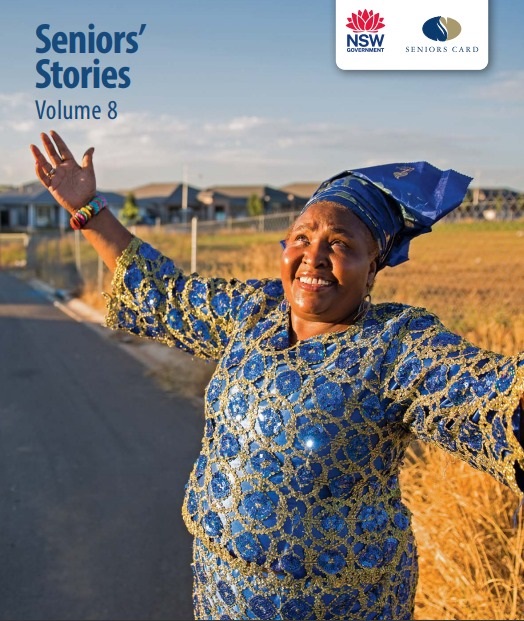
More Ways For Seniors To Stay Connected
- Aboriginal and Torres Strait Islander people aged 50 years and over
- Seniors from culturally and linguistically diverse (CaLD) backgrounds
- Seniors who are carers
- Seniors from culturally and linguistically diverse (CaLD) backgrounds
- Seniors living with disability, dementia, chronic disease or mental illness
- Seniors from culturally and linguistically diverse (CaLD) backgrounds
- Seniors living with disability, dementia, chronic disease or mental illness
Have Your Say On Strengthening Quality In Aged Care
Freshie Masters Carnival - Saturday 19 November

Tobias Breider & Grace Kim Perform Forgotten Romance

AvPals Training Term 4 2022 At Newport
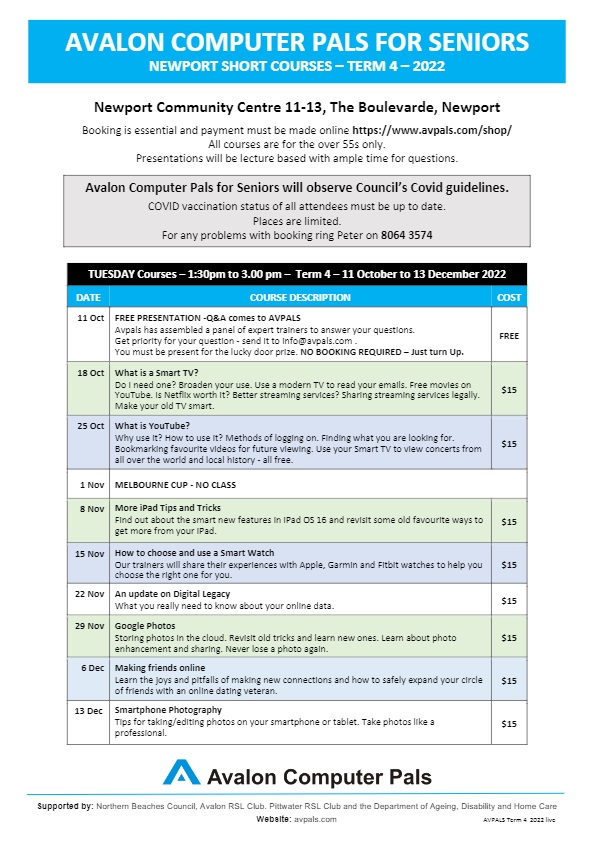
Scams Awareness Week 2022
- Scamwatch Report Form: If you’ve come across a scam you can report it here.
- Scamwatch reporting statistics: Provides up-to-date statistics on scams reported by Australians.
- Targeting Scams Reports: Our yearly report on scam trends and statistics.
- Helping a friend or family member who is a victim to a scam: Useful information if someone close to you has been scammed.
- Be Safe, Be Alert Online: Information on organisations who may be able to help when someone has been scammed.
- Where else to get help: Other organisations who might be able to help when someone has fallen victim to a scam.
- Little Black Book of Scams: Information on identifying a scam (available digitally in a range of languages).
- Protect yourself against scams
- Online shopping and banking
- Helpful apps for your smart device
- How to use home smart technology
- Selling safely online

Does picking your nose really increase your risk of dementia?

Research Checks interrogate newly published studies and how they’re reported in the media. The analysis is undertaken by one or more academics not involved with the study, and reviewed by another, to make sure it’s accurate.
No matter your age, we all pick our nose.
However, if gripping headlines around the world are a sign, this habit could increase your risk of Alzheimer’s disease, the most common form of dementia.
One international news report said:
‘SCARY EVIDENCE’ How a common habit could increase your risk of Alzheimer’s and dementia
Another ran with:
Alzheimer’s disease risk increased by picking your nose and plucking hair, warns study
An Australian news article couldn’t resist a pun:
Could picking your nose lead to dementia? Australian researchers are digging into it.
Yet if we look at the research study behind these news reports, we may not need to be so concerned. The evidence connecting nose picking with the risk of dementia is still rather inconclusive.
What Prompted These Headlines?
Queensland researchers published their study back in February 2022 in the journal Scientific Reports.
However, the results were not widely reported in the media until about eight months later, following a media release from Griffith University in late October.
The media release had a similar headline to the multiple news articles that followed:
New research suggests nose picking could increase risk for Alzheimer’s and dementia
The media release clearly stated the research was conducted in mice, not humans. But it did quote a researcher who described the evidence as “potentially scary” for humans too.
What The Study Did
The researchers wanted to learn more about the role of Chlamydia pneumoniae bacteria and Alzheimer’s disease.
These bacteria have been found in brains of people with Alzheimer’s, although the studies were completed more than 15 years ago.
This bacteria species can cause respiratory infections such as pneumonia. It’s not to be confused with the chlamydia species that causes sexually transmitted infections (that’s C. trachomatis).
The researchers were interested in where C. pneumoniae went, how quickly it travelled from the nose to the brain, and whether the bacteria would create a hallmark of Alzheimer’s disease found in brain tissue, the amyloid β protein.
So they conducted a small study in mice.

The researchers injected C. pneumoniae into the noses of some mice and compared their results to other mice that received a dose of salty water instead.
They then waited one, three, seven or 28 days before euthanising the animals and examined what was going on in their brains.
What The Study Found
Not surprisingly, the researchers detected more bacteria in the part of the brain closest to the nose in mice that received the infectious dose. This was the olfactory brain region (involved in the sense of smell).
Mice that had the bacteria injected into their noses also had clusters of the amyloid β protein around the bacteria.
Mice that didn’t receive the dose also had the protein present in their brains, but it was more spread out. The researchers didn’t compare which mice had more or less of the protein.
Finally, the researchers found that gene profiles related to Alzheimer’s disease were more abundant in mice 28 days after infection compared with seven days after infection.
How Should We Interpret The Results?
The study doesn’t actually mention nose-picking or plucking nose hairs. But the media release quoted one of the researchers saying this was not a good idea as this could damage the nose:
If you damage the lining of the nose, you can increase how many bacteria can go up into your brain.
The media release suggested you could protect your nose (by not picking) and so lower your risk of Alzheimer’s disease. Again, this was not mentioned in the study itself.
At best the study results suggest infection with C. pneuomoniae can spread rapidly to the brain – in mice.
Until we have more definitive, robust studies in humans, I’d say the link between nose picking and dementia risk remains low. – Joyce Siette
Blind Peer Review
Nose picking is a life-long common human practice. Nine in ten people admit doing it.
By the age of 20, some 50% of people have evidence of C. pneumoniae in their blood. That rises to 80% in people aged 60-70.
But are these factors connected? Does one cause the other?
The study behind these media reports raises some interesting points about C. pneumoniae in the nasal cavity and its association with deposits of amyloid β protein (plaques) in the brain of mice – not humans.
We cannot assume what happens in mice also applies to humans, for a number of reasons.
While C. pneumoniae bacteria may be more common in people with late-onset Alzheimer’s disease, association with the hallmark amyloid plaques in the mouse study does not necessarily mean one causes the other.
The mice were also euthanised at a maximum of 28 days after exposure, long before they had time to develop any resultant disease. This is not likely anyway, because mice do not naturally get Alzheimer’s.
Even though mice can accumulate the plaques associated with Alzheimer’s, they do not display the memory problems seen in people.
Some researchers have also argued that amyloid β protein deposits in animals are different to humans, and therefore might not be suitable for comparison.
So what’s the verdict?
Looking into risk factors for developing Alzheimer’s is worthwhile.
But to suggest picking your nose, which introduces C. pneumoniae into the body, may raise the risk of Alzheimer’s in humans – based on this study – is overreach. – Mark Patrick Taylor![]()
Joyce Siette, Research Theme Fellow, Western Sydney University
This article is republished from The Conversation under a Creative Commons license. Read the original article.
How To Get The Commonwealth Seniors Health Card
- Cheaper prescription medicines: Those listed under the PBS are subsidised by the federal government.
- Bulk-billed doctor visits: At the discretion of the doctor.
- Access to the Extended Medicare Safety Net (EMSN) Concessional benefit: This gives you a better Medicare refund for any out-of-hospital costs during a calendar year. The 2022 threshold amount for out-of-pocket hospital costs is $717.90. If you exceed this, you will be refunded 80 per cent of the amount or the EMSN benefit caps for hospital services. More information at the Medicare website.
- Additional concessions from state and local governments: Depending on where you live, these concessions can lower your electricity and gas bills, property and water rates, health care costs and public transport fares.
- Taxable income
- Target foreign income
- Total net investment losses
- Employer-provided benefits
- Reportable superannuation contributions
Updown girl: DNA research shows ancient Britain was more diverse than we imagined

When you imagine life for ordinary people in ancient Britain, you’d be forgiven for picturing quaint villages where everyone looked and spoke the same way. But a recent study could change the way historians think about early medieval communities.
Most of what we know about English history after the fall of the Roman Empire is limited to archaeological finds. There are only two contemporary accounts of this post Roman period. Gildas (sixth century) and Bede (eighth century) were both monks who give narrow descriptions of invasion by people from the continent and neither provide an objective account.
My team’s study, published in Nature, changes that. We analysed DNA from the remains of 460 people from sites across northern Europe and found evidence of mass migration from Europe to England and movement of people from as far away as West Africa. Our study combined information from artefacts and human remains.
That meant we could dig deeper into the data to explore the human details of migration.
Journey Into England’s Past
This paper found that about 76% of the genetic ancestry in the early medieval English population we studied originated from what is today northern Germany and southern Scandinavia – continental northern European (CNE). This number is an average taken from 278 ancient skeletons sampled from the south and east coasts of England. It is strong evidence for mass migration into the British Isles after the end of Roman administration.
One of the most surprising discoveries was the skeleton of a young girl who died at about ten or 11 years of age, found in Updown near Eastry in Kent. She was buried in typical early seventh-century style with a finely made pot, knife, spoon and bone comb. Her DNA, however, tells a more complex story. As well as 67% CNE ancestry, she also had 33% West African ancestry. Her African ancestor was most closely related to the modern day Esan and Yoruda population in southern Nigeria.
Evidence of far-reaching commercial connections with Kent at this time are known. The garnets in many brooches found in this this region came from Afghanistan for example. And the movement of the Updown girl’s ancestors was likely linked to these ancient trading routes.
Keeping It In The Family
Two women buried close by were sisters and had predominantly CNE ancestry. They were related to Updown girl – perhaps her aunts. The fact that all three were buried in a similar way, with brooches, buckles and belt hangers, suggests the people who buried them chose to highlight similarities between Updown girl and her older female relatives when they dressed them and located the burials close together. They treated her as kin, as a girl from their village, because that is what she was.
The aunts also shared a close kinship with a young man buried with artefacts that implied some social status, including a spearhead and buckle. The graves of these four people were all close together. They were buried in a prominent position marked by small barrow mounds (ancient burial places covered with a large mound of earth and stones). The visibility of this spot, combined with their dress and DNA marks these people as part of an important local family.
The site studied in most detail – Buckland, near Dover in Kent – had kinship groups that spanned at least four generations.

One family group with CNE ancestry is remarkable because of how quickly they integrated with western British and Irish (WBI) people. Within a few generations, traditions had merged between people born far away from each other. A 100% WBI woman had two daughters with a 100% CNE man. WBI ancestry entered this family again a generation later, in near 50/50 mixed-ancestry grandchildren. Objects including similar brooches and weapons were found in graves on both sides of this family, indicating shared values between people of different ancestries.
This family was buried in graves close together for three generations. That is until a woman from the third generation was buried in a different cluster of graves, to the north of the family group. One of her children, a boy, died at about eight to ten years of age. He was buried in the cluster of graves that included his maternal grandparents and their close family and she laid her youngest child to rest in a grave surrounded by her family. But when the mother died, her adult children chose a spot close to their father for her grave. They considered her part of the paternal side of the family.
Another woman from Buckland had a unique haplotype, a set of DNA variants that tend to be inherited together. Both males and females inherit their haplogroup from their mothers. So her DNA suggests she had no maternal family in the community she was buried with.
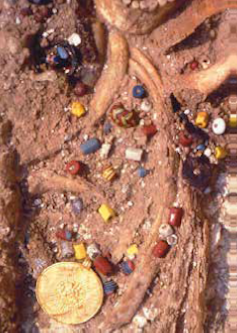
The chemical isotopes, from her teeth and bones indicate she was not born in Kent but moved there when she was 15-25 years old. An ornate gold pendant, called a bracteate, which may have been of Scandinavian origin, was found in her grave.
This suggests she left home from Scandinavia in her youth, and her mother’s family did not travel with her. She very likely had an exogamous marriage (marriage outside of your social group).
What is striking is the physical distance that this partnership bridged. This woman travelled 700 miles, including a voyage across the North Sea, to start her family.
Rethinking History
These people were migrants and the children of migrants who travelled in the fifth, sixth and seventh centuries. Their stories are of community and intermarriage. The genetic data points to profound mobility within a time of mass migration and the archaeological details help to complete the family histories. Migration did not happen at the same time, nor did it all come from the same place. Early Anglo-Saxon culture was a mixing pot of ideas, intermarriage and movement. This genetic coalescing and cultural diversity created something new in the south and east of England after the Roman empire ended.![]()
Duncan Sayer, Professor in Archaeology, University of Central Lancashire
This article is republished from The Conversation under a Creative Commons license. Read the original article.
Preventing Drowning By Improving Beach Safety Signage
- Messages in the languages of the people who are at most risk of coastal drowning
- Photos, not just symbols, of dangers such as jellyfish to improve messaging for non-English speakers
- Clear explanation of what the hazard is such as poison or sting
- Clearer colour coding: many safety signs are yellow whereas red indicates greatest dangers to many communities
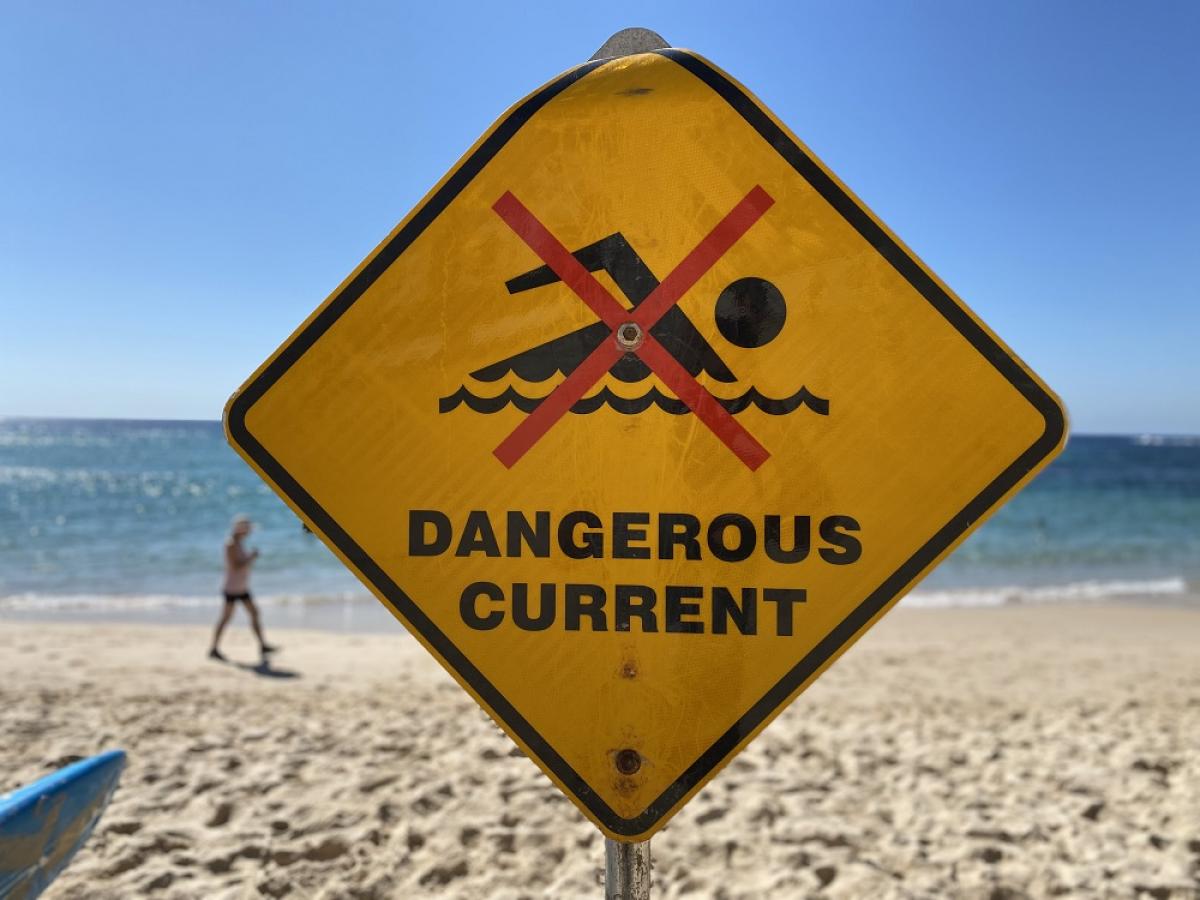
Feeling bloated, hungry or bored after salad? These tips might help

Salads are great for our health.
They are nutritious, packed full of gut-loving fibre, micronutrients, vitamins, minerals and antioxidants.
However, some people can experience certain downsides to eating salad after salad, including feeling bored, bloated or even still hungry.
Here are some tips to help you make the most of your salad-eating habits as the weather warms up.

Keep Yourself Fuller For Longer
Salads are naturally low in calories or kilojoules. This is because salads mostly contain vegetables, which have a high water content.
This may mean you don’t feel very satisfied after eating your salad – making it hard to stay full until your next meal.
Instead of eating a salad and then later reaching for something less healthy to fill up on, you can stay fuller for longer by including all three macronutrients in your salad:
a healthy carbohydrate source (pumpkin, sweet potato, parsnips, taro, brown rice, quinoa, barley or brown pasta)
a healthy fat source (avocado, olive oil, toasted seeds or nuts)
a lean protein source (eggs, fish, chicken, tofu, tempeh, lentils or legumes).

Reduce Bloating
Many people experience bloating and/or gut upset when they eat a lot of salad.
This commonly occurs if someone is going quickly from a less healthy, low-fibre diet to a healthier, high-fibre diet.
It happens because your gut microbes are multiplying and producing lots of plant-digesting enzymes (which is great for your gut health!).
However, your gut needs some time to adapt and adjust over time. You can help alleviate any discomfort by:
taking a short walk or doing some stretching after eating your salad. This has been shown to reduce bloating as it loosens up the gut muscles and helps release any trapped gas
being mindful of how you are preparing lentils and legumes. Ensure they are thoroughly rinsed and only include ¼ cup of them (soaked) to begin with if they are something new in your diet
eating your salad mindfully. A non-relaxed, uptight gut or a gut that has recently been irritated by an illness can mean your gut is not as efficient in absorbing gas. This can trigger bloating as the gas gets “trapped”
cooking some of the vegetables in your salad. Applying temperature or heat to your vegetables can help break them down and make them easier to digest
considering your symptoms. If you experience extreme abdominal pain, irregular bowel habits (including chronic diarrhoea or constipation, or alternating diarrhoea and constipation) and a bloated stomach after eating salad it may indicate you are suffering from irritable bowel syndrome (IBS). Please see an accredited practising dietitian who can make an assessment and diagnose IBS, help you identify your triggers and manage your symptoms
being mindful of your current health conditions or treatments. For example, if you are undergoing chemotherapy treatment, some drugs can slow down your digestion. This may mean some vegetables and other high-fibre foods in your salad upset your gut. Again, speaking with an accredited practising dietitian is the best way to receive evidence-based advice on how to manage this.
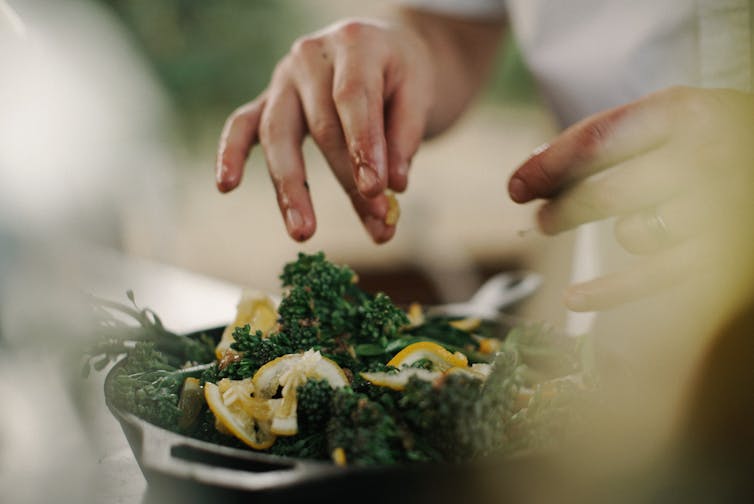
Keep Salad Boredom At Bay
Stuck on what makes a good salad? Here’s Lauren’s tried and tested formula, based on six categories of ingredients:
leaves, such as lettuce, rocket or spinach
something sweet and juicy, such as tomato, pear, mango, peach or whatever is in season
something with crunch, such as carrot, capsicum or broccolini
a type of nut, such as cashew or macadamia
a cheese, such as feta, bocconcini, mature cheddar, parmesan, edam
something fragrant, such as mint, parsley, basil or coriander.
To make the salad into a complete meal, add a healthy carbohydrate, fat and protein source (the three macronutrients we mentioned earlier).
The bottom line? Eating salads is a great way to have a healthy, diverse diet. With these tweaks, you can make the most of the summer weather ahead!![]()
Lauren Ball, Professor of Community Health and Wellbeing, The University of Queensland and Emily Burch, Dietitian and Researcher, The University of Queensland
This article is republished from The Conversation under a Creative Commons license. Read the original article.
Building Brighter Beginnings For NSW Children
- $111.2 million to bring health and development checks to all children in NSW preschool settings in partnership with health professionals;
- $98.7 million to continue and expand the number of Aboriginal Child and Family Centres across the state;
- $70.9 million to expand the transformational Sustaining NSW Families clinical nurse home visiting program;
- $57.2 million to develop the clinical interface of the Digital Baby Book; and
- $38.6 million to make Pregnancy Family Conferencing available to more parents across NSW.


From Centaurus to XBB: your handy guide to the latest COVID subvariants (and why some are more worrying than others)

The Omicron variant of concern has splintered into multiple subvariants. So we’ve had to get our heads around these mutated forms of SARS-CoV-2, the virus that causes COVID-19, including BA.1 and the more recent BA.5.
We’ve also seen recombinant forms of the virus, such as XE, arising by genetic material swapping between subvariants.
More recently, XBB and BQ.1 have been in the news.
No wonder it’s hard to keep up.
The World Health Organization (WHO) has had to rethink how it describes all these subvariants, now labelling ones we need to be monitoring more closely.
What’s The Big Deal With All These Subvariants?
Omicron and its subvariants are still causing the vast majority of COVID cases globally, including in Australia.
Omicron subvariants have their own specific mutations that might make them more transmissible, cause more severe disease, or evade our immune response.
Omicron and its subvariants have pushed aside previous variants of concern, the ones that led to waves of Alpha and Delta earlier in the pandemic.
Now, in Australia, the main Omicron subvariants circulating are BA.2.75, and certain versions of BA.5. More on these later.
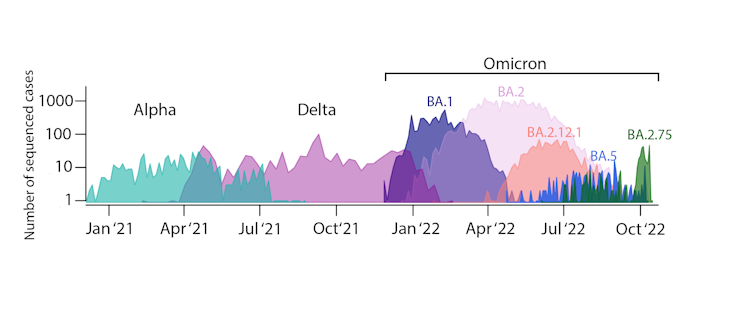
We still don’t fully understand the driving forces behind the emergence and spread of certain SARS-CoV-2 subvariants.
We can, however, assume the virus will keep evolving, and new variants (and subvariants) will continue to emerge and spread in this wave-like pattern.
How Do We Keep Track Of This All?
To monitor these subvariants, the WHO has defined a new category, known as “Omicron subvariants under monitoring”.
These are ones that have specific combinations of mutations known to confer some type of advantage, such as being more transmissible than others currently circulating.
Researchers and health authorities keep track of circulating subvariants by sequencing the genetic material from viral samples (for instance, from PCR testing or from wastewater sampling). They then upload the results to global databases (such as GISAID) or national ones (such as AusTrakka).
These are the Omicron subvariants authorities are keeping a closer eye on for any increased risk to public health.
Newer Versions Of BA.5
The BA.5 subvariant that arose in early February 2022 is still accumulating more mutations.
The WHO is monitoring BA.5 versions that carry at least one of five additional mutations (known as S:R346X, S:K444X, S:V445X, S:N450D and S:N460X) in the spike gene.
The spike gene codes for the part of the virus that recognises and fuses with human cells. We are particularly concerned about mutations in this gene as they might increase the virus’ ability to bind with human cells.
Throughout recent months, BA.5 has been the dominant subvariant in Australia. However, BA.2.75 has now established a foothold.
BA.2.75 Or Centaurus
The BA.2.75 subvariant, sometimes called Centaurus, was first documented in December 2021. It possibly emerged in India, but has been detected around the globe.
This includes in Australia, where more than 400 sequences have been uploaded to the GISAID database since June 2022.
This subvariant has up to 12 mutations in its spike gene. It seems to spread more effectively than BA.5. This is probably due to being better able to infect our cells, and avoiding the immune response driven by previous infection with other variants.
BJ.1
This was first detected in early September 2022 and has a set of 14 spike gene mutations.
It has mostly been detected in India or in infections coming from this area.
We know very little about the impact of its mutations and at the time of writing, there was only one Australian sequence reported.
BA.4.6 Or Aeterna
BA.4.6, sometimes called Aeterna, was detected in January 2022 and has been spreading rapidly in the United States and the United Kingdom.
There have been more than 800 sequences uploaded to the GISAID database in Australia since May 2022.
It may be more easily transmitted from one person to the next due to its spike gene mutations.
Early data suggests it is better able to resist cocktails of therapeutic antibodies compared with BA.5. This makes antibody therapies, such as Evusheld, less effective against it.
BA.2.3.20
This was first detected in the US in August 2022. It has a set of nine mutations in the spike gene, including a rare double mutation (A484R).
Like BA.2.75, this subvariant is probably better able to infect our cells and avoid the immune response driven by previous infection.
There are more than 100 Australian genomic sequences reported in the GISAID database, all from August 2022.
XBB
This recombinant version of the virus was detected in August 2022. It is a result of the swapping of genetic material between BA.2.10.1 and BA.2.75. It has 14 extra mutations in its spike gene compared with BA.2.
Although there have only been 50 Australian genomic sequences reported in GISAID since September, we anticipate cases will rise. Lab studies indicate therapeutic antibodies don’t work so well against it, with XBB showing strong resistance.
Although XBB appears to be able to spread faster than BA.5, there’s no evidence so far it causes more severe disease.
How About BQ.1?
Although it is not on the WHO list of subvariants under monitoring, cases of the BQ.1 subvariant are rising in Australia. BQ.1 contains mutations that help the virus evade existing immunity. This means infection with other subvariants, including BA.5, may not protect you against BQ.1.
In the meantime, your best protection against severe COVID, whichever subvariant is circulating, is to make sure your booster shots are up-to-date. Other ways to prevent SARS-CoV-2 infection include wearing a fitted mask, avoiding crowded spaces with poor ventilation, and washing your hands regularly. ![]()
Ash Porter, Research officer, The Peter Doherty Institute for Infection and Immunity and Sebastian Duchene, Australian Research Council Future Fellow, The University of Melbourne
This article is republished from The Conversation under a Creative Commons license. Read the original article.
New Unusual Bee Species Discovered With Dog-Like Snout In W.A.

Balancing The Autonomy And The Safeguarding Of Vulnerable Adults: New S.A. Report
- Retain the Adult Safeguarding Unit’s (ASU) remit to cover all adults vulnerable to abuse.
- Define the term abuse according to a relationship or situation of trust, power or dependency between the apparent victim and perpetrator.
- Introduce a clear definition in the Act of ‘safeguarding’ that protects an adult’s health, wellbeing and human rights, and enables them to live free from abuse.
- Include within the South Australian Charter of the Rights and Freedoms of Vulnerable Adults the entitlement of both older persons and persons with disability to live and make decisions without coercion, undue influence or psychological abuse.
- Grant the ASU the flexibility to take appropriate ‘safeguarding actions’ to meet the safeguarding aims of the Act and the unique needs of each adult.
- Include guidelines and toolkits to use when determining whether an adult at the subject of a report has the capacity to make decisions.
- Explicitly defining consent as a free and voluntary decision free of coercion or undue influence.

Ancient Genomes Reveal Hidden History Of Human Adaptation
Control Hub For Skin Inflammation Discovered

Top NSW Wine Award Acknowledges A Lifetime Of Service
- Mr Brombal has been undertaking representative roles in wine growing since 1979, as a foundation member of the Hanwood Grape Growers Association.
- In 1989 he was elected to the Wine Grape Marketing Board (now known as Riverina Winegrape Growers), being the Chair from 1998-2019, as well as an executive member of the NSW Wine Industry Association until 2019.
- Mr Brombal has also been the Chairman of national growers body, Winegrape Growers Council of Australia and was involved in the selection panel for the Australian Wine and Brandy Corporation (now known as Wine Australia).
- The Award is named after former NSW Agriculture Deputy Director General Graham Gregory, who was instrumental in the development of the NSW wine industry and is presented retrospectively to an individual who has contributed to the NSW and Australian wine industry.
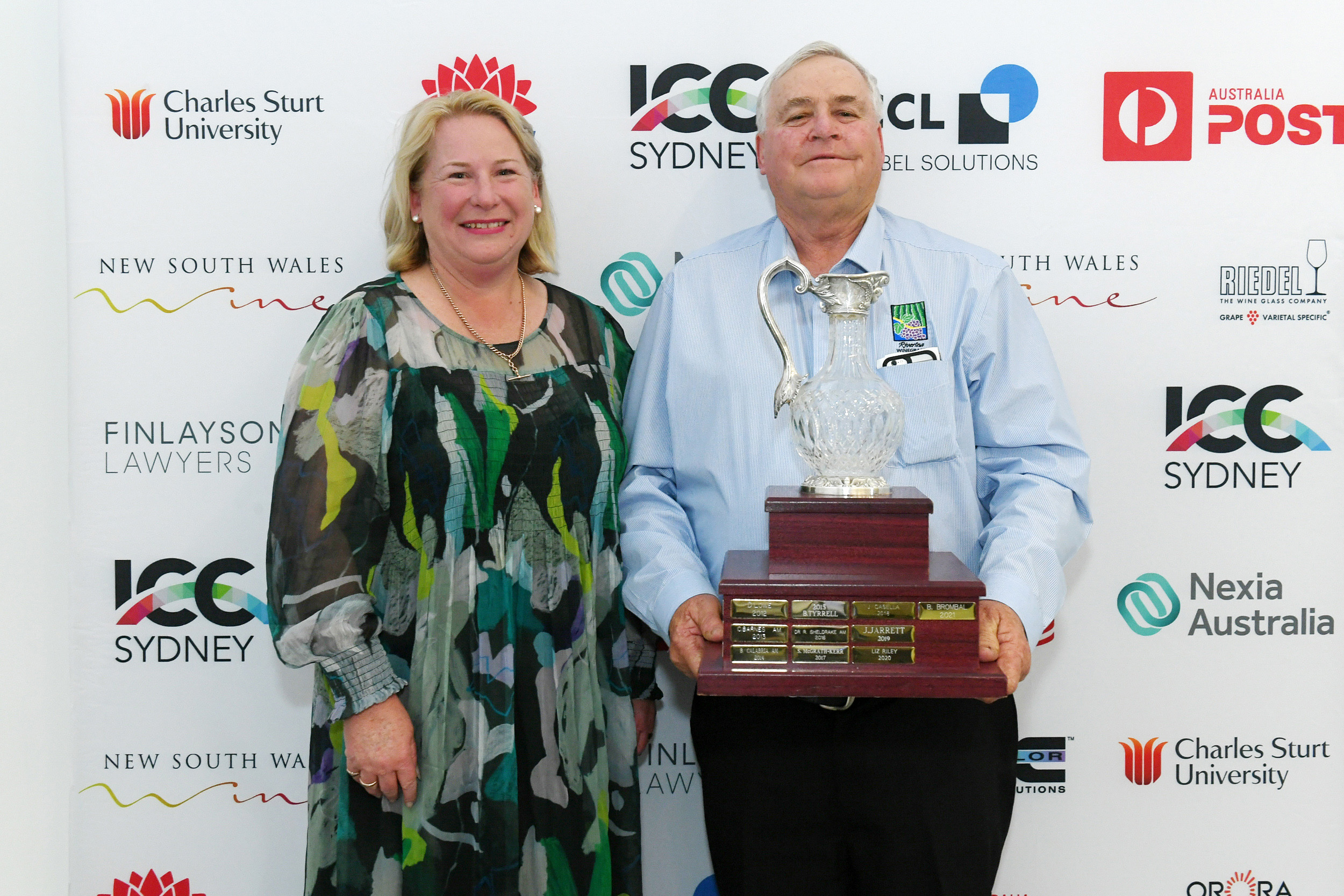
Why Fish Look Down When They Swim
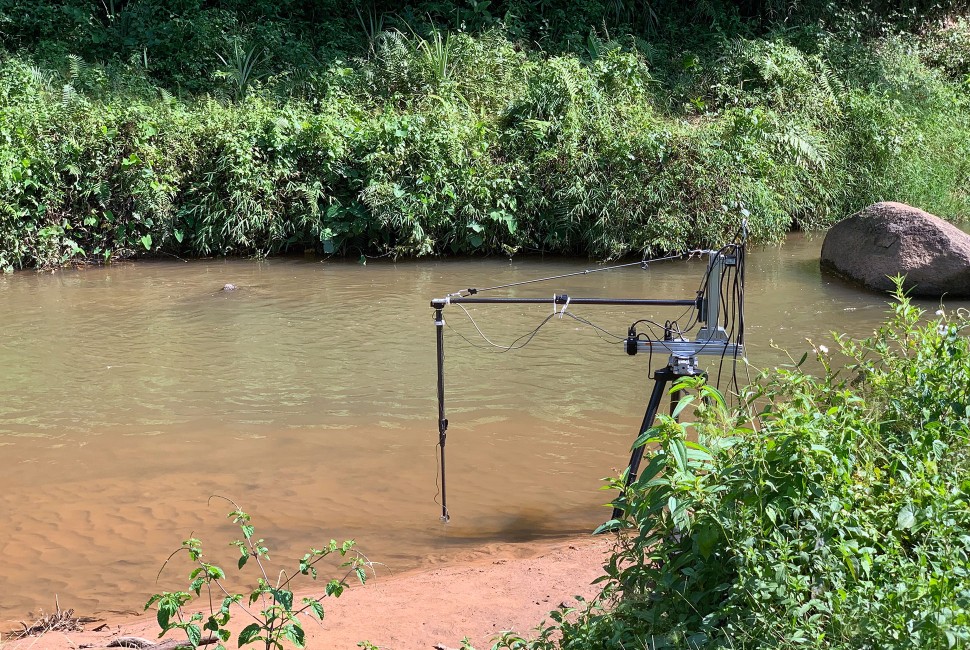
Landmark Package To Recruit, Retain And Better Take Care Of NSW Police
Disclaimer: These articles are not intended to provide medical advice, diagnosis or treatment. Views expressed here do not necessarily reflect those of Pittwater Online News or its staff.
